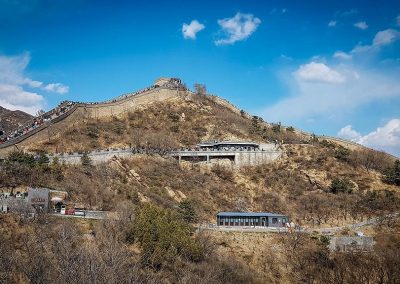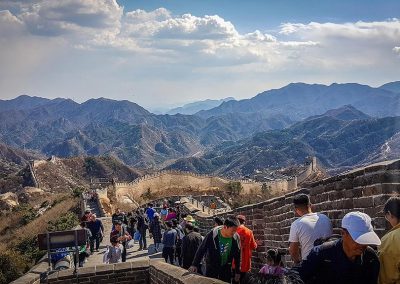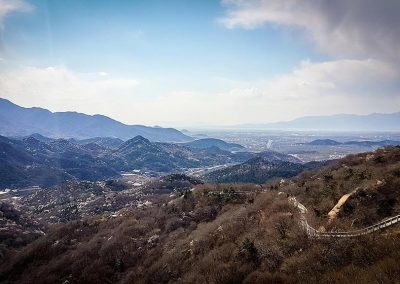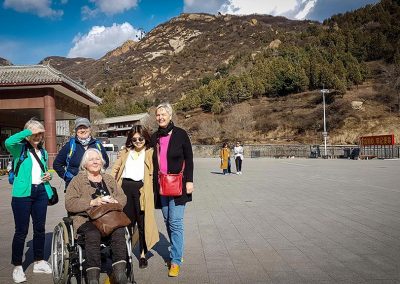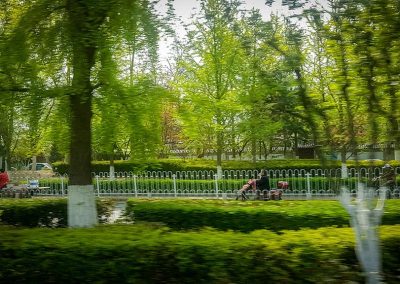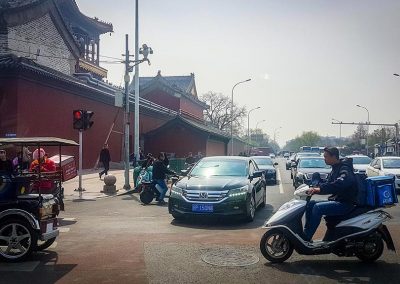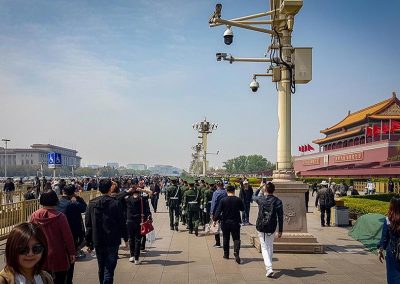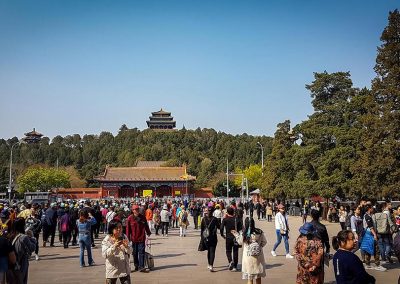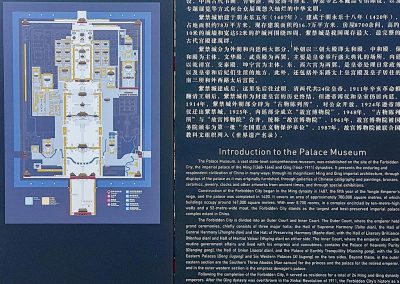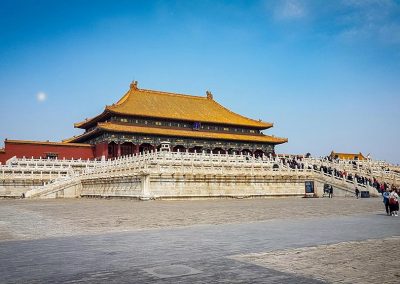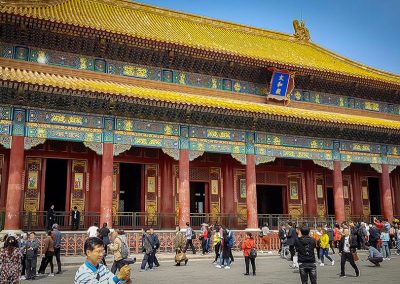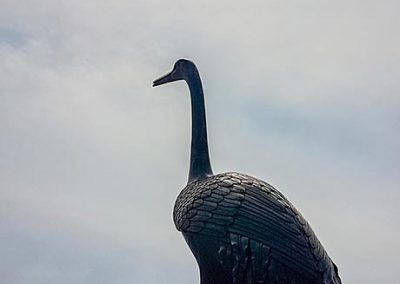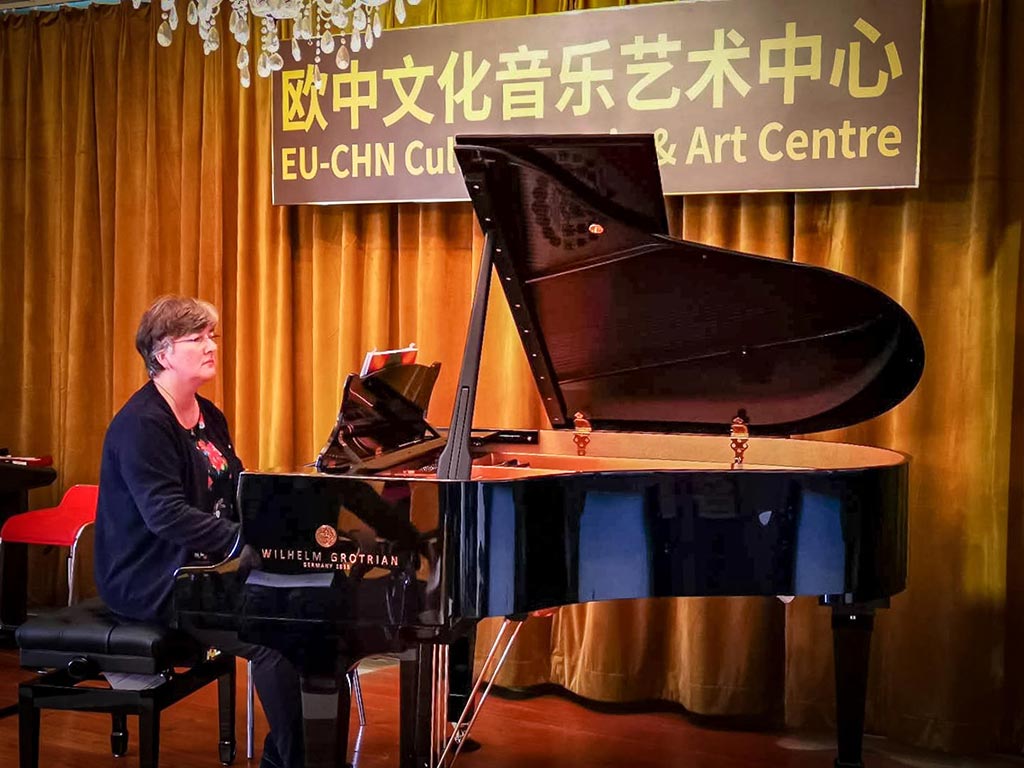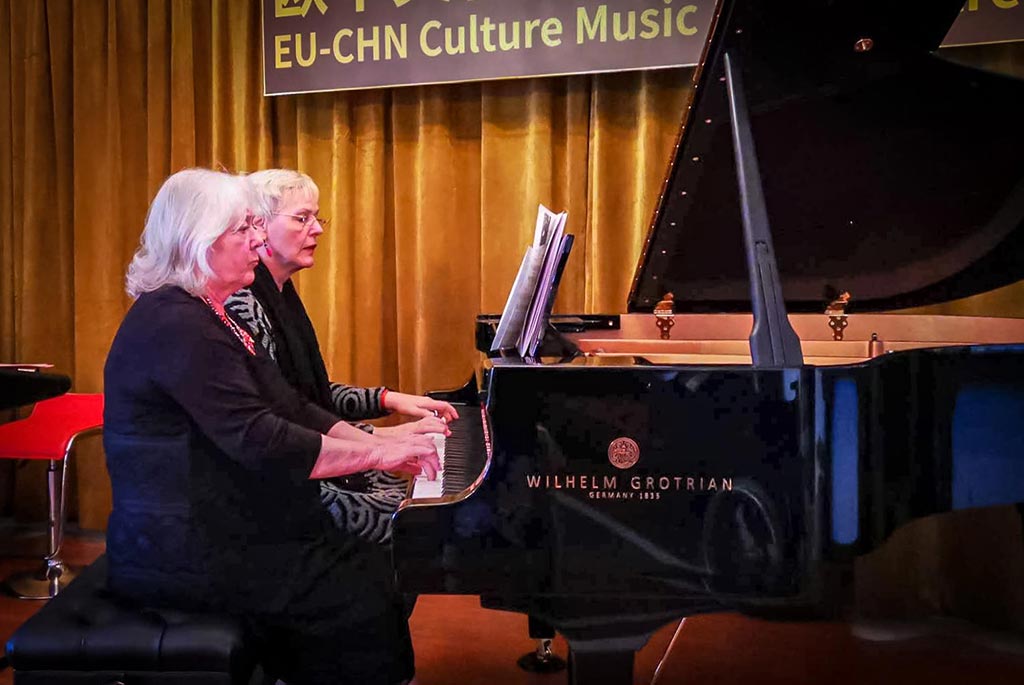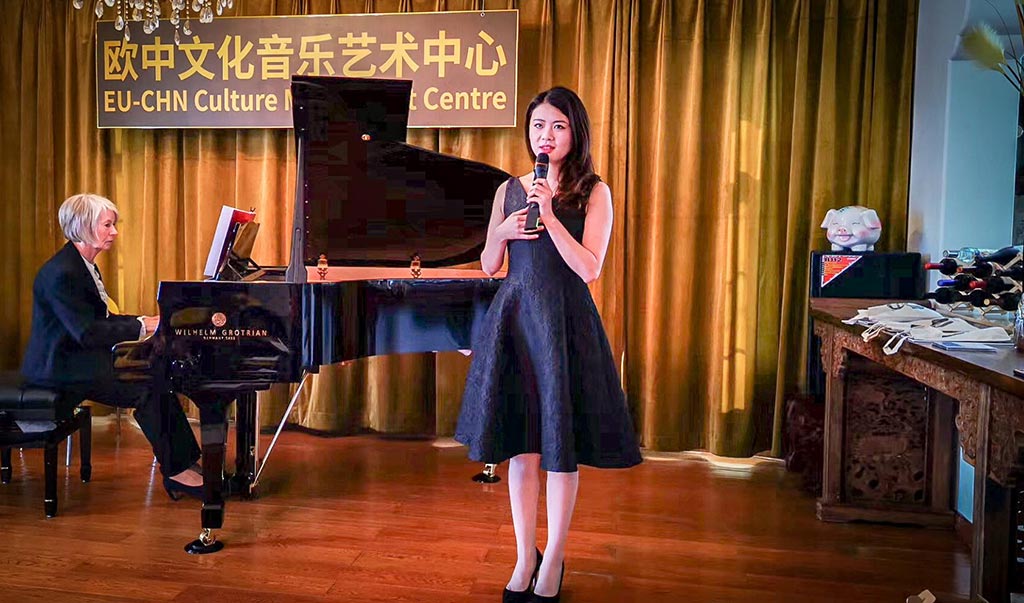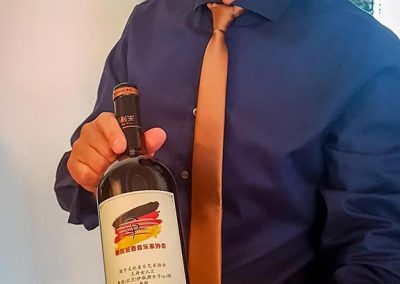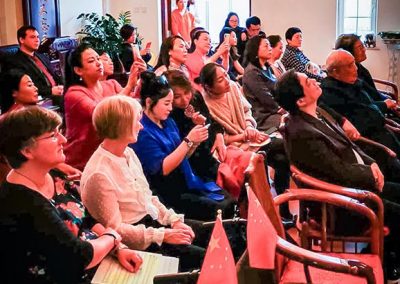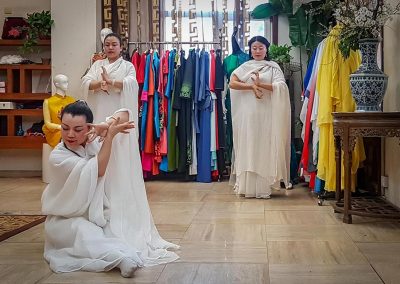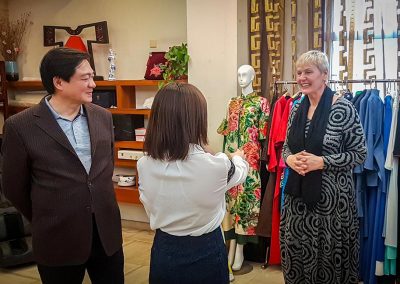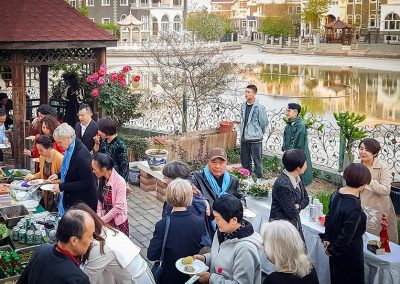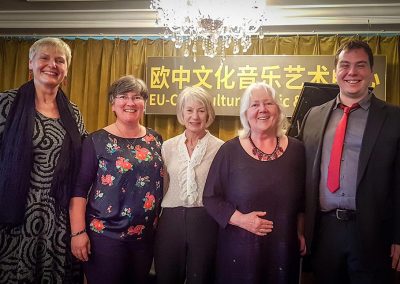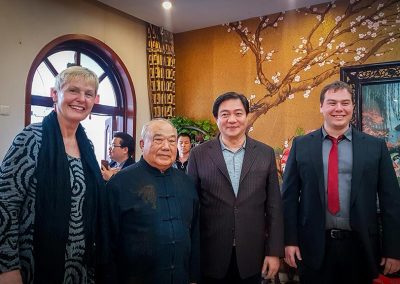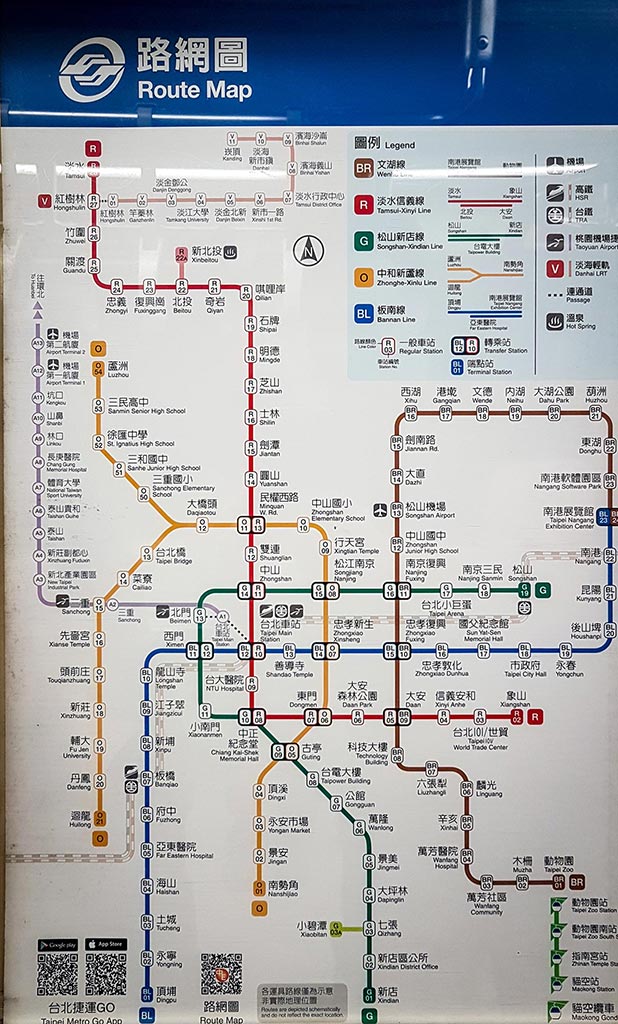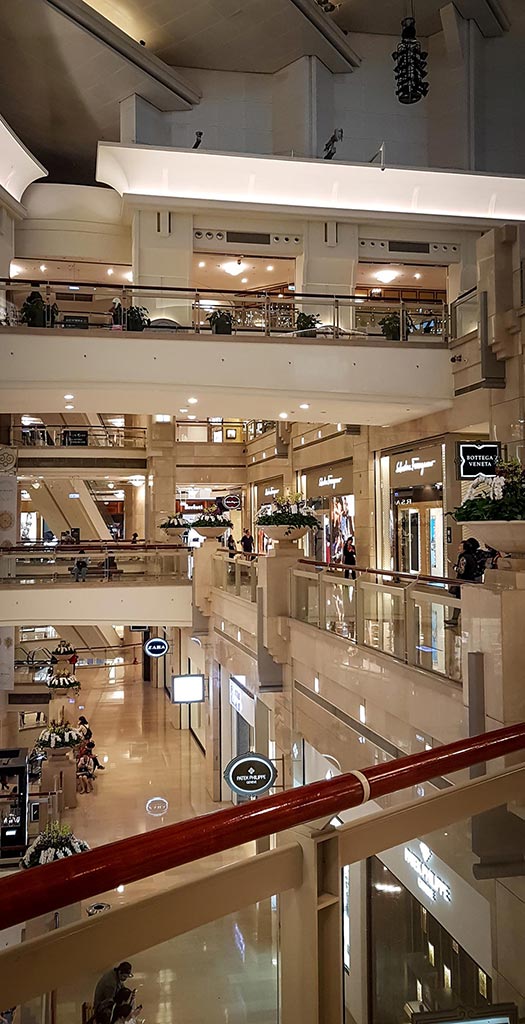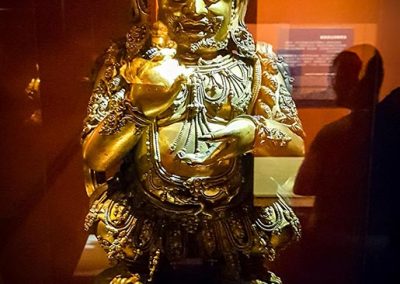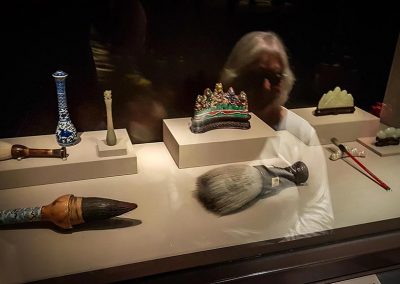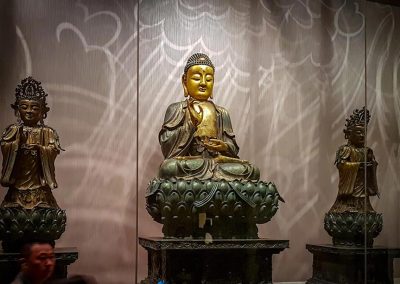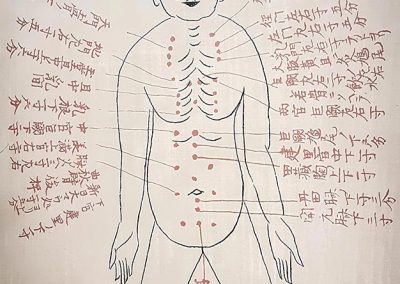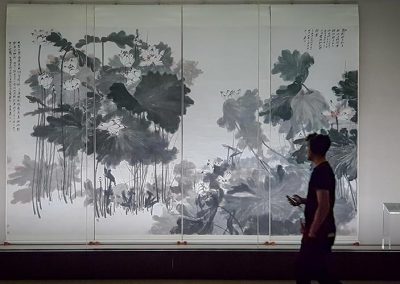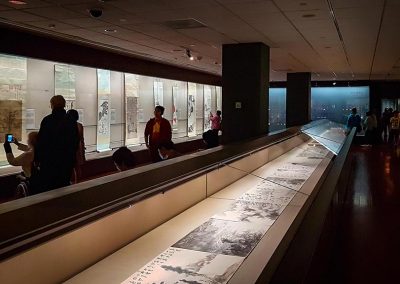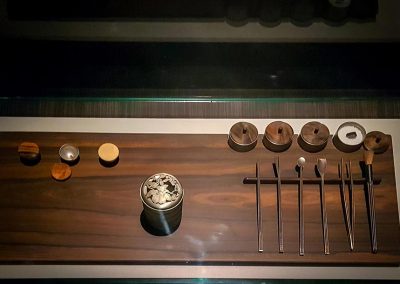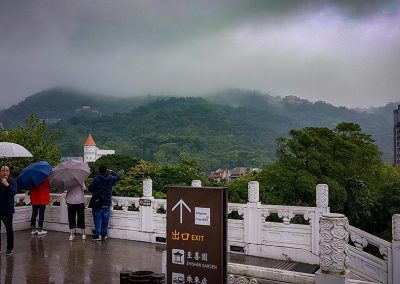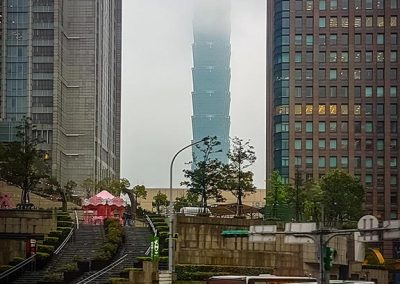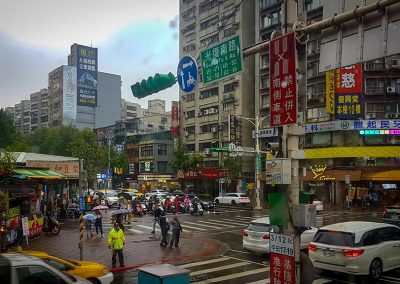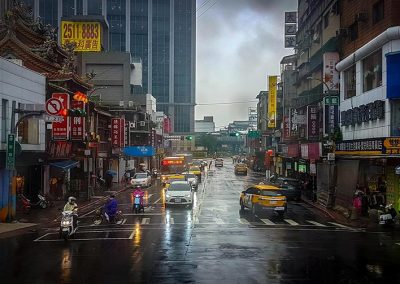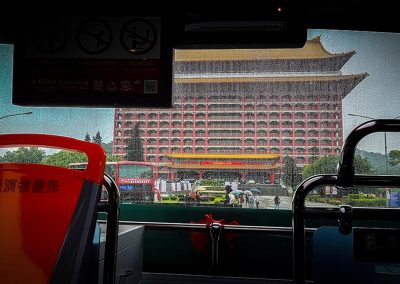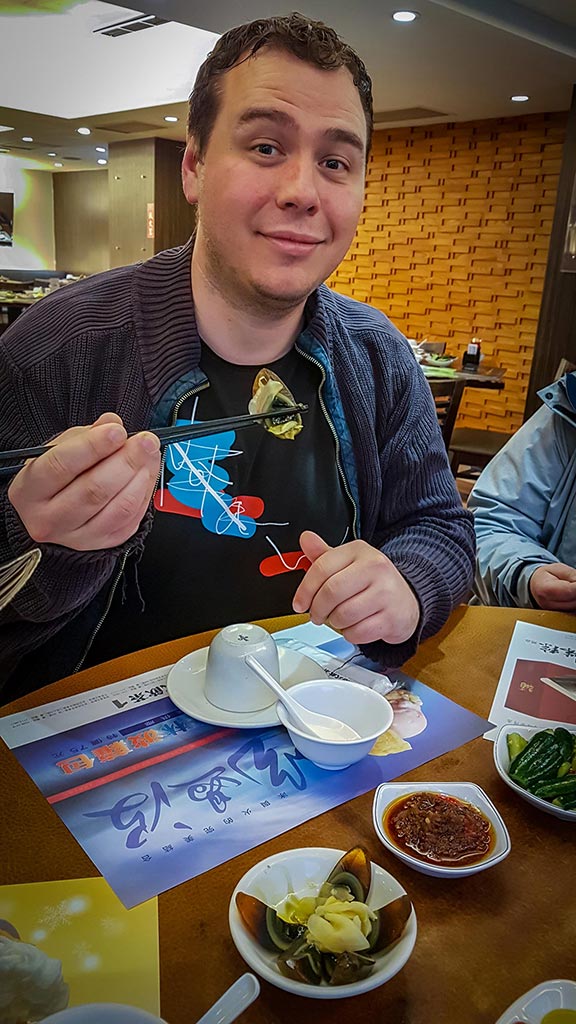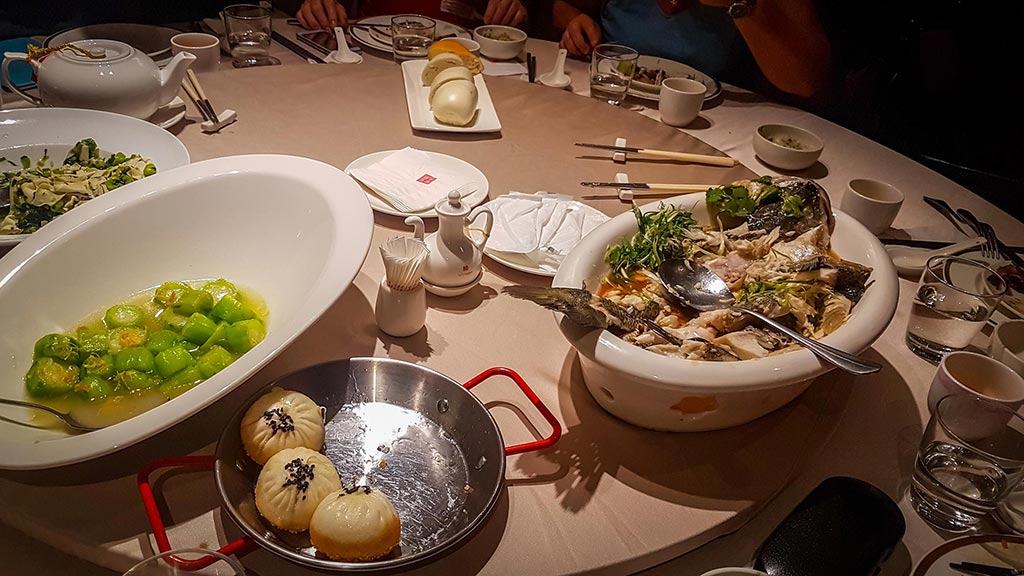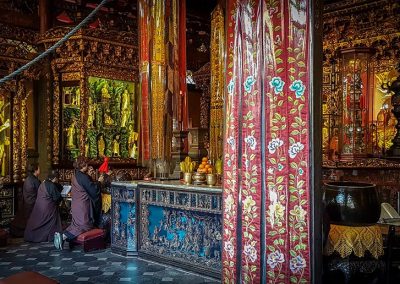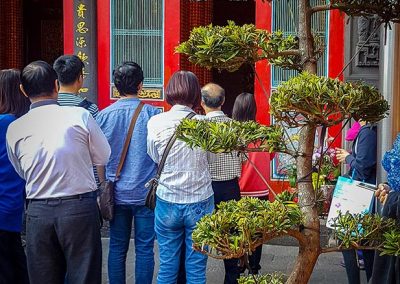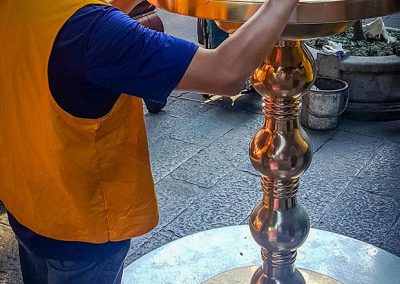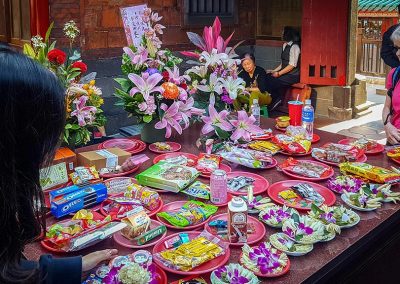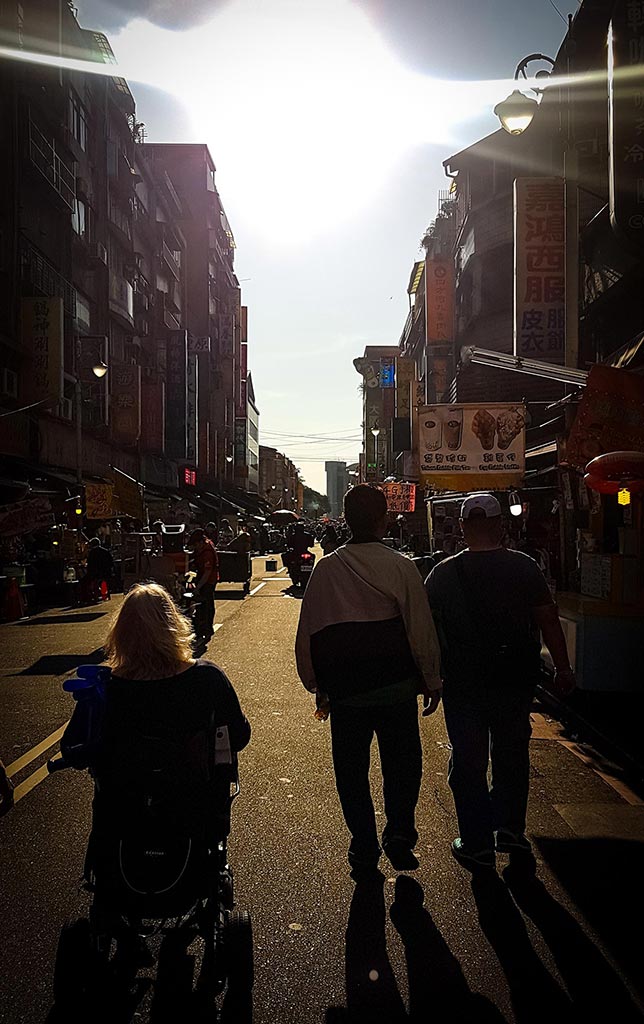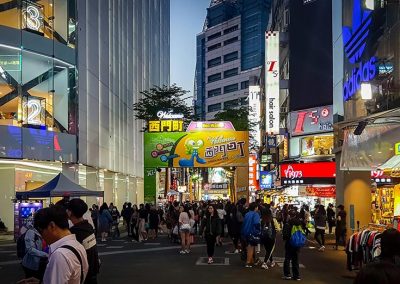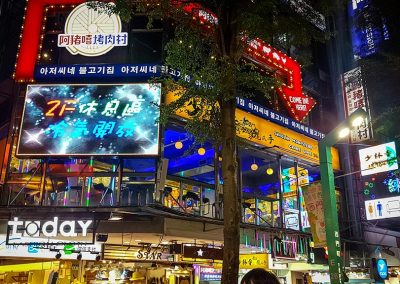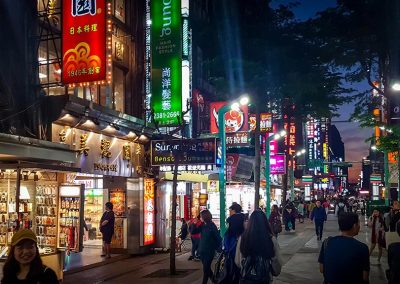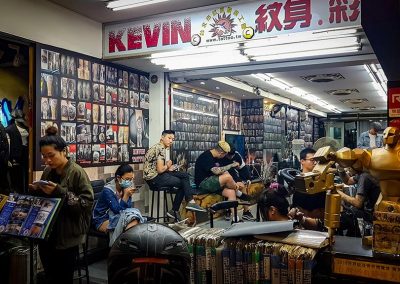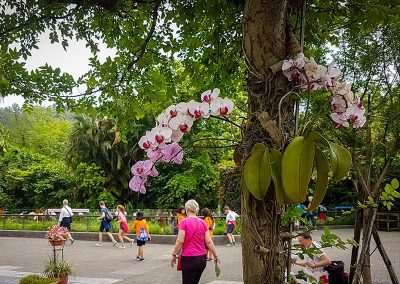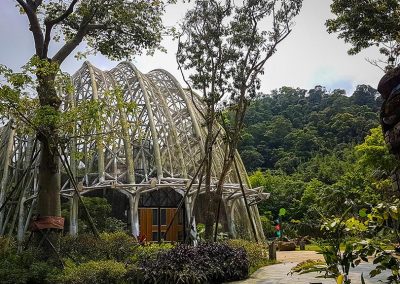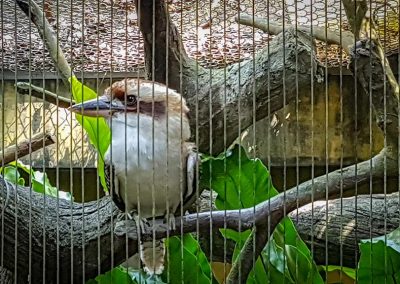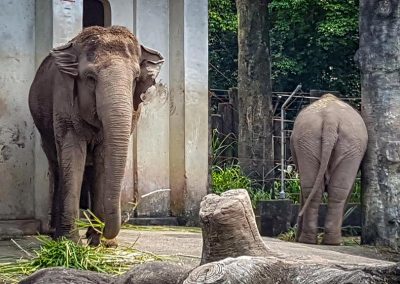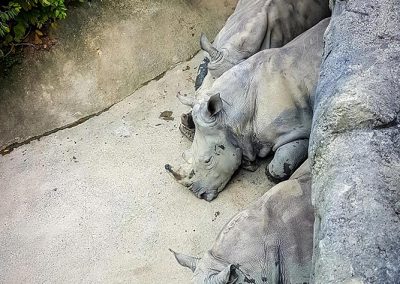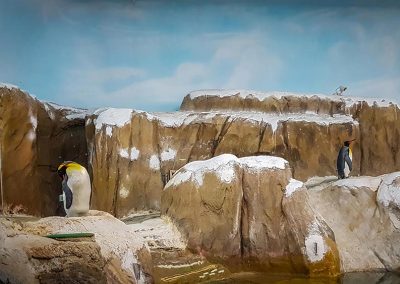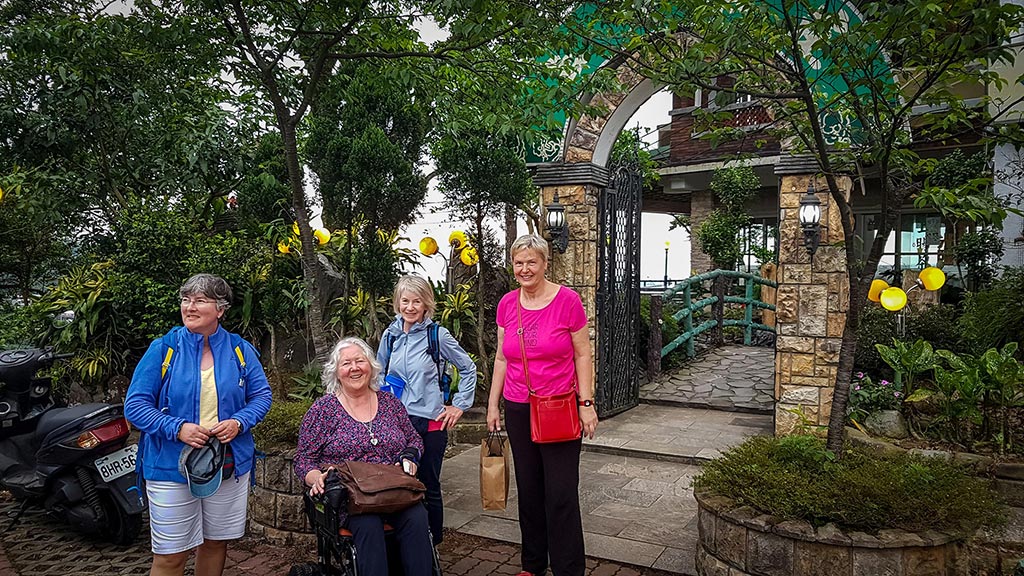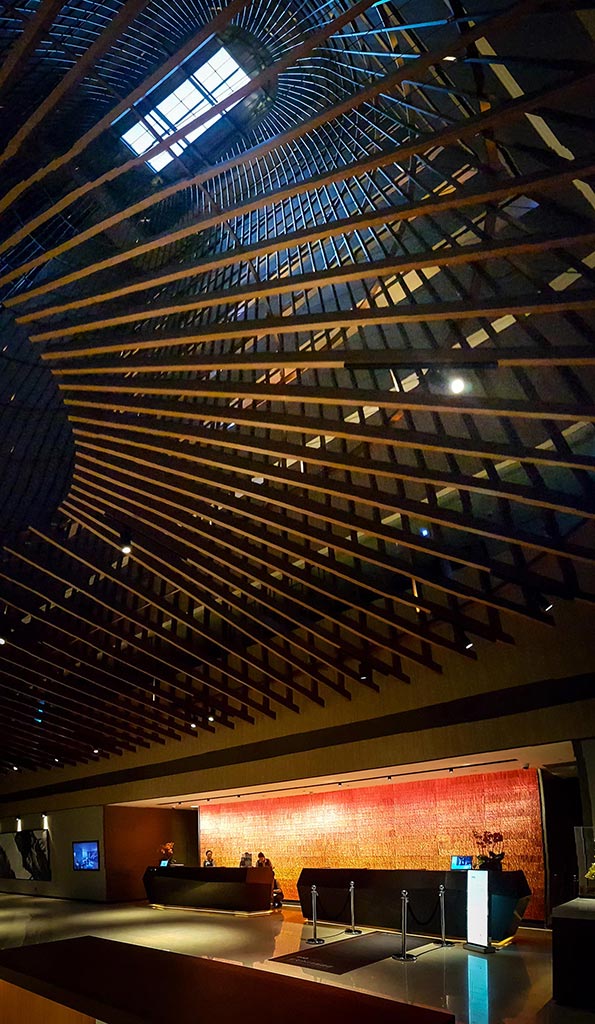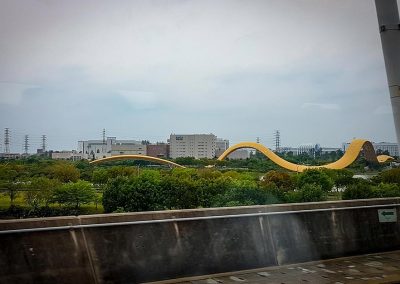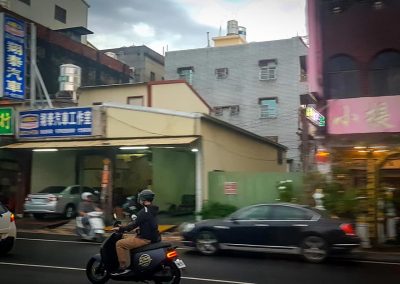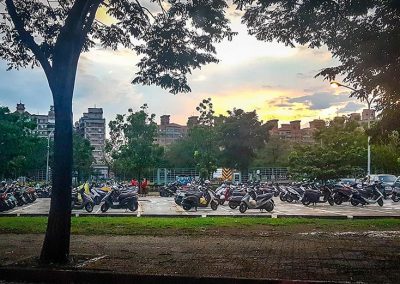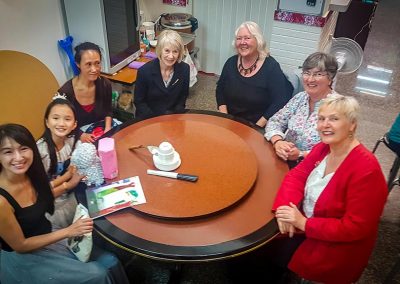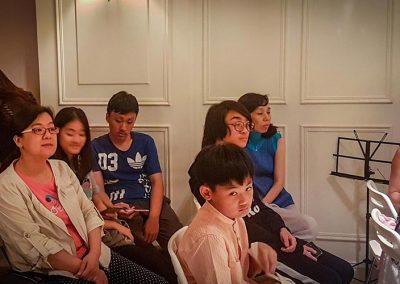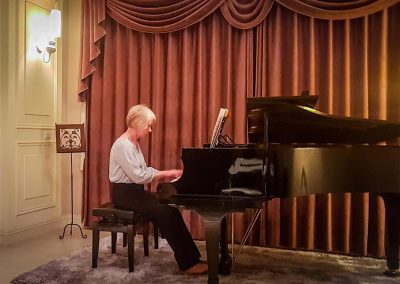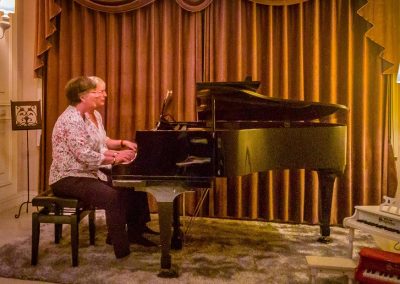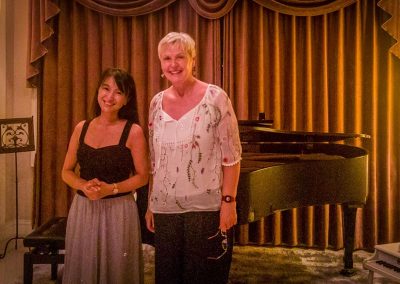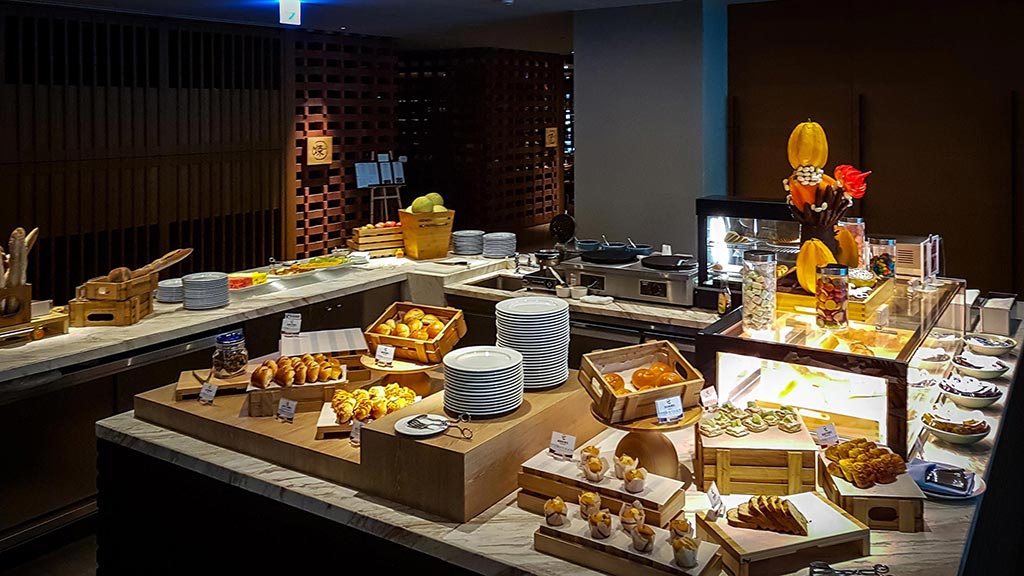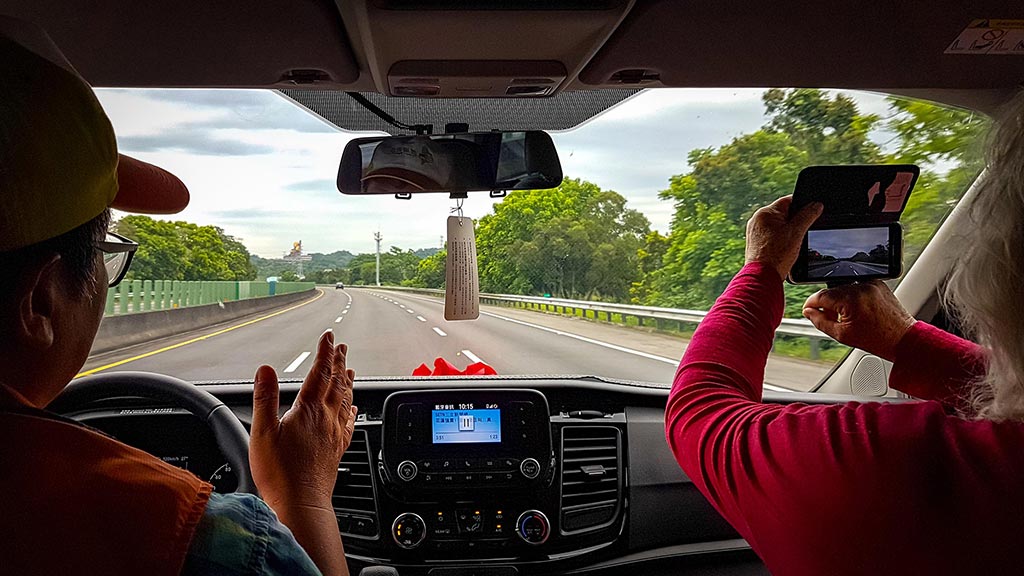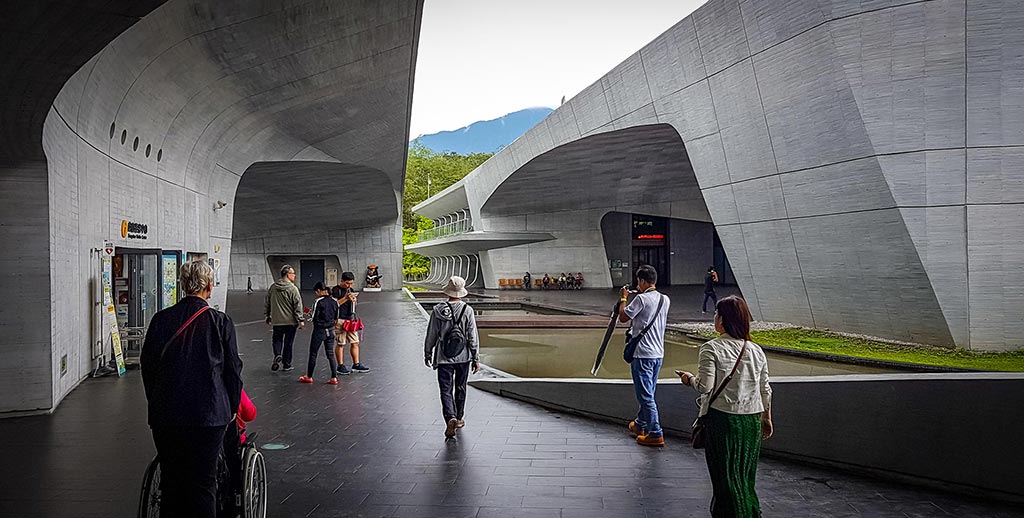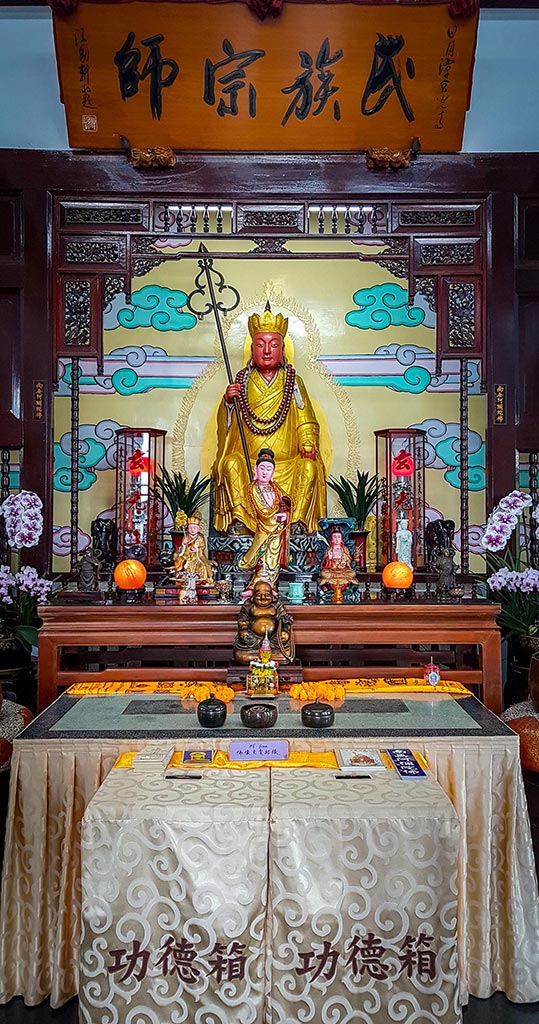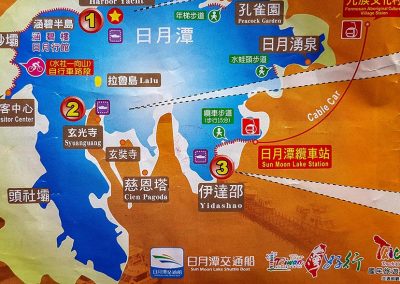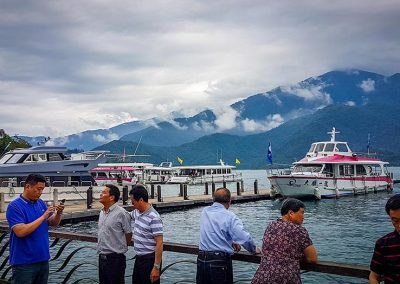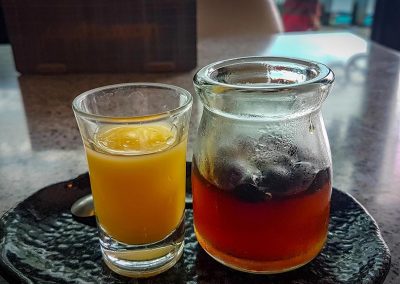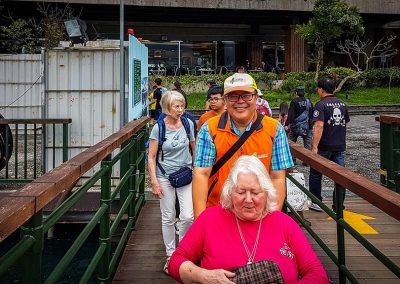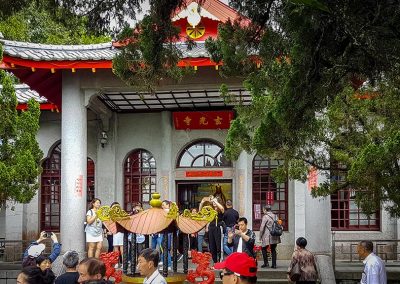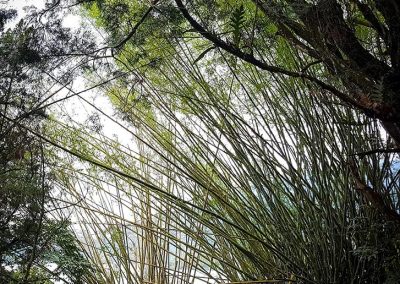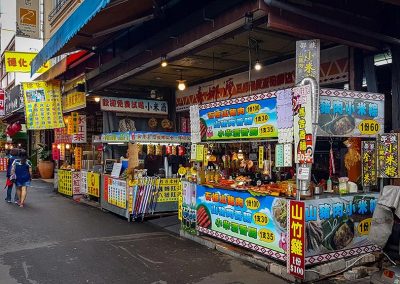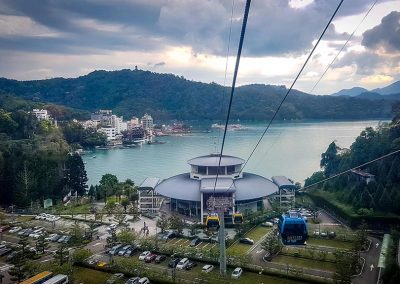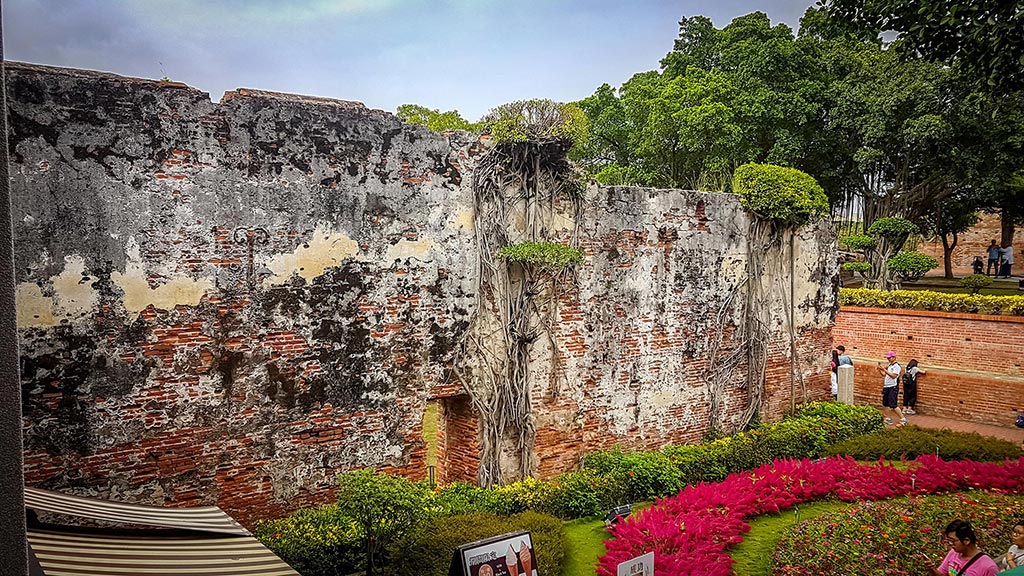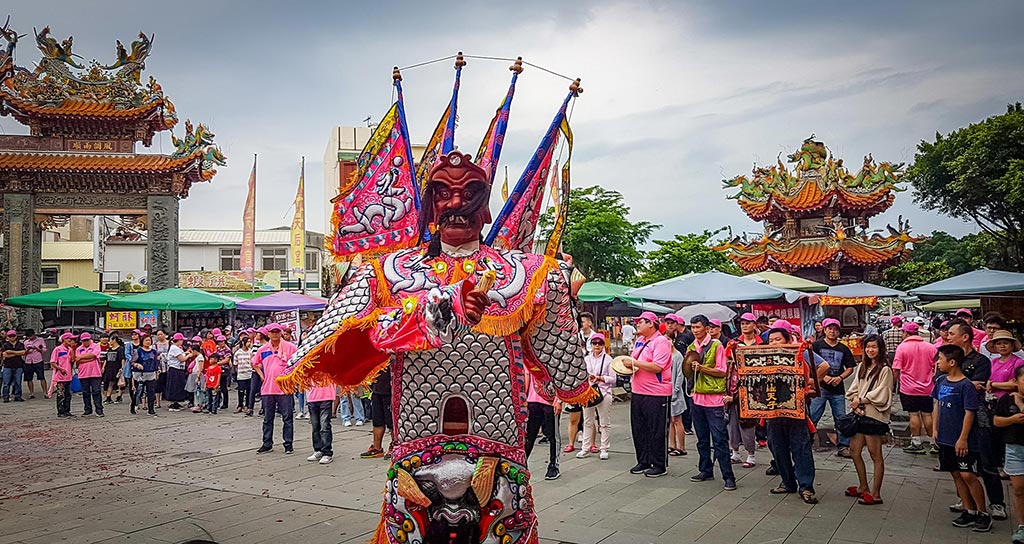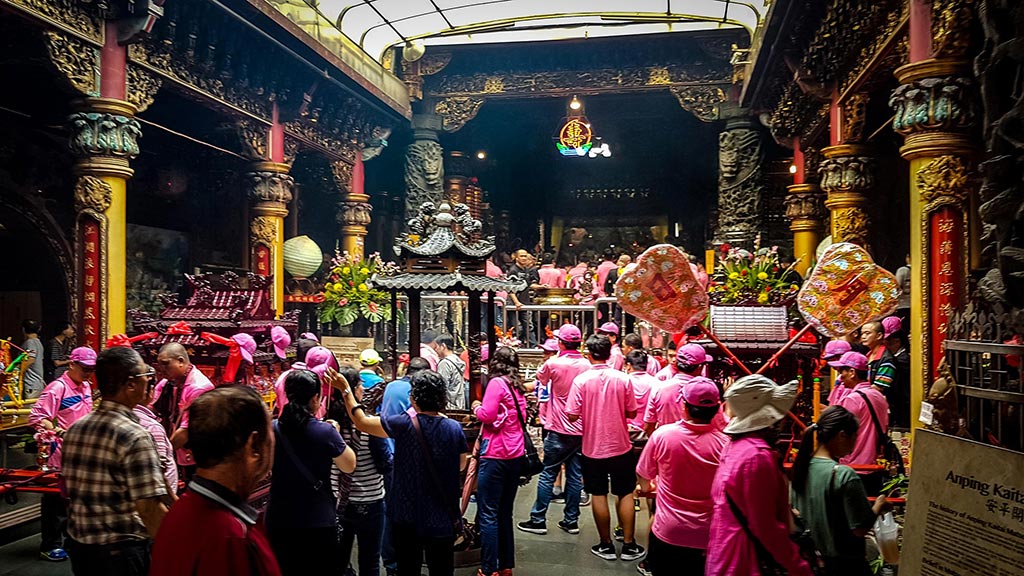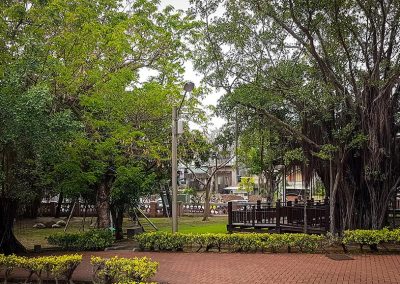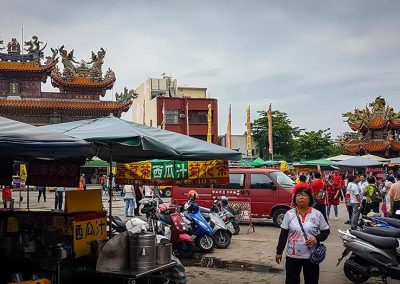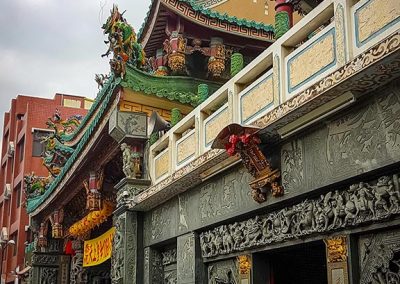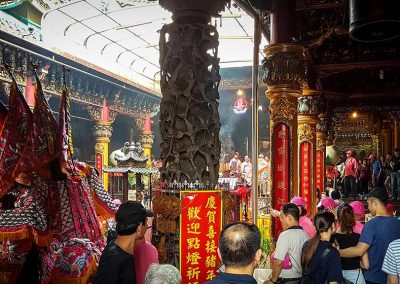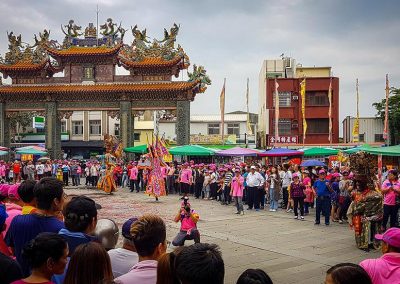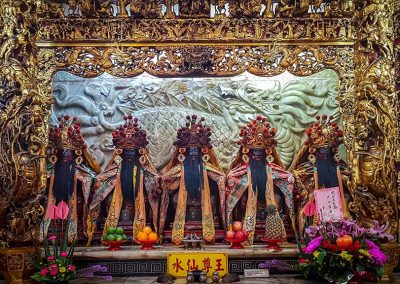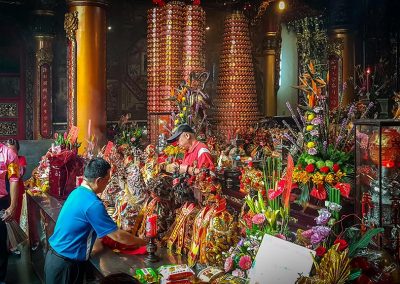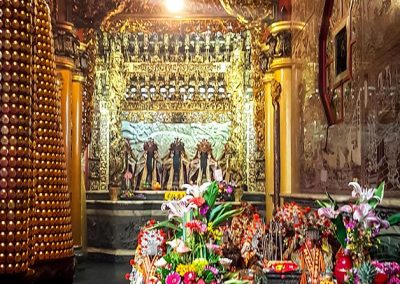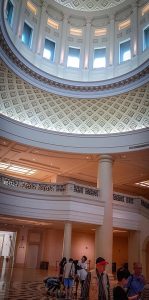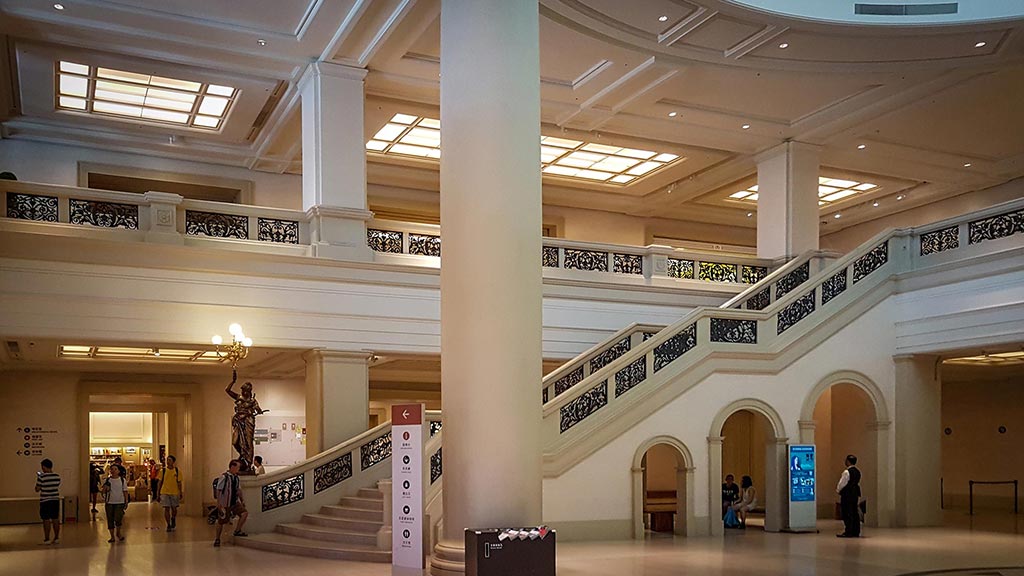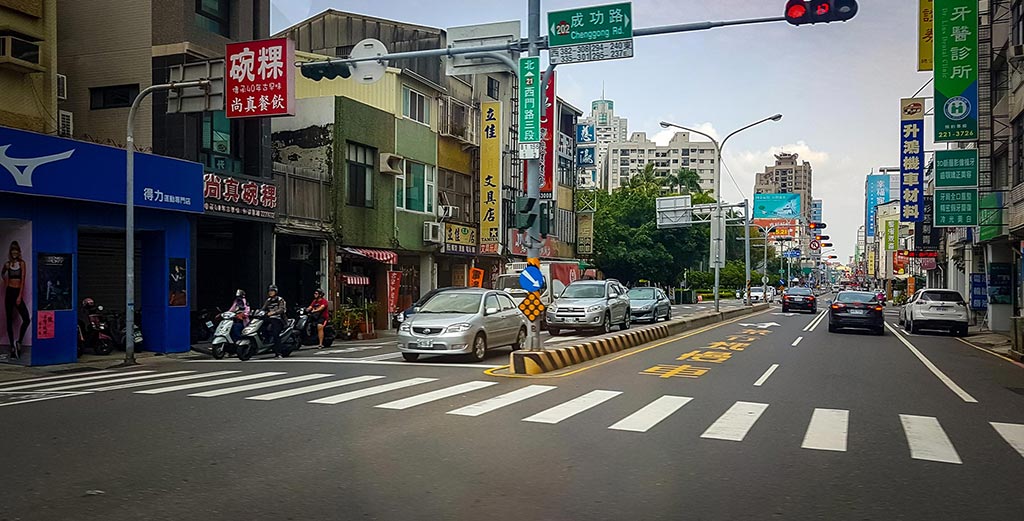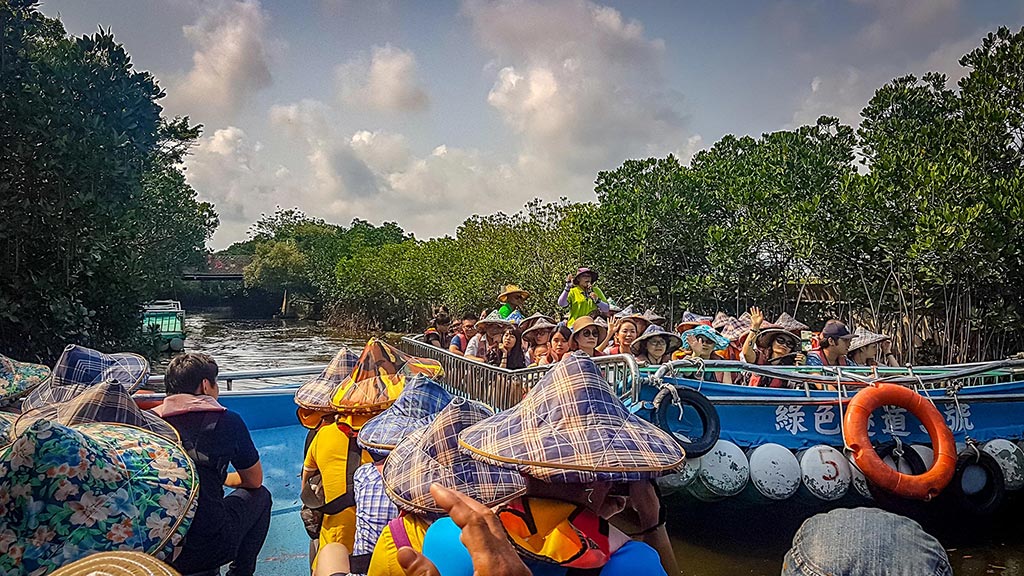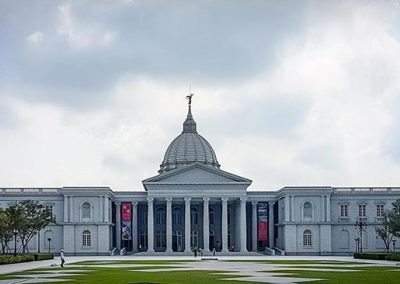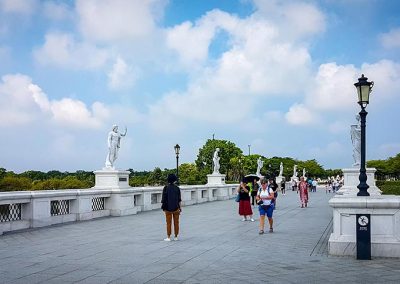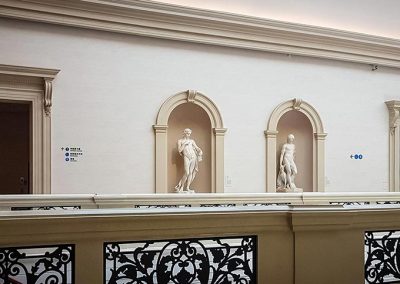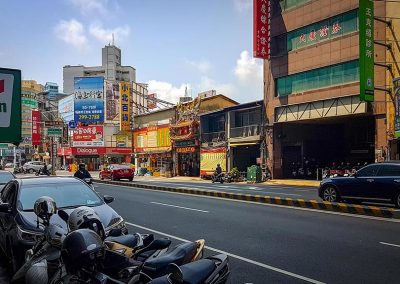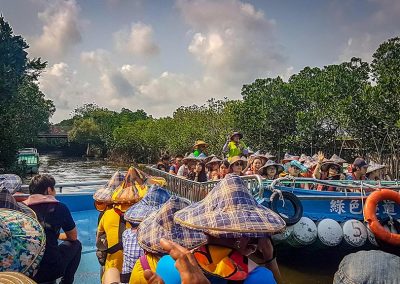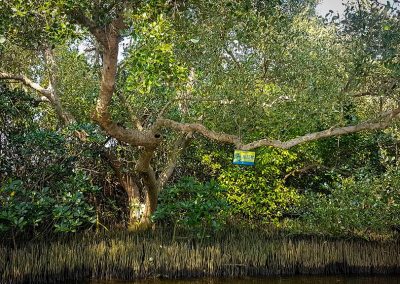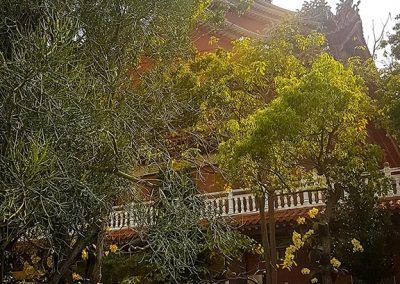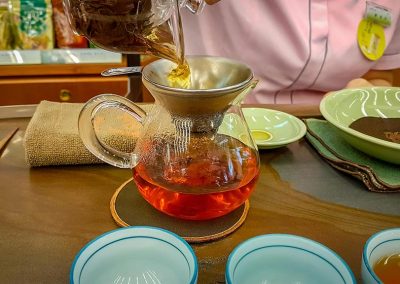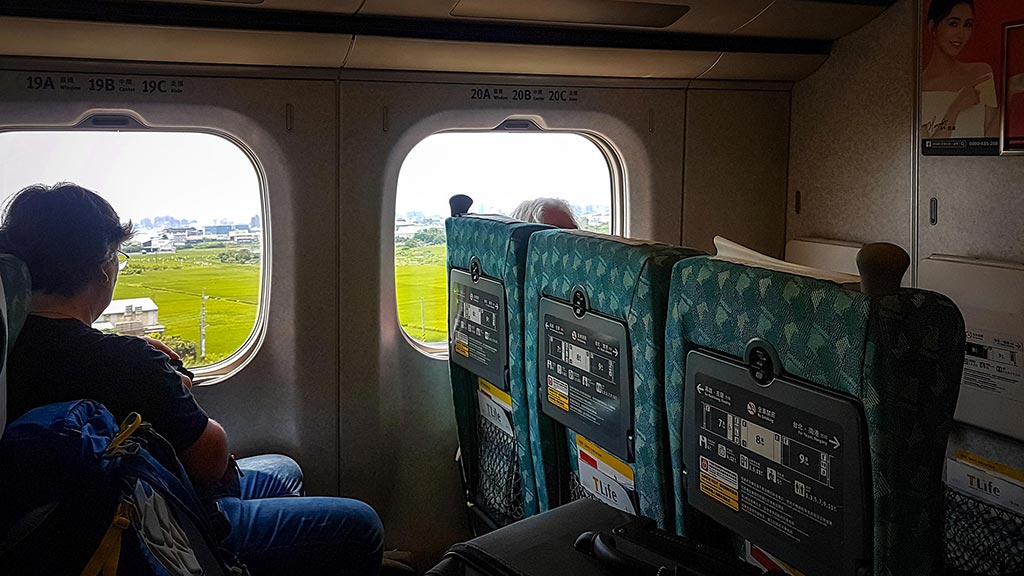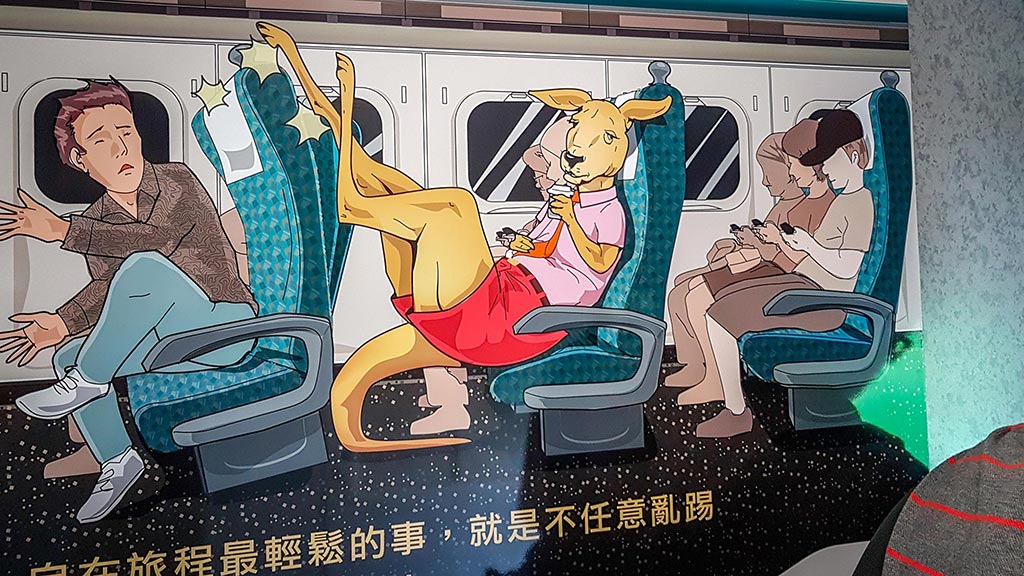Copyright for photographs: Johannes Paqué
Dear friends of music and distant countries,
From April 10 to 24, 2019, Gabriele Paqué and I, her son Johannes Paqué, together with students and friends, made a trip to far away China and Taiwan to tell the people there about the piano learning method for older adults.
Now that we are back home for a few days, I would like to share these special impressions with you! At this point, a new article will be published for each day of our journey during the next 14 days – of course with many beautiful pictures of our experiences. So you can look forward to two exciting weeks and maybe you will even get the desire to explore these countries by yourself! This much I can tell you already: it’s worth it!
Best regards and enjoy reading
John Paqué
Content
Day 1 – The trip to Beijing and a visit to the wall
Day 2 – Tian’anmen Square and the Forbidden City
Day 3 – The big performance of our students at Steve Huang’s cultural center
Day 4 – The journey to Taipei
Day 5 – Taipei and the 101
Day 6 – National Palace Museum and city tour
Day 7 – Longshan Temple and the Ximending district
Day 8 – The Taipei Zoo and a gondola ride to the teahouse
Day 9 – On the train to Tainan and the performance in Kaohsiung
Day 10 – The excursion to Sun Moon Lake
Day 11 – A “free” day
Day 12 – New sides of Tainan
Day 13 – The journey home
Day 14 – Summary
Day 1 – The trip to Beijing and a visit to the wall
On April 10, 2019, a courageous small group set off on the long journey to China. This group consists of Waltraud, Ursula and Tatjana, who are all students of Gabriele Paqué and have been taking piano lessons with her for 2-5 years. She was accompanied by her son Johannes, Michelle Yen-Howland, who also teaches in the music studio, and Ejow Meng, a still young pianist who will be completing her master’s degree at the Hochschule für Musik und Tanz Köln this summer. But we didn’t go to the faraway Middle Kingdom just for fun. With an official invitation from an influential cultural figure named Steve Huang in our luggage, we embarked on this exciting trip to Beijing to meet him. And this is only the first stop of our musical troupe!
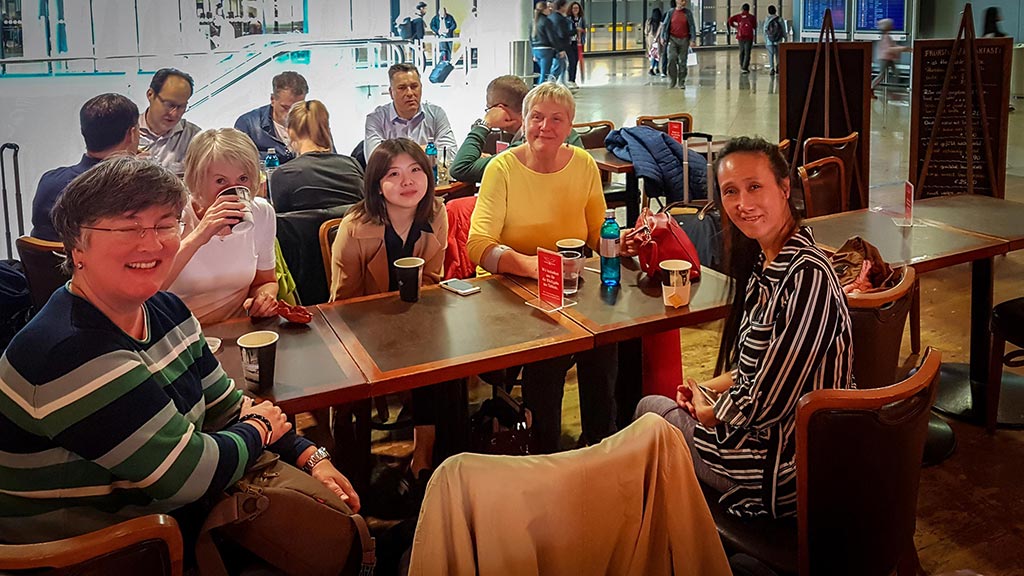
But what makes this group so special? Well, it’s probably not because we are such extremely good pianists (with the exception of Gabriele, Michelle and Ejow). It’s about something completely different: not only in Germany people are asking themselves more and more: “How do I want to grow old? – “What can I make of my old age?”. This question is also being asked in China. There are now already over 300 million “grey hairs” – people who are 60 and older. Tendency: rising! So it is certainly not a disadvantage to ask the world what else you can do as an older person. Above all, the question is also in the foreground: how can I keep myself fit? Not only physically, but also mentally! And especially playing the piano, which in the meantime also enjoys an extremely high cultural value in China, proves to be a particularly beautiful method to stay young in old age. As it is in life, the personal development is mostly determined by the two factors hard work and a portion of luck. The luck was that Michelle met Steve while visiting the Chopin Festival in Poland 2018, who was also involved in the organization of this glorious competition. When Michelle told him about her work in the music studio, he was eager to meet Gabriele. And so Gabriele and Steve arranged to meet Johannes one day in Amsterdam, where they quickly realized that they are not only likeable, but also share many ideas with each other. One meeting later – then in Bonn – the trip to Beijing (and beyond) as well as the corresponding lecture about teaching older adults was a decided thing. But we all know: such a lecture is all well and good, but it would be even nicer if it could be supported by a practical example. Thus with Ursula (70), Waltraud (73) and Tatjana (51) three extremely lucky pupils were found, who worked since announcement of this venture incessantly on their large appearance in China. Of course Michelle, who was also responsible for the realization of this trip, has to come along and with Ejow we found someone who is not only a pianist and a perfect interpreter for Chinese, German and English, but who also comes from Beijing (or the region) and supports us everywhere with words and deeds.
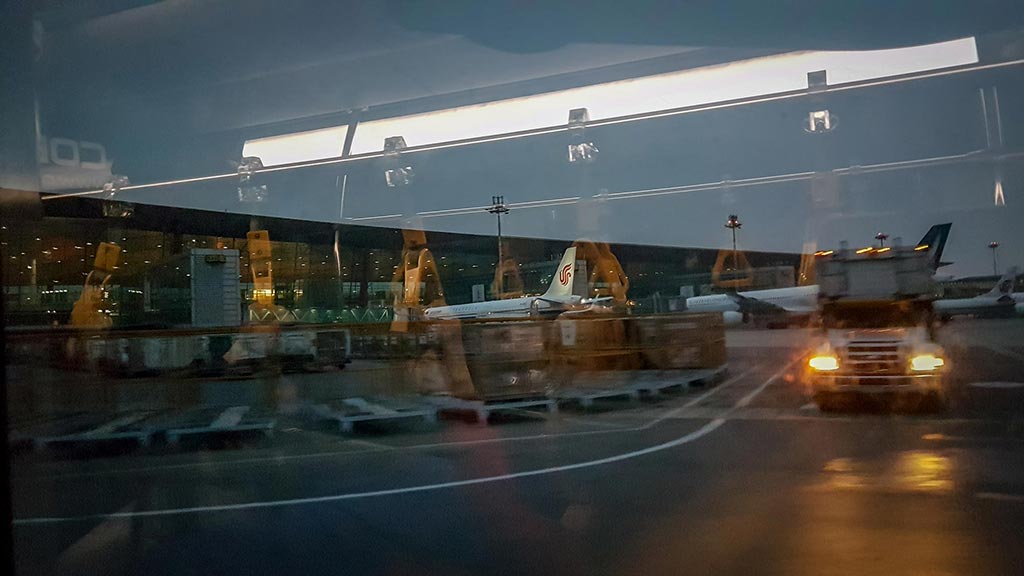
So now the time has come. It’s April 10, 2019, the alarm clock rings at 6 a.m., the last things are still being packed and 7 people from the region around Bonn and Cologne set off for the train station, through which they want to get to Frankfurt Airport. Not without the obligatory delay, of course, but that was already planned! A short refreshment later we found ourselves in an Air China Boeing 777 and enjoyed the short excitement of the acceleration until the plane turned in a steep angle towards the sky. The flight lasted 9 1/2 hours and, if you take into account the time change, 15 1/2 hours later we found ourselves in Beijing. It is early in the morning, shortly after 5 a.m., and we know: “Don’t get tired now! We have to hold out until this evening so that we don’t get jet-lagged. But this is easier said than done. Our group set off for the hotel, which was supposed to be quite close by, in a large car. Pretty close – in relative proximity! Because Beijing is big. Very big! To be precise: the outermost ring of Beijing (and another one is currently under construction) has a circumference of 700 kilometers! And in the last 20 years the countless cyclists have been completely replaced by (not too small) cars. Now, with all this chaos and “almost-collisions”, rush hour traffic is proving to be quite frightening for German road users. So if we hadn’t been so tired, there would probably have been an actual collision, because our screams would probably have frightened the driver more than the countless cars that pushed into and out of our lane with only a few centimeters distance. But as I said before: thank God we were much too tired for that.
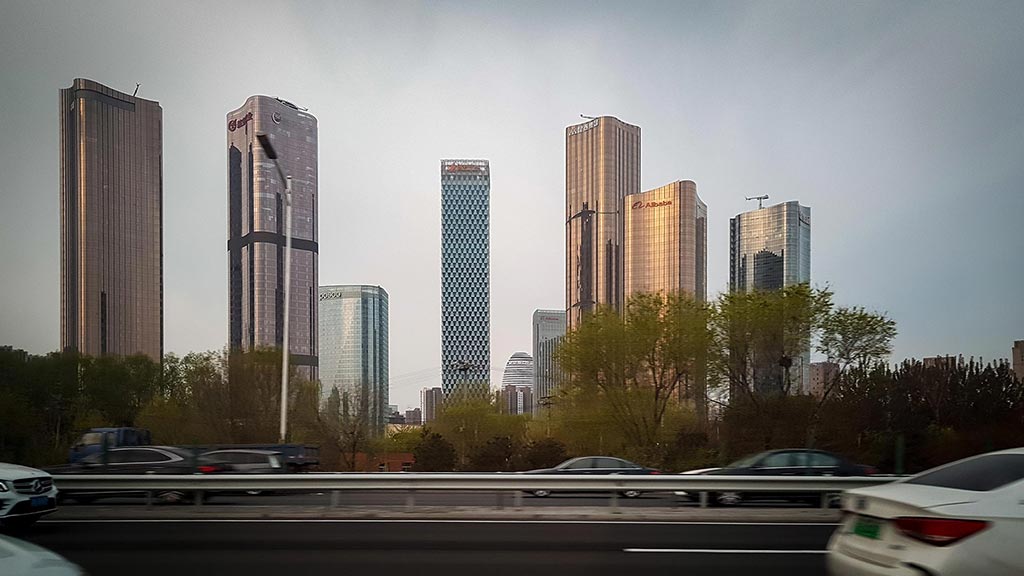
After about 1 1/2 hours we finally arrived at our hotel in northern Beijing, where we were warmly welcomed by Steve and his assistant Djinny. After a little chat we thought together with Steve about what to do now that we were already so broken. Well – the choice of the hotel in the north had two reasons: on the one hand it is quite close to Steve’s cultural center, where we would play our concert in a few days, and on the other hand it is right in the middle between downtown and the Great Wall of China. “A little exercise would do us good”, we finally said half in jest and half out of desperation, because we knew that without exercise we would not be able to hold out. So after we moved into our rooms we started again right away. While the author of this text looked spellbound out of the window and observed the changing landscape, the imaginary observer could see the heads of the other passengers nodding forwards and backwards.

One powernapping later we finally arrived in the very mountainous landscape around the Great Wall of China. Of course a lot has changed here in the last years and entering the wall has become much easier. While the path to the wall could previously only be climbed on foot, there is now also a cable car that takes visitors almost to the top. Especially for Waltraud, who is dependent on a wheelchair, this was very helpful. She would never have thought that she would be able to make such a journey again, let alone reach such a special place that normally requires a certain degree of mobility. It is really impressive to see how the wall stretches like a snake over the ridges of the mountains until it disappears behind one of them. All sections of the wall should be 20000 km long! An unbelievable human achievement, which underpins the motivation of the people of this country to this day.
The first day was finally to end with an invitation from Steve to dinner. One more powernapping later and we were back in the hotel. After a short rest we immediately got into a cab to drive to a restaurant which is even among the locals known for its Peking duck. Steve had reserved a VIP room for us where he greeted us with delicious rice wine (or rather rice liquor, as he had 42%). He and Djinny did a great job and presented us with a meal that we will surely be raving about for years to come. Traditionally, various dishes are served on a round tray that can be rotated so that everyone can fill his or her plate the way he or she likes it. The Peking duck itself was prepared by a cook right next to the table.
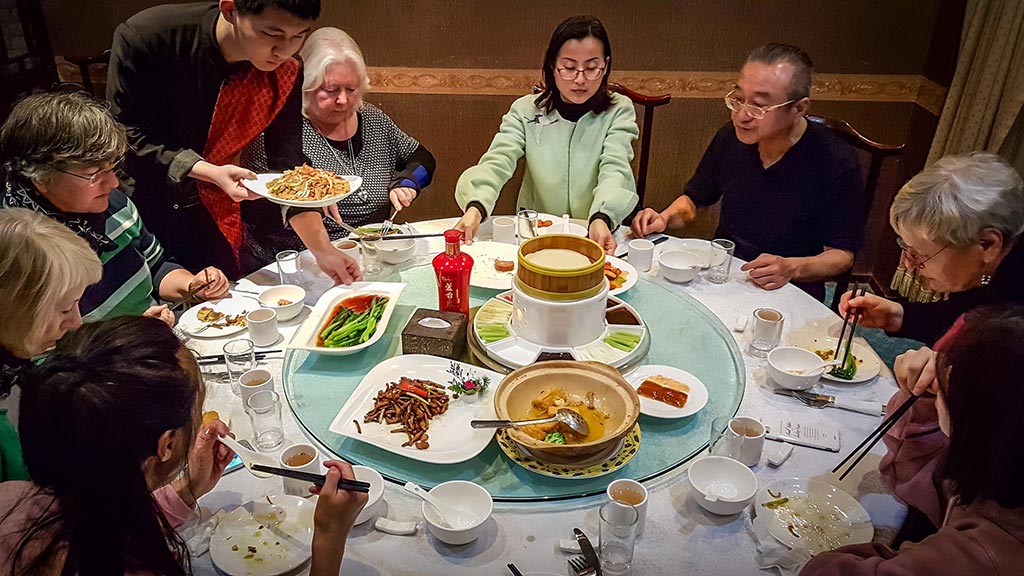
The first day was finally to end with an invitation from Steve to dinner. One more powernapping later and we were back in the hotel. After a short rest we immediately got into a cab to drive to a restaurant which is even among the locals known for its Peking duck. Steve had reserved a VIP room for us where he greeted us with delicious rice wine (or rather rice liquor, as he had 42%). He and Djinny did a great job and presented us with a meal that we will surely be raving about for years to come. Traditionally, various dishes are served on a round tray that can be turned so that everyone can fill his or her plate the way he or she likes it. The Peking duck itself was prepared by a cook right next to the table.
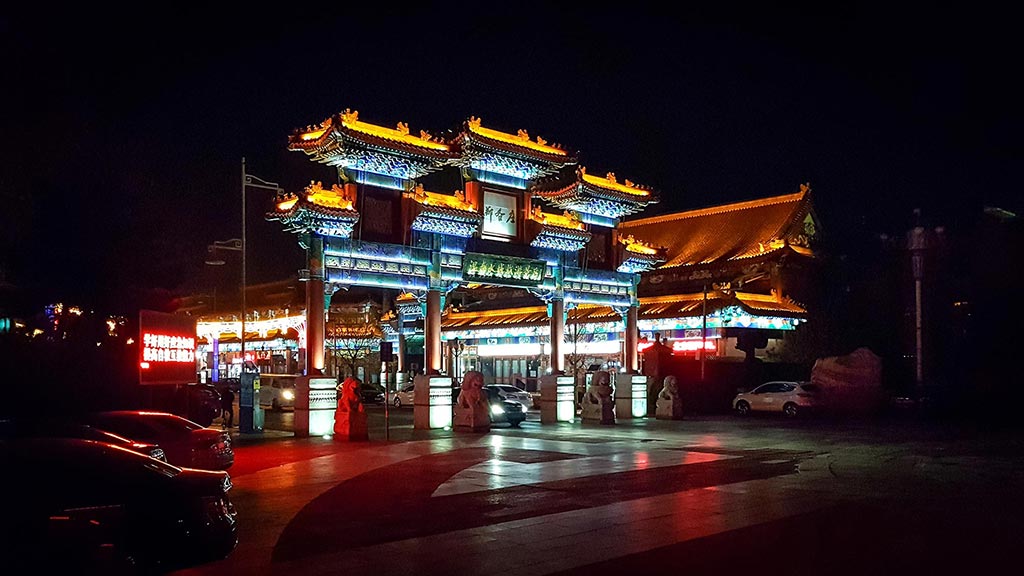
Day 2 – Tian’anmen Square and the Forbidden City
Day two of our expedition reached its first highlight already with a very sumptuous breakfast Chinese style. Of course the visitor can always fall back on a western breakfast, but for most of us the warm and busy Chinese cuisine was a welcome change. From a buffet with noodles, vegetables, duck and other delicacies, to a cookshop where noodle soups were directly prepared to the guest’s taste, to freshly squeezed juices, everything was represented. This nutritious preparation was also urgently needed for what was on our program today.
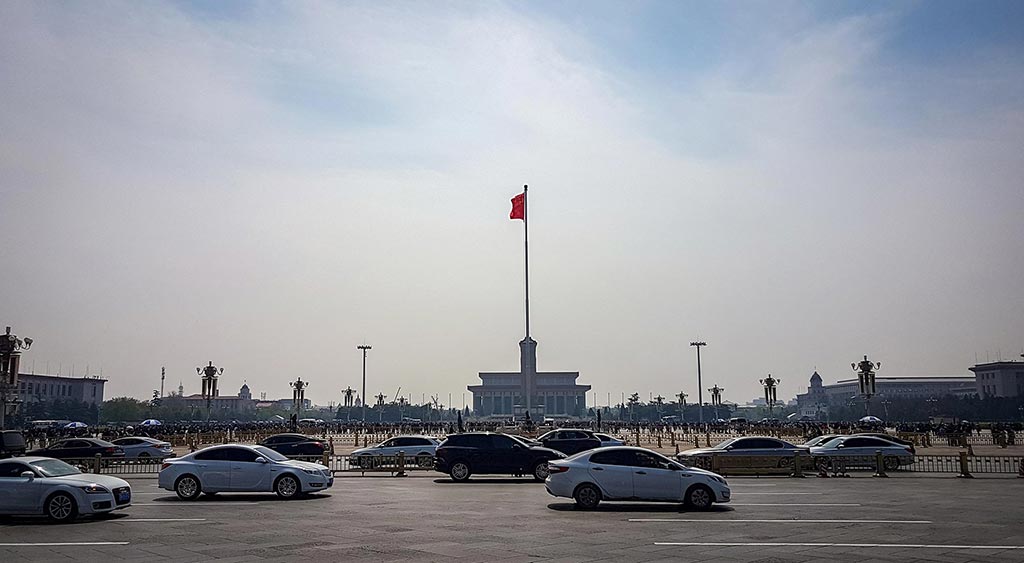
Today we went to Tiananmen Square and the Forbidden City. So back into the cab and into the center of Beijing! Having let out near the square, we first explored the immediate surroundings on foot and marvelled at the impressive buildings of the various companies. Every now and then you can also find well-known names like “Carrefour” or a German company like GROHE. And finally the time had come: the streets cleared up and we found ourselves on a huge open area surrounded by huge buildings, which houses a monument for fallen soldiers as well as the mausoleum of Mao Tse Tung. We had arrived at Tiananmen Square! The view is amazing, because in Europe there is nothing comparable. The square covers an area of 39.6 hectares and at the ends you can guess through the haze the next building complexes.
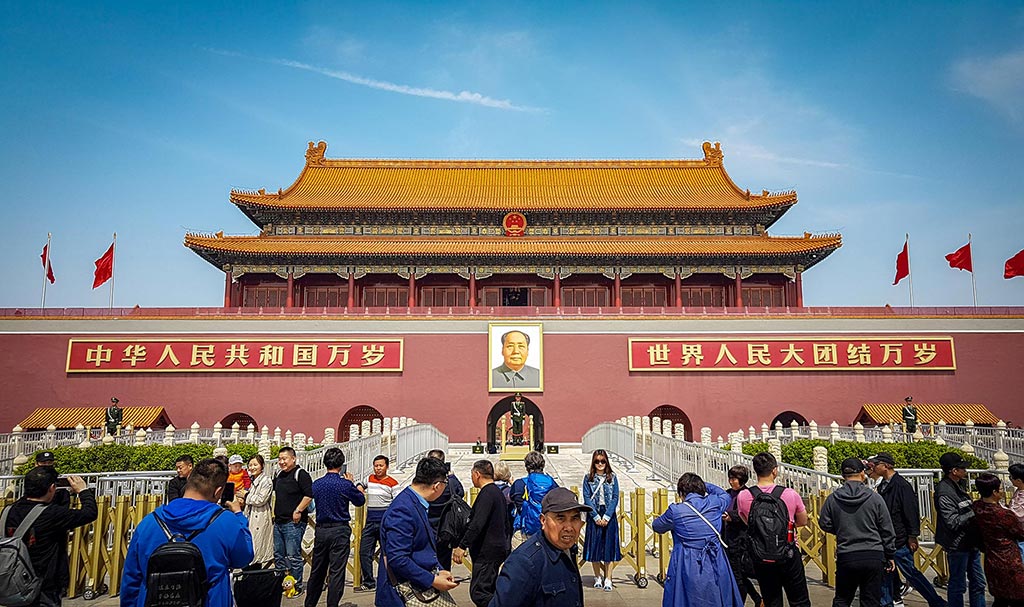
On this trip we were incredibly grateful to have Ejow at our side, because as foreigners it is still relatively difficult to find your way around China. In China, people use the app “WeChat” (or “Weixin”) for almost everything in everyday life, which is not only the Chinese version of WhatsApp, but also serves as a means of payment and social media platform. Using QR Codes, which are displayed everywhere, even in the smallest stores, customers can buy practically all goods. It is also possible to register for a visit to the forbidden city, which is not easy for foreigners. First of all, the app has to provide exact information about the names, passport numbers and other information of the visitors concerned. Only then can you go to the person and luggage control, where you will be screened very carefully until you can finally enter the forbidden city. Fortunately, the Forbidden City has become quite accessible for people with walking disabilities and so we made our way through the many building complexes of this UNESCO World Heritage Site. The Forbidden City was still the official seat of government until the early 20th century, before the then last emperor was overthrown in a revolution. He and his family spent a part of his life in their old residence before they finally left the Forbidden City and it became open to the public. A special impression was definitely the imperial palace, which unfortunately is no longer accessible to visitors inside, and the imperial gardens, which offer the visitor beautiful architecture and ancient trees. A sensational experience!
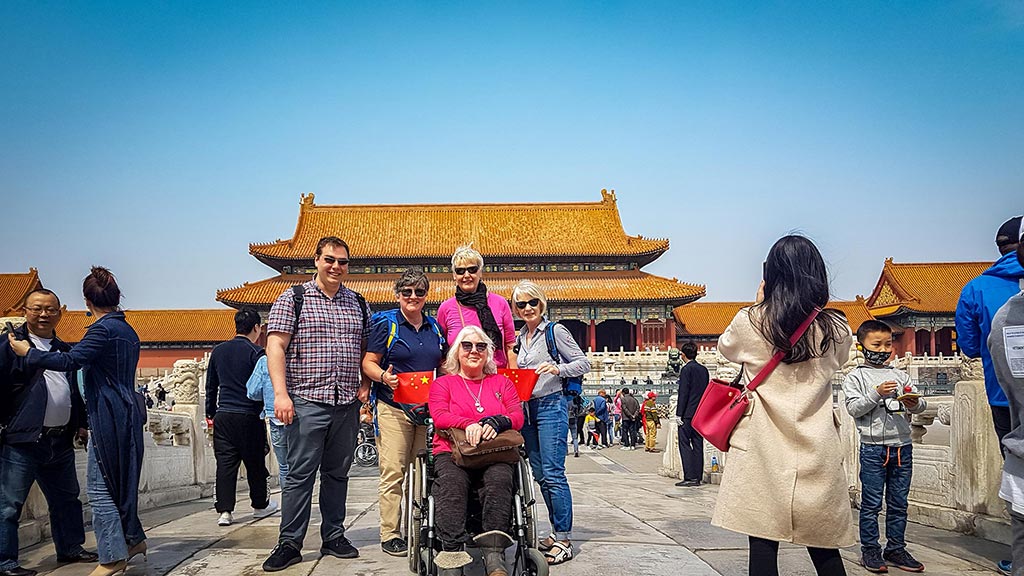
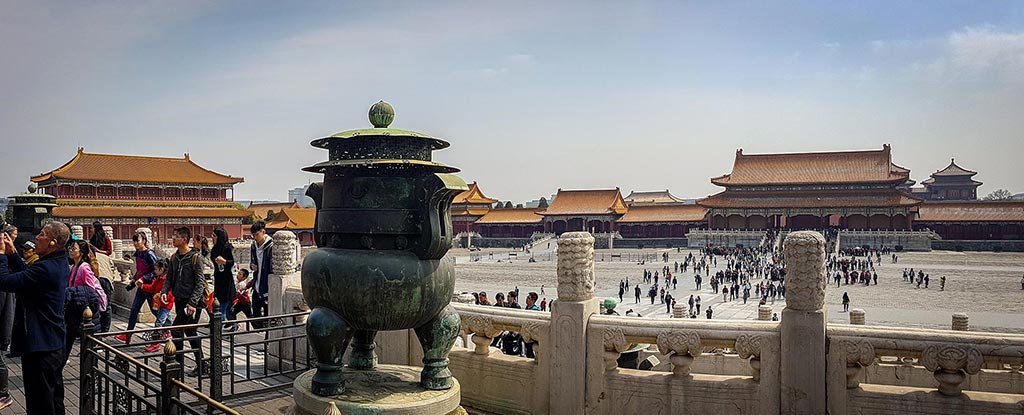
Later on, they took a cab back to the hotel, where Tatjana, Waltraud and Ursula sat down at the grand piano of the lounge together with their sheet music and to the surprise and delight of some of the visitors they presented their program for tomorrow’s day. Finally, we ate Shanghai style food in one of the hotel’s restaurants before we went back to bed, happy and exhausted. An exciting day was to follow: our concert at the “Beijing Yin Huang Union of Culture Art Centre”!
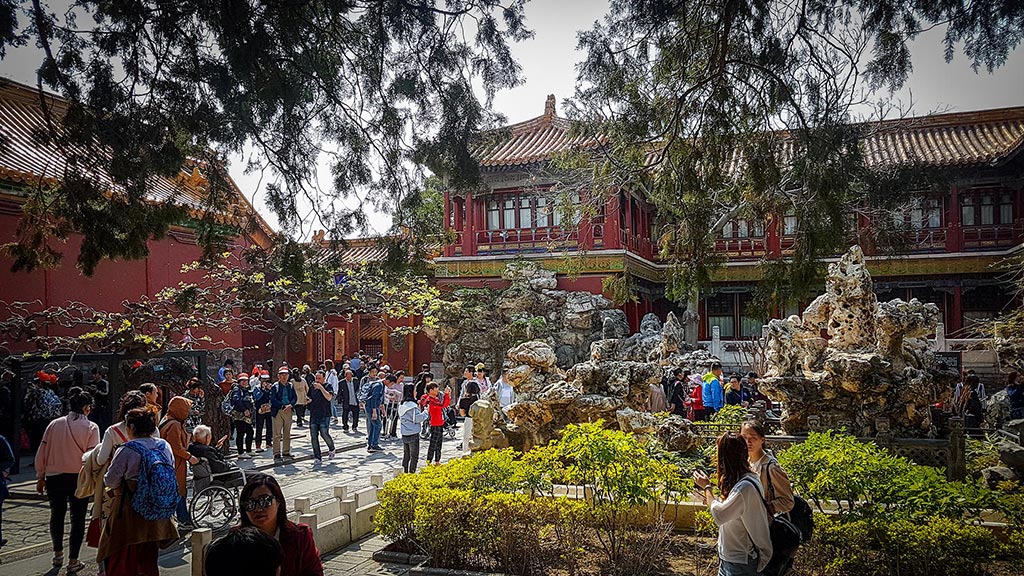
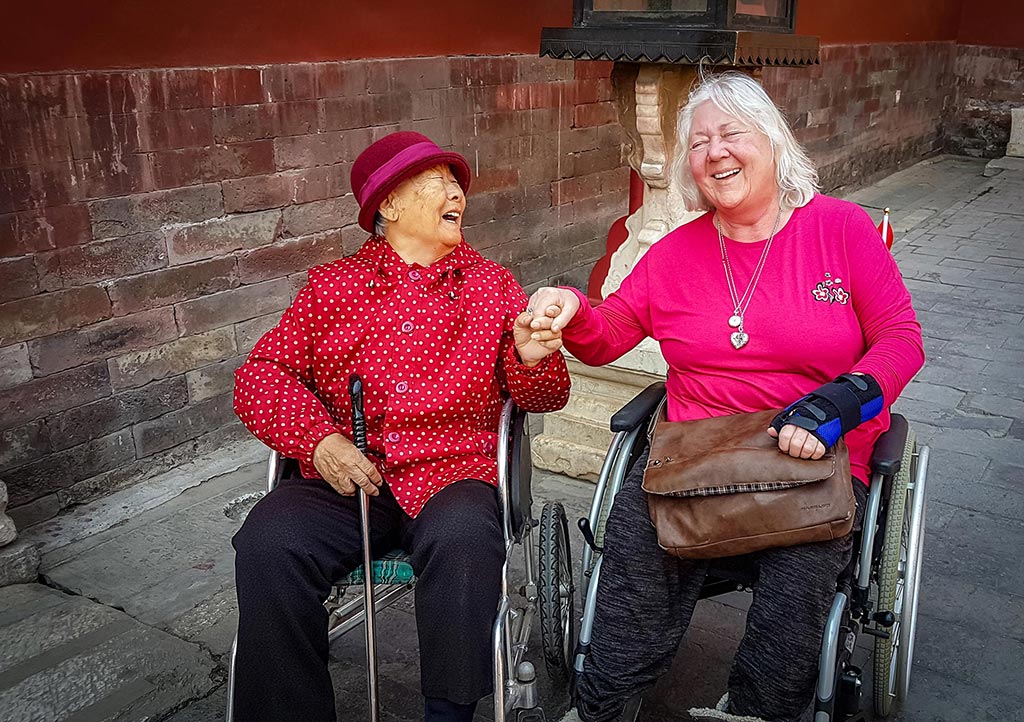
Day 3 – The big performance of our students at Steve Huang’s cultural center
It is day 3 of our trip and everybody is approaching the day calmly and thoughtfully, because today is the (first) big day: together we will go to the “Yin Huang Centre for Culture Art & Media” (Yin is Steve’s Chinese name), where we will have our big performance. While Ursula, Waltraud and Tatjana practiced the fingerings of the pieces in their minds, Gabriele and Johannes went to their room to go through the lecture again. At 12:30 pm Steve was already standing in the lobby to take us in two limousines to his institution. What I have personally noticed in other countries are the many separated areas in cities where the better off live and where you cannot easily enter as an outsider. In exactly such a “village” our little caravan led us – and the difference between public Beijing and this area could not be greater. While the public cityscape is characterized by high-rise buildings deep into the city center, which finally open up to the many areas of the old town where one can still experience traditional Beijing, this “village” is almost a copy of a street quarter from the Wilhelminian period, which is interspersed with small streams and lakes and of course with the odd playground. Around this area there are also two very good hospitals and an international private school, where 2000 students are driven to every morning by their parents. The streets are full of expensive German, Italian and English cars and here and there you can find a noble brand from the USA or Japan.
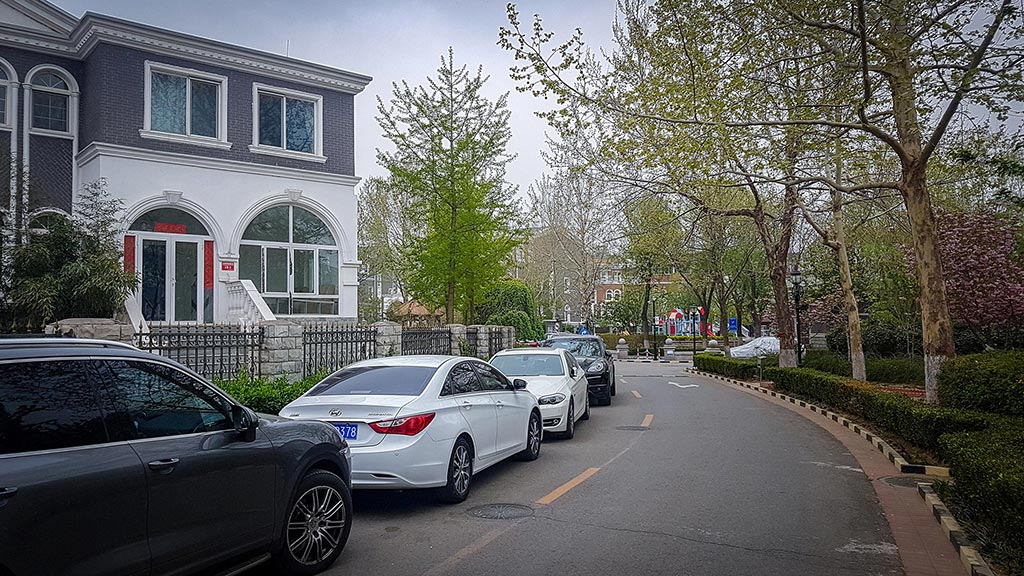
We were driven up to a small forecourt and then, under the welcoming barking of funny looking dogs, were led through a side gate to a terrace, at the side of which a Chinese pavilion was placed, as well as the already set tables with drinks for the later party buffet. Many people presented themselves, who showed us the way obligingly and looked at us with curious looks. We were finally led into the interior of the house, which had a neo-classical appearance from the outside, and passed a room where some women in traditional Chinese dresses were already sitting on cushions on the floor, chatting and drinking tea. The next room revealed a small concert hall, on whose stage a grand piano of the brand Wilhelm Grotrian stood. Here we could lay down our things, which were soon moved by the housekeeper to a neighboring room and our three students as well as Gabriele took the opportunity to practice again for the performance in one hour, while Johannes took care of the technique and made sure that everything would run smoothly during the performance. So far I have omitted that Steve told us about the expected high level guests when we arrived on Thursday. They all started to arrive and we met a fashion designer, for example, who specializes in designing classic Chinese fashion and whose clothes we noticed as soon as we entered the room. Another man focused on the trade with especially high-quality organic food and it was these that he sponsored for today. Finally, the two guests of honor also arrived: Prof. Ming Yang, director of the Beijing Piano Institute and an important personality in this area in the Chinese-speaking world and the former Minister of Commerce Guangsheng, Shi with his wife, under whose leadership China also joined the World Trade Organization (WTO). We already knew that high-ranking guests would arrive, but we really didn’t expect this!
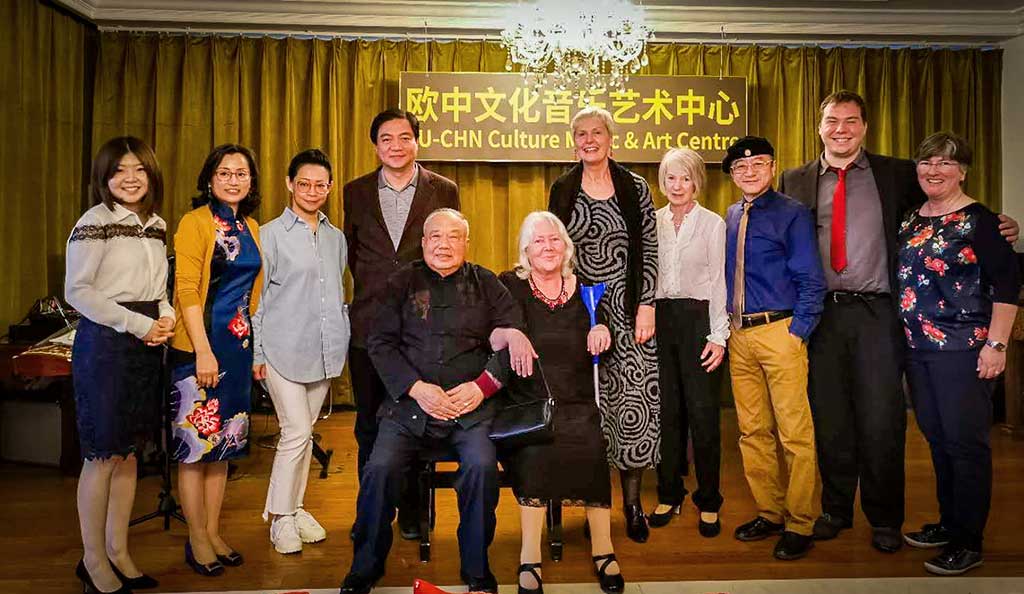
Very well! You are only human and Mr. Shi was indeed extremely interested in teaching music to the elderly. All in all, he was an extremely friendly person who, despite his fame, did not seem aloof. On the contrary, he even liked to share his seat with Waltraud when he saw that she was dependent on a wheelchair and she went to the stage for the group photo with him and Professor Yang. And Mr. Shi, at 80 years of age, is certainly not the youngest anymore. Waltraud, on the other hand, could no longer believe her eyes, ears and other sensory organs when this happened. But I am reaching out. First of all, there was the abundant program on the agenda. After a welcoming speech, in which all guests were duly introduced, we now moved on to the lecture. An important factor in the success of this event was our joker named Ejow: while at first it was only planned that she would help Gabriele to greet the minister, the pile of tasks piled up to an amazing height in no time at all. In the end, it turned out that only a fraction of the invited guests understood English, and so we needed a translator who was in the form of our ejow. To accomplish all this so spontaneously without preparation is truly an amazing achievement, especially since Johannes was occasionally asked to give a lecture on a scientific text about the aging of the brain.
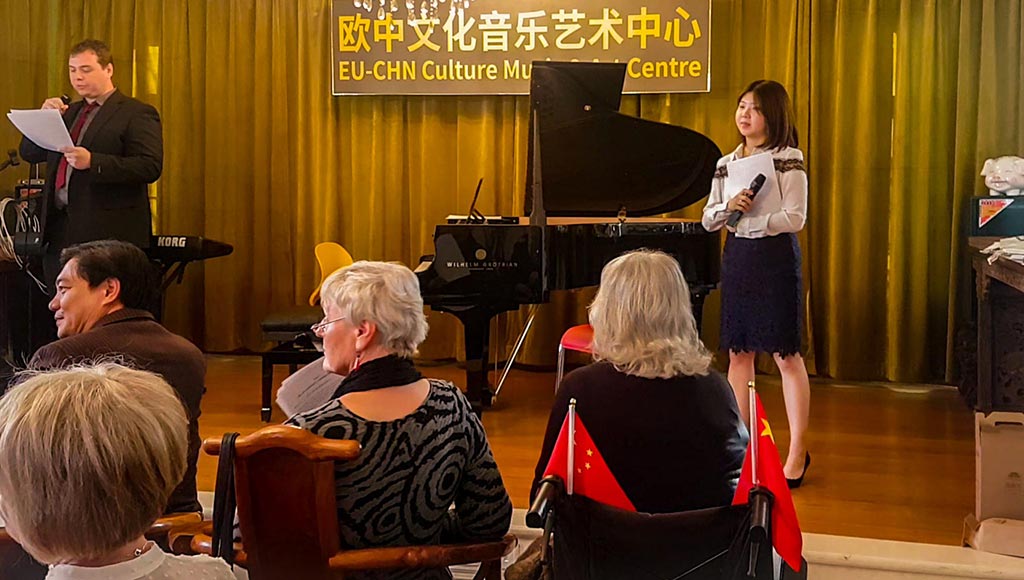
After the welcoming speech, which was held by another all-rounder, namely the chef of this event, we moved on to the main program: the speech of Gabriele and Johannes Paqué and the concert of the students. Without wanting to go into too much detail, it can be summarized that the lecture and the concert were clearly a complete success, which could not only be heard in the brightened up face of the minister, who also liked to bounce his foot during one or the other of the jazz pieces previously performed by Tatjana, Waltraud or Ursula. The other guests also listened eagerly and of course Prof. Yang was also very interested in Gabriele’s lecture. To summarize the core statement only briefly:
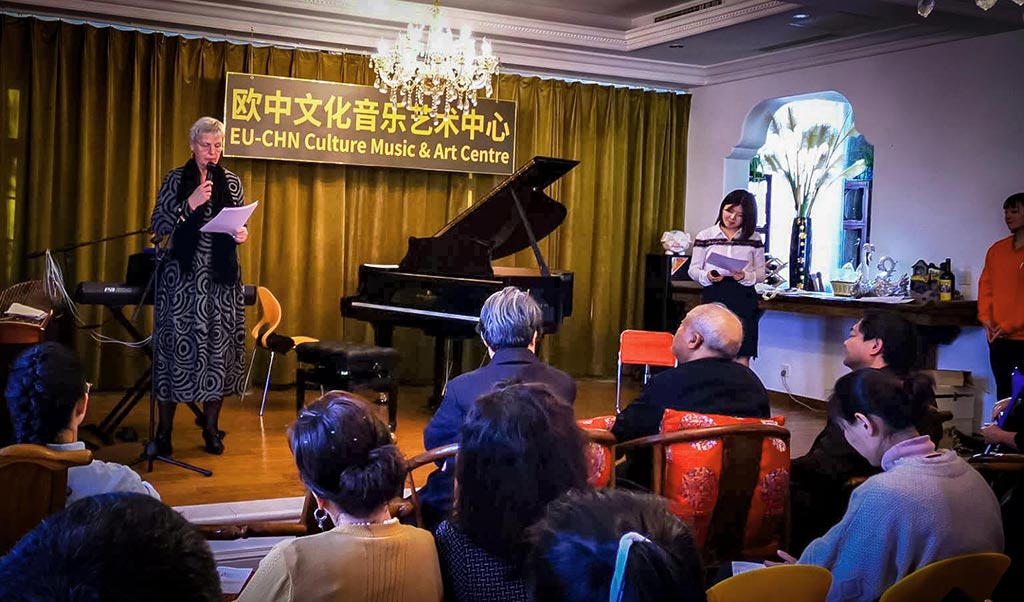
Gabriele Paqué has developed a piano teaching method that is specially designed to meet the needs of this group of people. The focus is on the individual examination of the respective student, taking into account the respective personal biography. Has he or she ever played the piano or any other instrument? What about the current life situation? Some are retired, others are still working. Still others are concentrating their time especially on their family or want to travel a lot. However, one thing is certain: learning to play an instrument requires a lot of time and, above all, regular practice. This is a decision that everyone has to make for themselves. Playing an attractive instrument is also of central importance.
A bad piano or even an electric piano can never produce the sounds and give the feedback on the keys that a good piano can. This not only increases the learning speed, but is also more fun, because who wants to put his feelings into playing beautiful compositions if the result does not sound beautiful? So if you decide to take this path, a new world full of beautiful moments opens up. It is not important to learn the most difficult pieces as quickly as possible, but to progress at your own pace, adapted to the student, so that he or she is neither under- nor overchallenged. And this is also fun, because Gabriele Paqué works with a large selection of partly unknown pieces, which all sound beautiful without necessarily being difficult.
Playing in pairs on the piano is also strongly in focus, which contradicts the argument that the piano can only be played as a solo instrument. Playing with a partner is especially enjoyable, the student learns a lot about rhythm, hearing, dynamics and harmony and the students also get to know each other. Gabriele Paqué often “couples” her beginners with advanced students, who then take over the role of accompanist, so that the students can practice with each other in their free time. This has already led to many new friendships. It is this method that has motivated many of the students to stay with Gabriele Paqué until today and even to perform with her in public in front of large audiences.
At this point I would like to emphasize the unbelievable performance of the 23-year-old Ejow, who was asked to translate the lecture into Chinese and then to give a small but high quality concert. And all this in front of her great idol, Prof. Ming Yang, whom she had already shyly asked for an autograph at the age of 8. What an achievement to keep such a cool head!
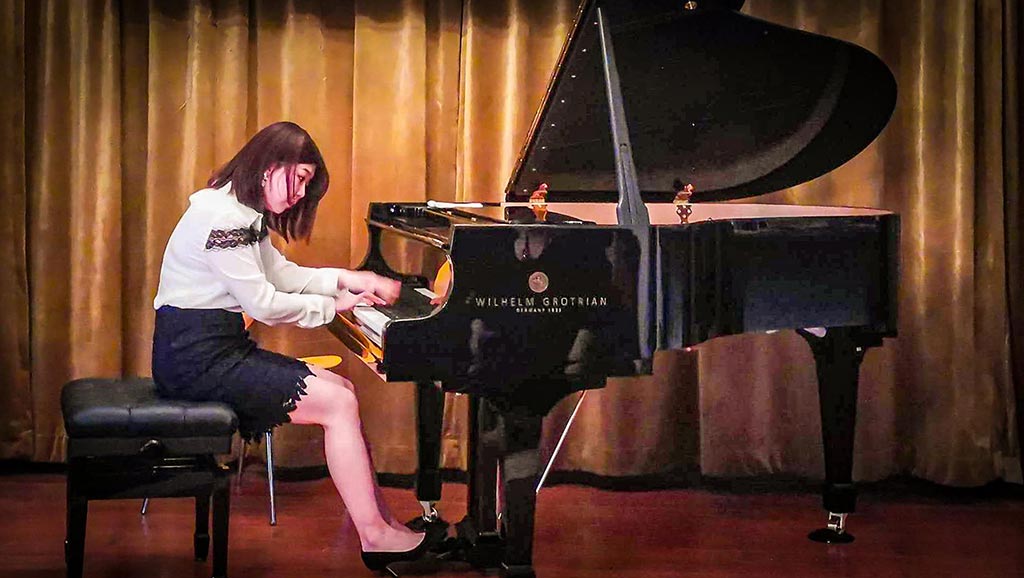
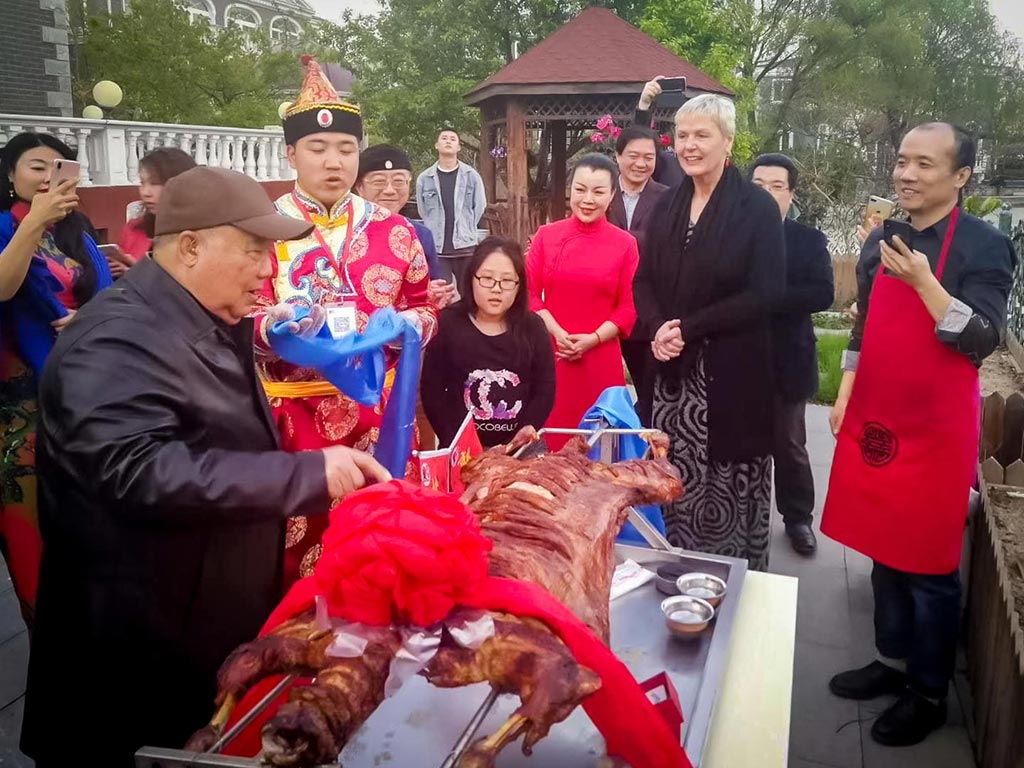
And now, of course, there were festivities as a reward: First, we witnessed a traditional Chinese tea ceremony with choreographies of three beautifully dressed ladies. Then we went to the buffet and Steve Huang offered a whole grilled lamb, ceremonially prepared in Mongolian tradition. The guests of honor: Minister Guangsheng Shi and – Gabriele Paqué – were presented with a blue silk scarf, which marked them as guests of honor. Now the time had come for everyone to relax and we all enjoyed the delicious feast that had been prepared in our honor. Afterwards, we had a lot of conversations with Prof. Ming Yang, whom we invited to Bonn, as well as with other guests who were very interested and courteous towards the members of this German delegation. Only when it got dark again did we set off and fell into our well-deserved sleep in the hotel, and now, of course, we had to celebrate: First we witnessed a traditional Chinese tea ceremony with choreographies by three beautifully dressed ladies. Then we went to the buffet and Steve Huang offered a whole grilled lamb, ceremonially prepared in Mongolian tradition. The guests of honor: Minister Guangsheng Shi and – Gabriele Paqué – were presented with a blue silk scarf, which marked them as guests of honor. Now the time had come for everyone to relax and we all enjoyed the delicious feast that had been prepared in our honor. Afterwards, we had a lot of conversations with Prof. Ming Yang, whom we invited to Bonn, as well as with other guests who were very interested and courteous towards the members of this German delegation. Only when it got dark again, we set off and fell into our well-deserved sleep in the hotel.

Day 4 – The journey to Taipei
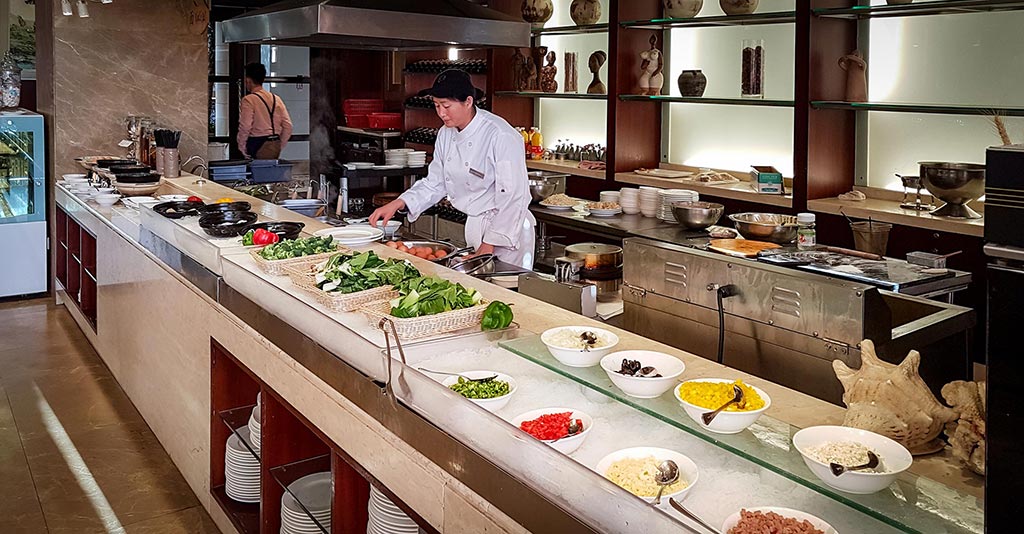
It is the fourth day and already our group has to pack its bags again. This was unfortunately also the occasion of a sad farewell. Ejow should unfortunately not accompany us on our further journey and I can assure everyone that her joyful and nice personality should be missed very much. But in return we had the opportunity to meet her parents, who came to Beijing for professional reasons and now picked up Ejow. We quickly noticed with her family: “The apple doesn’t fall far from the tree! We were not supposed to see Ejow again until our return trip to Germany. We were now expecting a trip to more southern climes: Taiwan is our destination and so, after the still delicious breakfast, we set off for the airport, again through the lively to chaotic traffic of the Beijing streets. The airport itself has amazing dimensions, if you include the surrounding suburbs. Finally, the several high-rise blocks give way to modern architecture, which, despite its size, has an extremely light character due to its flat, curved forms.
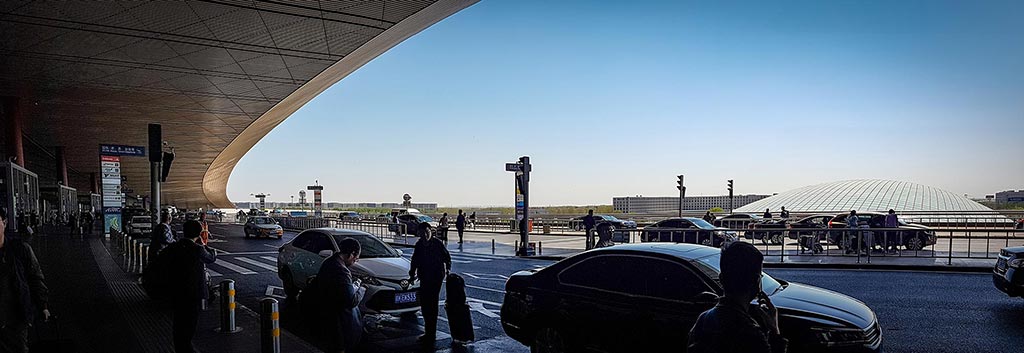
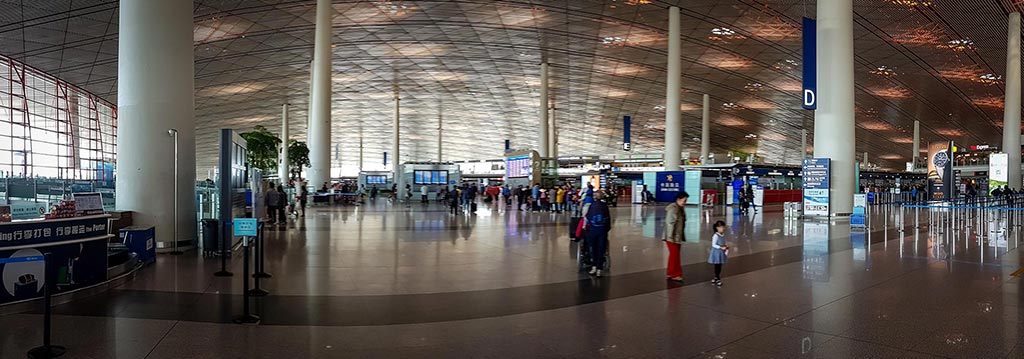
Inside, a tidy environment awaits the traveler, through which it is easy to find your way. Those who know Frankfurt Airport or other large airports will certainly not be surprised about the internal metro. Nevertheless, one gets the feeling that the dimensions here are still a bit bigger. Thanks to Waltraud, a young and friendly employee guided us past the queues and we were able to get to our gate quite quickly. After a short waiting time we started boarding the smaller plane to Taipei. Compared to the flight from Germany to China this flight with its 3 hours seemed to be just an entertaining trip and soon we were in the capital of this island where we should spend the next five days.
The first thing that comes to the traveller’s mind is above all the high humidity, which is a harbinger of the tropical climate. It was already dark when we arrived, but the temperatures were still slightly above 20° C. The second thing that comes to mind is the noticeably different atmosphere of this country. This can be seen in the clothing of the several young people, their partially made-up hair and above all the screaming of the fans who welcomed their pop idol at the airport, who apparently had just passed through customs with us. The trip turned out to be a bit more “civilized” than on the streets of Beijing. The traffic is much less chaotic, the hard shoulder is not continuously used as a passing lane and the average speed was actually 100 km/h on the highway from the airport to the city center.
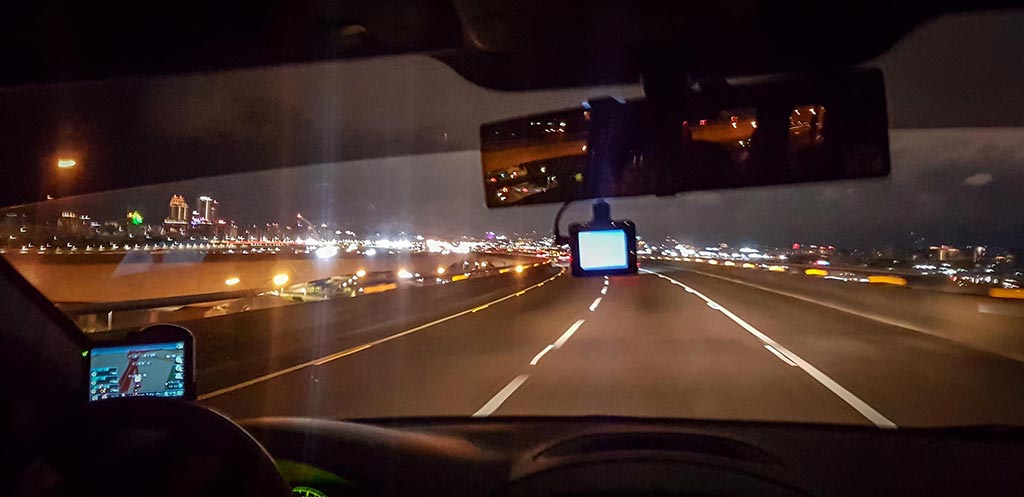
Taipei’s cityscape is much more western and you almost have the feeling of driving through an American city when you think of the Chinese letters off the road signs. Additionally, the vegetation is different compared to Beijing. In Beijing many plants and trees were blooming as well, but the ground was dry and broke. Here in Taipei, however, there are plants on every corner that seem to be bursting with vigor. From palm trees and tendrils to the forested mountains that surround the city, one has the impression of having landed in an oasis of highly technological civilization, surrounded by vibrant vegetation.
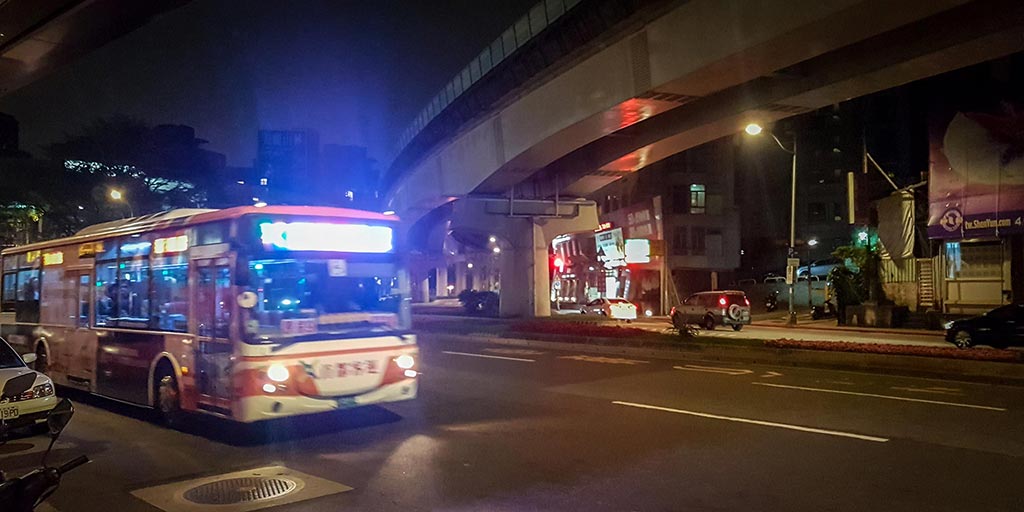
But at first, the only things on the agenda that day were dinner and a good night’s rest.
Day 5 – Taipei and the 101

It is a new day and the sunlight gives a first glimpse of the neighborhood of the hotel in Taipei. From the sixth floor, the hotel offers a good view of the surrounding area. While the road with its multi-story residential buildings winds along on the left, the landscape changes abruptly to deep green if you turn your head a little to the right. In the background, the mountains can now also be seen in color for the first time and one can only guess how many trees cover the slopes up to the peaks.
Today, the famous landmark of this city is on the agenda: Taipei 101 (pronounced one-o-one), which was the tallest building in the world from 2004 to 2007 and now, with its 509.2 meters (with antenna), still occupies the number ten spot. But first we had another appointment and so after our breakfast we took a cab to the city center to pick up Waltraud’s new electric wheelchair, which she rented especially for this stopover in Taiwan. This should turn out to be a little adventure, because she never drove such a vehicle before and so the “Raging Waltraud” got her “Whacky-Wheelchair”. Quite a few people were jealous of the rideable wheels. And here we were welcomed by Michelle, who had booked another hotel to be closer to her family, who is based here in Taipei.
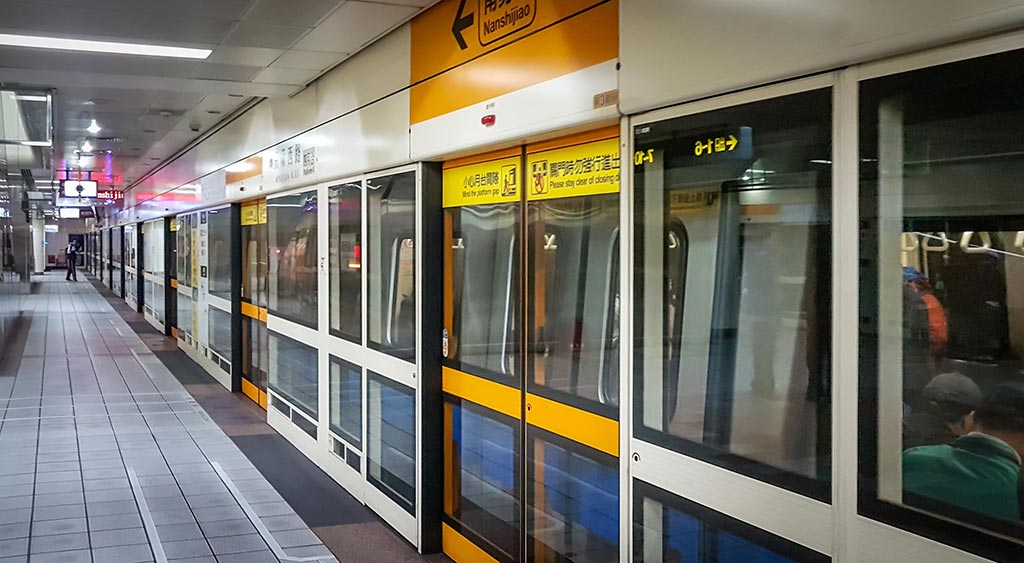
With Michelle and the raging Waltraud we continued with brisk steps and with the Metro to the 101st Taipei. At this point I would like to emphasize again how well Taipei is equipped for tourists and people with walking disabilities. Everywhere one finds very understandable inscriptions and signs, which show the way to the non-resident, so that one cannot get lost. In addition, the locals are happy to help, either in English or – more often than not – with sign language and Google Translator, but always friendly and honest. The Metroticket for three days costs about 10 €, which is quite reasonable and the Metro-Plan is also clearly arranged. So we quickly found our destination and soon admired the skyscraper when we left the directly adjacent metro station. The first floor of the building houses Taiwan’s largest shopping center. An endless number of small restaurants exude a spicy smell that mixes with the aromas of a tea store, for example. Everywhere you can get samples and so we could also experience how Asian cheese tastes. It takes some getting used to. Up to the 6th floor there are still many luxury goods stores, such as Gucci, Prada and many more, but they were not the focus of our interest.
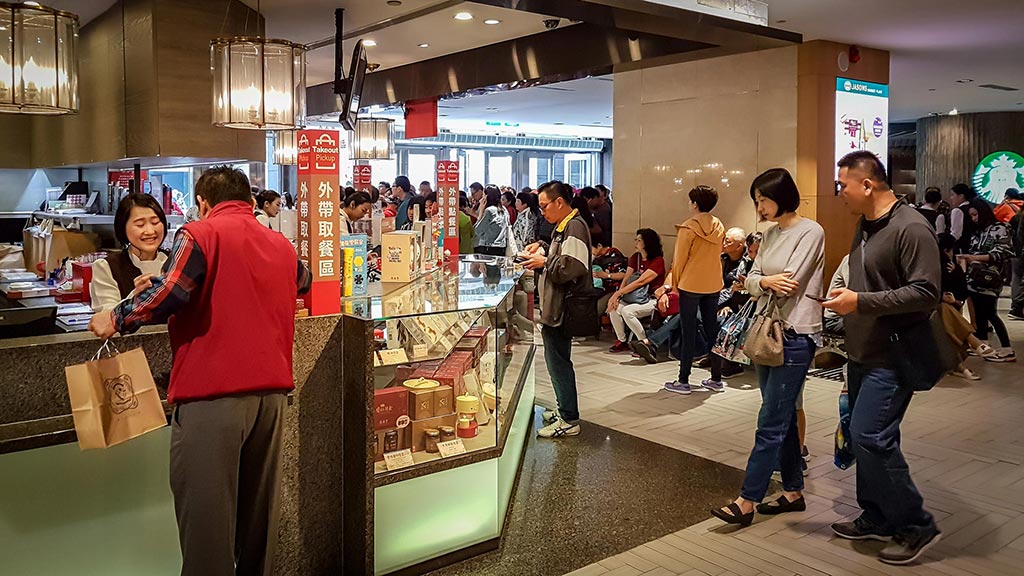
The trip to the inspection deck turned out to be relatively uncomplicated. At a vending machine we could buy the tickets for the inspection deck for 600 TWD per person (converted about 17,19 €) by credit card directly and on the fifth floor we went off to the queue, which, however, proceeded quite fast. With an elevator that reaches up to 60 km/h we went up to the 89th floor at 381 meters height to the viewing deck in 45 seconds. With this speed the elevator is still the second fastest elevator in the world, which is only overtaken by the elevator of the Shanghai Tower with its 64 km/h.


Upstairs an impressive view awaited us. In one tour you can look in all four directions up to the horizon, which unfortunately came to an early end that day due to the haze. The middle part houses all kinds of small stores selling ice cream, clothes and gifts. Through an access towards the center of the building, one finally reaches the heart of the building: a 660 ton steel sphere suspended from dozens of 8cm thick steel cables, and attached at the bottom with oil-hydraulic damping elements, so that the building can withstand the many earthquakes that hit the island.
A quite impressive construction. In addition, one could get up to the 91st floor, which offers the visitor the opportunity to enjoy the view in the open air.
On the way back it was unanimously decided that now was time for a little refreshment and so we found the right culinary delight with an Indian restaurant. Strengthened, we left and went separately to the many different stores that the 101 has to offer. Michelle, Gabriele and Johannes also used the time to explore the surrounding streets. Here the impression we had gotten before was confirmed. Huge billboards adorn the walls of buildings with the latest products, from every corner a model smiles at the viewer on canvases to praise her clothes and the streets breathe the spirit of a young, up-and-coming generation, which could already be seen in the 101.
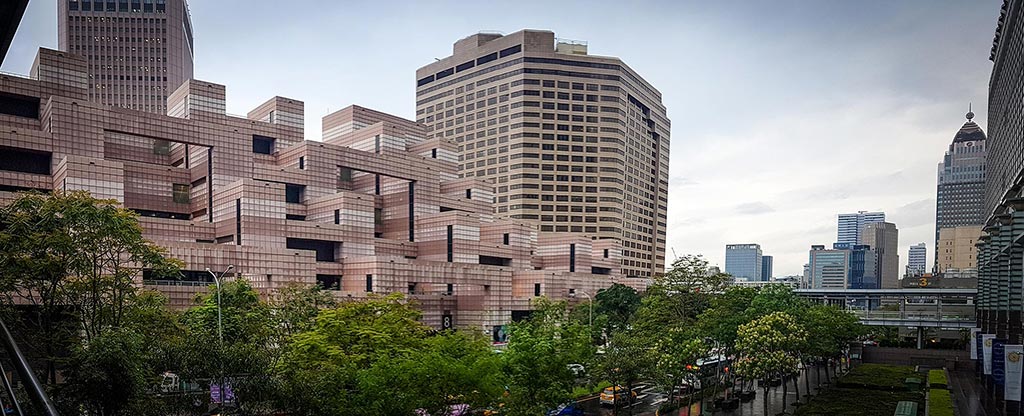
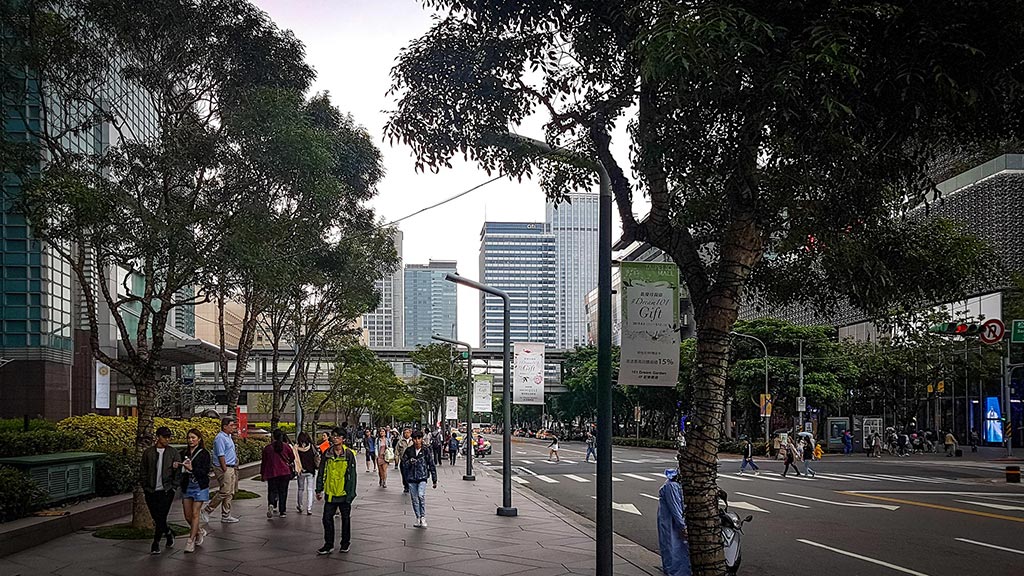

This tour took the whole day, so that we took the metro back to the hotel at dusk. Or we wanted to go first – because when we left the Whacky-Wheelchair was unfortunately no longer available and had to be charged at the local power outlet. But this only stopped us for a short time and soon we fell into our beds, but not without toasting with a wine and looking forward to the next day.
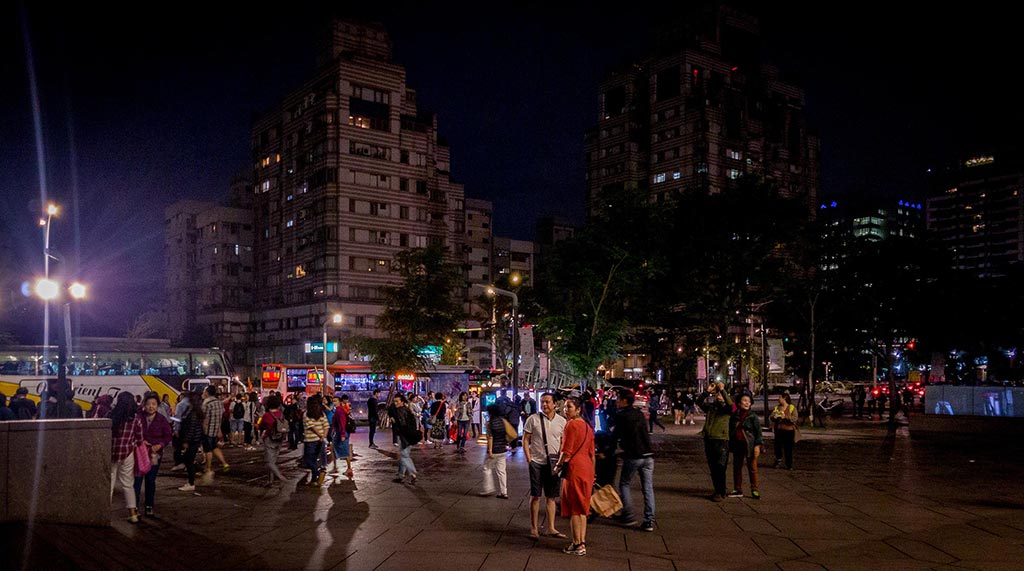
Day 6 – National Palace Museum and city tour
It’s day 6 and the gentle murmur in the background, accompanied by the noise of passing cars, bodes a rainy day. We planned a program for this day that would not expose us too much to the adverse conditions. Admittedly, rain at 21° C is not the worst thing in the world, but you don’t want to spend the whole day outside either.
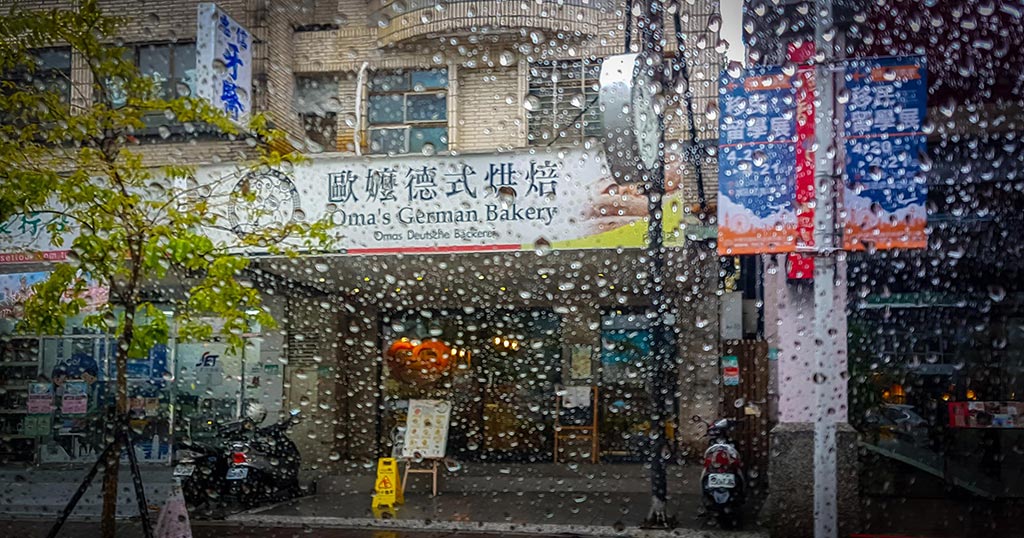
And so we set out for the National Palace Museum of Taipei, which not only exhibits particularly beautiful exhibits from the last 8000 years of Chinese history, but also has breathtaking architecture, which on this day is surrounded by the foggy and densely forested mountains. As we are already used to, the access for people with and without disabilities is very easy and clearly arranged. Especially nice: thanks to Waltraud, the author was allowed to enter the exhibition together with her free of charge. The exhibition rooms are divided symmetrically and are located on three floors. On display were antiques, including the famous ceramics of the Ming Dynasty, works of art made of jade, calligraphy and decorative everyday objects, such as cutlery used in preparation for a tea ceremony. The latter, incidentally, were part of a temporary exhibition that changes every few months. All in all, one can of course spend hour after hour in the museum, but with our limited time schedule, we could already be satisfied with 2 hours in the museum. In front of the museum there were also several smaller buildings in traditional Chinese style, but unfortunately we didn’t get to them anymore because the weather spoiled our tour.
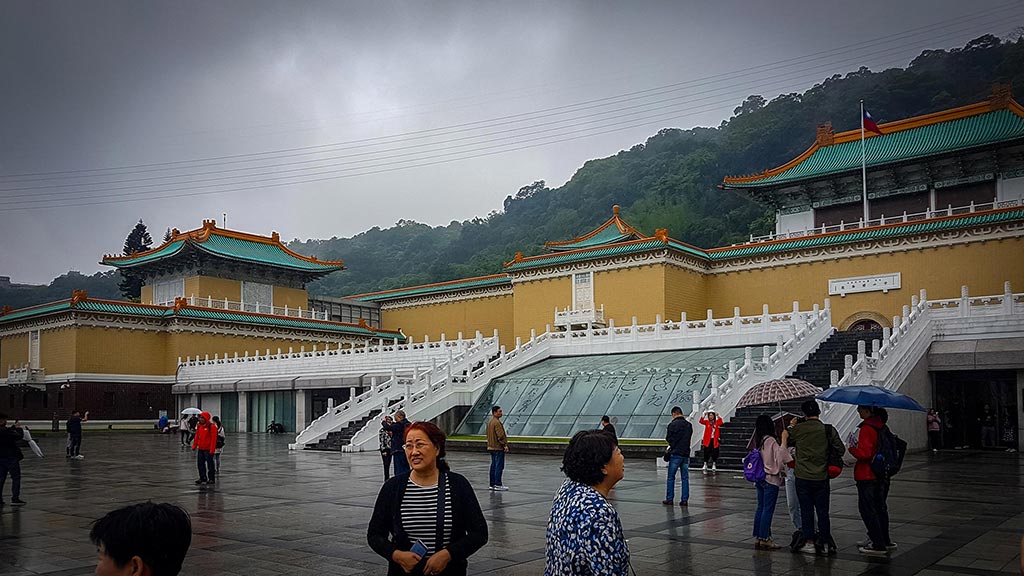
From the museum we went on smoothly to the next item on our agenda. The sightseeing bus, which you can enter from every marked bus stop, took us to Taipei Central Station and we learned all kinds of things about different sights along the way. One of them was the Taipei Grand Hotel, which was built in a classical Chinese style and impressed us with its enormous size already on the way from the airport to the hotel. Under the impression of the classical music, which was droning through the loudspeakers, we dreamily watched the hustle and bustle of the city and gathered new information about places we might visit in Taipei in the remaining two days.
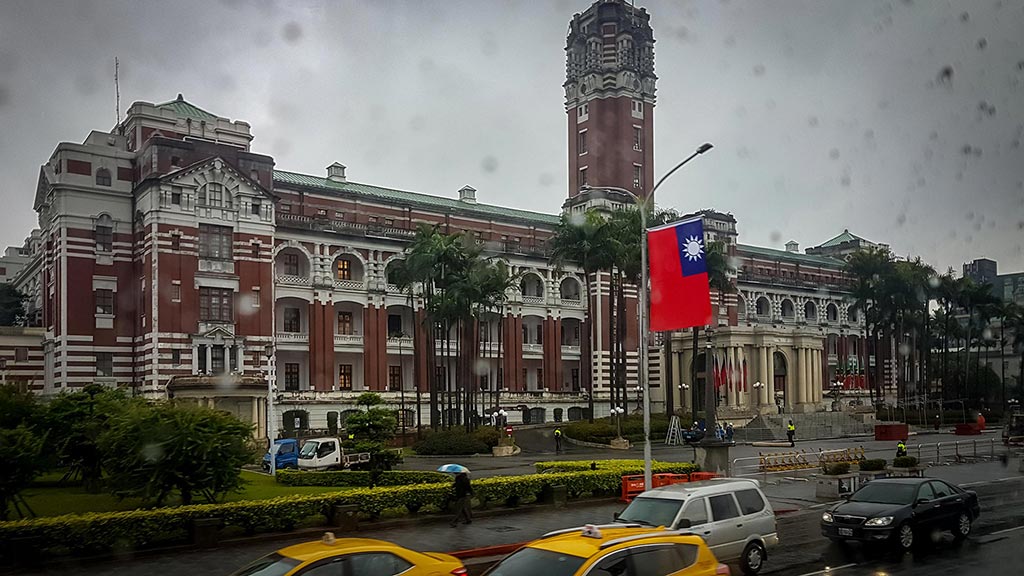
In the busy shopping district of Zhongxiao Dunhua, Michelle led us to a somewhat hidden restaurant that served excellent Cantonese food. From fried noodles with and without curry, to fish dishes and delicious starters, which for example most closely resembled the Königsberg meatballs, everything was represented – and in abundance! Although we had some real treats in our group, we couldn’t eat everything Michelle ordered and we still got away with about 13€ per person. The really tasty jasmine tea was also free of charge, as it seems to be always the case in restaurants here.
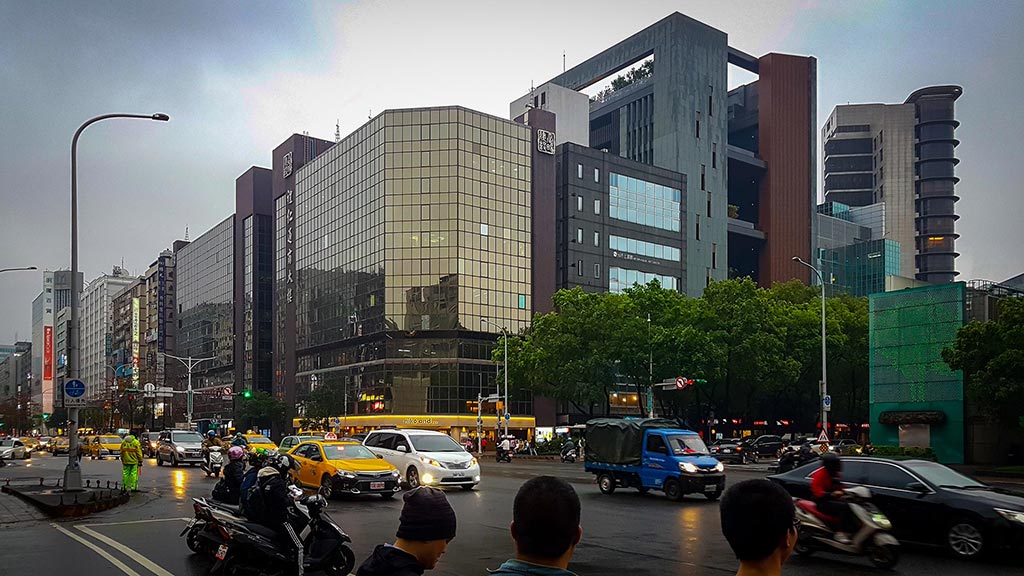
While some made a detour to the surrounding streets and stores, others decided to take their way home.
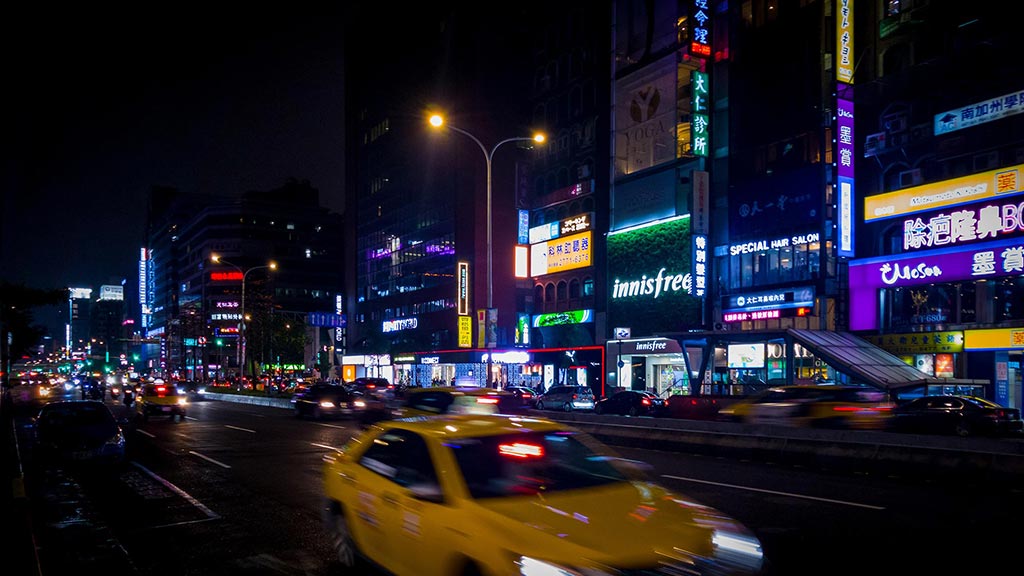
Day 7 – Longshan Temple and the Ximending district
It is sunny! After yesterday’s rainy day our group experienced Taipei at its best for the first time. And this change in the weather was just perfect!
We had already been invited for lunch by Michelle’s siblings at 12 o’clock in a very noble restaurant serving Shanghai cuisine. So we walked and rolled towards the next metro station from the hotel with only a very small morning snack. We drove again to the Zhongxiao district, which we had already visited yesterday evening. The restaurant was located in a shopping mall called SOGO, and as we got off at our destination station, we realized with a happy face that the above ground station was directly connected to the SOGO by a bridge. As mentioned before, many public buildings have free Wi-Fi, so we could immediately tell Michelle that we had arrived. But as much as she and we tried hard to meet each other: it just didn’t work! The solution to the mystery was that there are three SOGOs in close proximity to each other and we were in the wrong one. So Michelle came to pick us up and brought her sister Theresa with her, who was supposed to be our guide for today.
A short hike through the city, which we have grown fond of in the meantime, finally brought us to our destination, where we were welcomed by the other two siblings Jenny and Felix. They took us to the very fine restaurant, where a large table was reserved for us in an exclusive corner. Shanghai’s cuisine is characterized by a wide variety of seafood and Jenny and Felix were not too bad to reveal to us an impressive selection of crab, whole dorado, “drunken” chicken (chicken cooked in rice wine), shrimp, tofu and many other delicious dishes. A true dream!
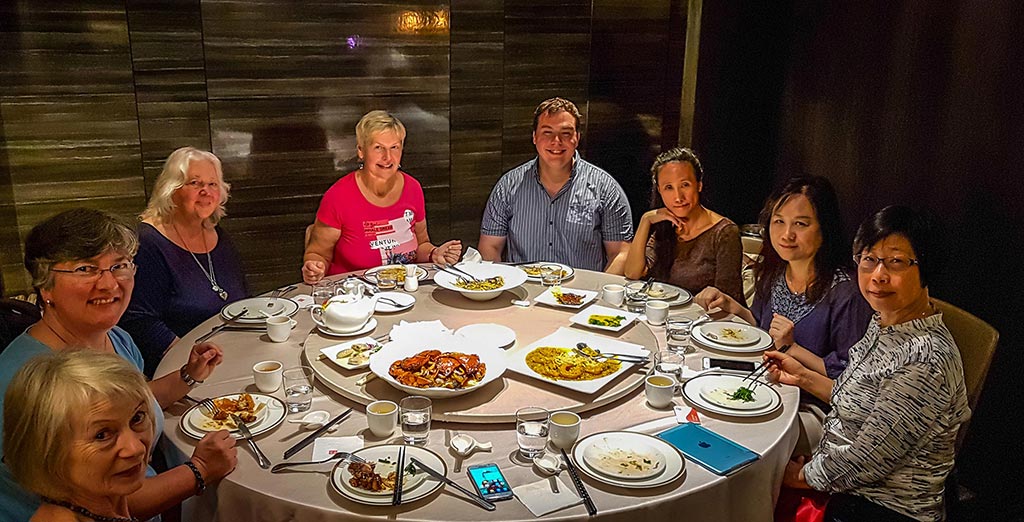
Jenny and Felix are both very successful entrepreneurs between the early and late 60s and they already had business relations with some German (major) customers, so the German culture was not foreign to them. With great interest they listened to our stories from home and of course from our current trip and explained to us some cultural Chinese peculiarities that are easily overlooked as foreigners. For example, they thanked us for pouring the tea with a small hand movement, gently tapping the index finger twice on the table. Of course she was also interested in our opinion of Taiwan and we told her without lying that we are very enthusiastic about this island and its very friendly, polite and circumspect inhabitants. Our opinion was: more people from the west should take the opportunity to visit this beautiful island!
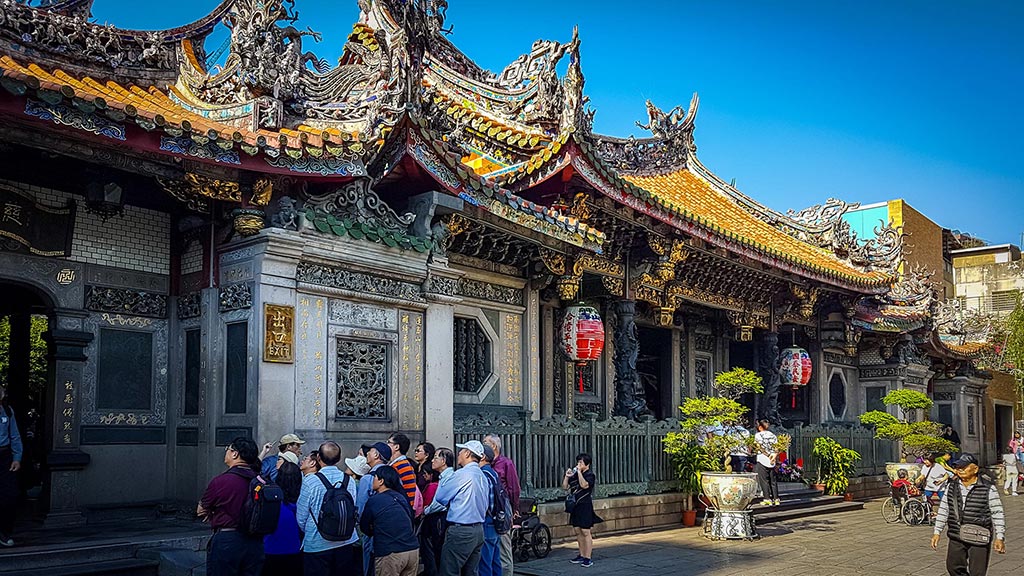
After this (but somewhat early) strengthening, Longshan Temple was on the daily schedule. With the metro we started again together with Theresa. The temple is located quite close to the main station Taipeis, but has its own station and when we saw the daylight, we saw how in this part of the city the new buildings slowly began to mix with the buildings of the old town. However, “old town” does not mean that you will find really old buildings here, as in Germany (except for the sights). This is, by the way, one thing that we noticed in Beijing, too: we were looking for an old town everywhere in vain, at least until now. It almost seems as if older buildings are regularly torn down and replaced by new ones, which we found a pity… But let’s get back to the story:
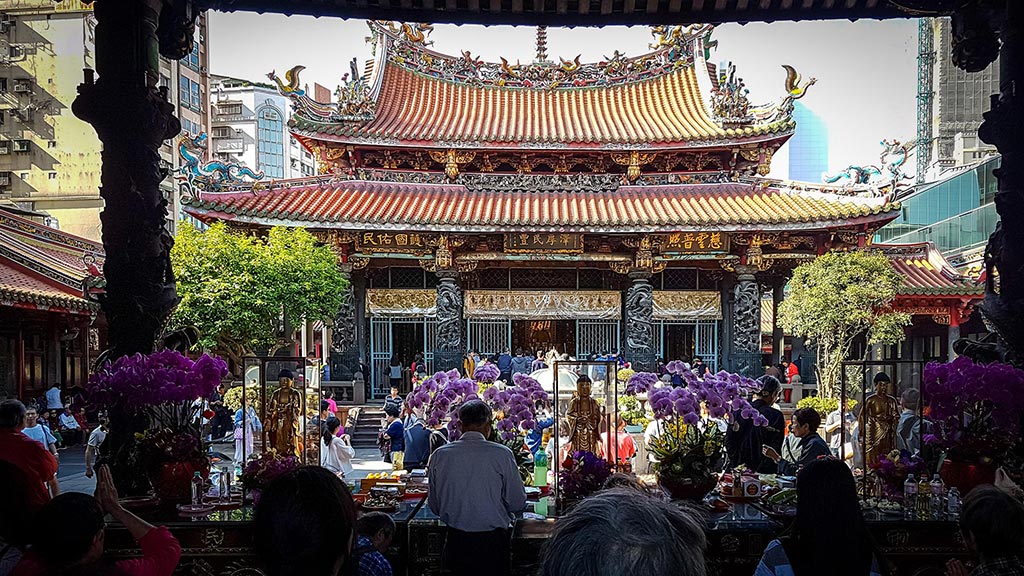
Directly across from us we could already recognize the temple by the especially beautifully decorated roof. But to speak of beautiful jewelry is rather an understatement. As in Christianity some churches are known for their delicate and detailed works of art, so were the builders of this temple true artists at work, who decorated every tiny spot with wood carvings and painted with pictures. In between, of course, there are the Buddhist gilded statues, which need not fear any competition to the already outstanding architecture. If you have never seen such a Buddhist temple, you can imagine it like this:
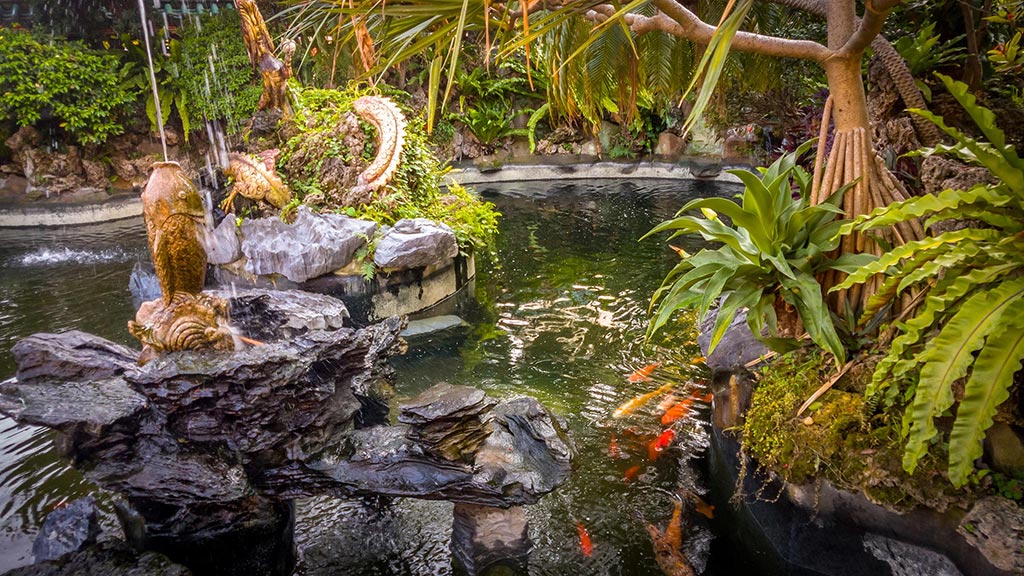
After entering the main courtyard, at the corner of which there is a pond with beautiful and huge goldfish, one looks towards the first temple. On a long rectangular table in the middle of this merely covered building, various offerings are served, and for our general amusement (but in respect) there were treats, such as Haribo or children’s surprise. Before that, young and old people performed a ritual in which they dropped two wooden plates to the floor, whose final position seems to have a meaning for the future.
Behind this first temple, three steps lead to the first courtyard, in the middle of which there is a large gilded cauldron which, through the incense sticks placed inside it by visitors, spreads an incense-like odor over the entire grounds. Behind it is the second temple, which seemed to be the main building. We were very lucky, because when we arrived there, a mass had just begun, which was celebrated by many visitors with prayer books as well as by monks inside the temple. We really got goose bumps when all the gathered people started to sing a beautiful melody. An unforgettable moment! Finally we reached the back temple, which again contained some statues and columns with countless pink slips of paper attached.
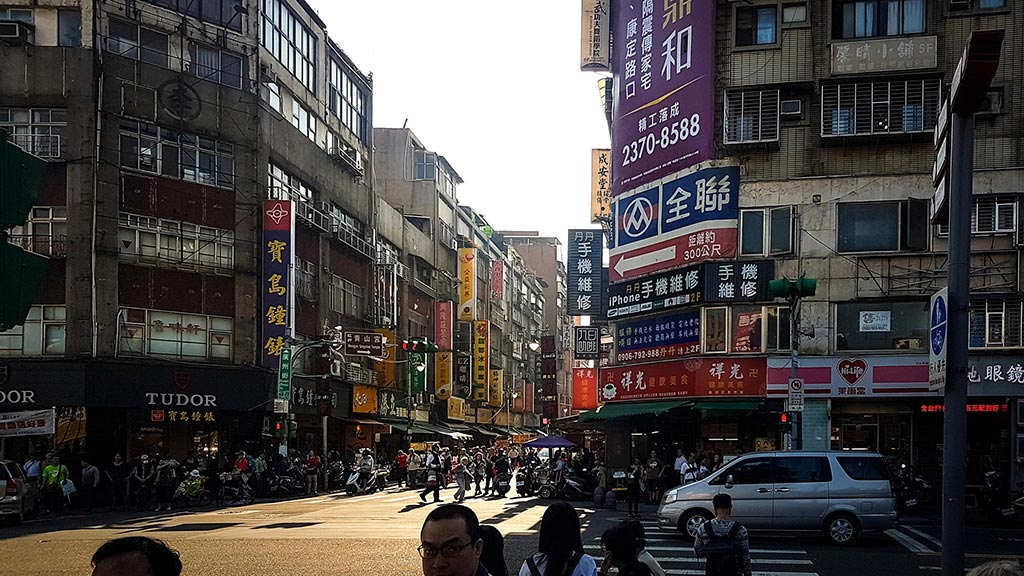
Later in the day, we made a short detour to the old town, which has many street snacks to offer and provides a contrast to the very modern big city feeling of the area around the 101. But with a wheelchair this area is not so easily accessible, because motorcycles are maneuvering around everywhere and it became too big an adventure for Waltraud and her companions, which we did not dare to face on this day. Besides, there was an important organizational point on the agenda. We planned to leave on Friday for our last longer-term stop in Taiwan: Tainan is a relatively small city with only 75000 inhabitants, which is located in the south of the island and is said to have a very old flair. In addition, we have planned to play a concert in the neighboring metropolis of Kaohsiung on Friday evening. But more about that elsewhere.

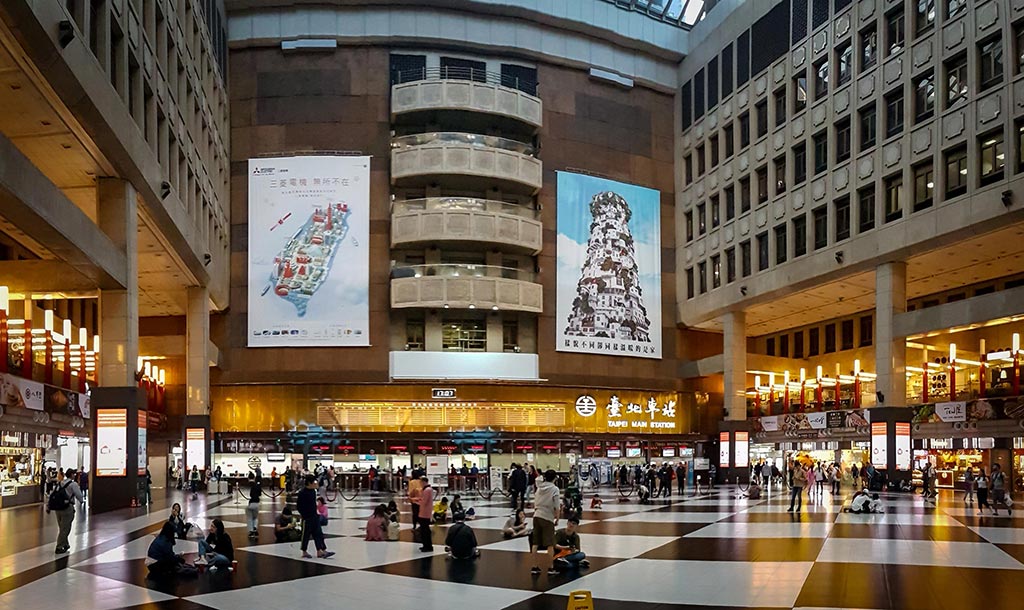
So after buying the tickets, it was already the best time to finish our day trip by exploring the nearby district of Ximending, which is also known for its past during the Japanese occupation as kleiens Tokyo. Especially for younger people this quarter is a must, which of course didn’t stop us from having a look at it ourselves. The entrance to the quarter cannot be overlooked
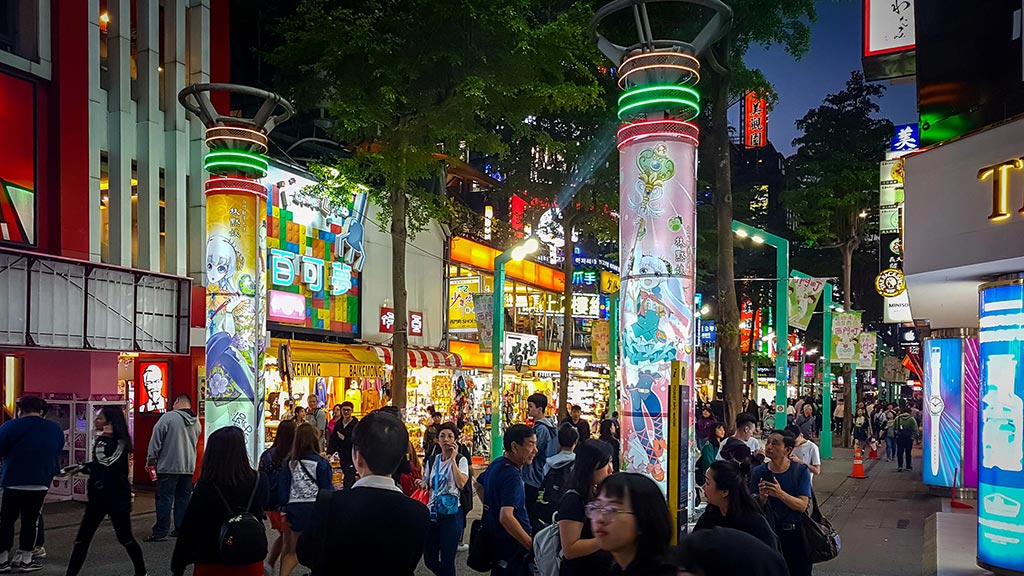
The neighborhood is characterized by neon signs, animated house facades and other attractions, all of which are drawn by the distinctive characters known from Japanese cartoons, the Animes. Here, one scene snack chases the next and here you can also find Taiwan’s very own drink specialty, which reveals itself in an ice-cold salty-sweet juice, which may take some people a lot of getting used to. In addition, you will find a small side street in this neighborhood, also known as the tattoo street, because in his weddings on its relatively short length, it had to show up to seven tattoo studios.
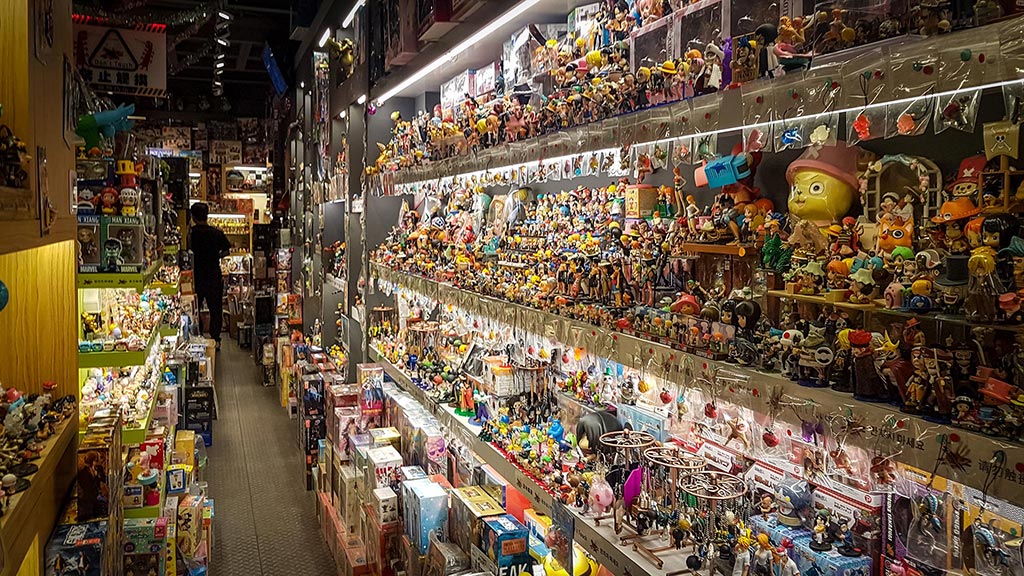
However, we could only count three, but maybe we missed one or the other business. But Johannes did not miss the figure store, which offers thousands of small toy figures, which are borrowed from all known anime series. There were also street artists to admire, who gathered a crowd of people around them with acrobatic tricks. A really crazy quarter and always worth a look, especially in the evening when the lights of the many neon signs create a special atmosphere.
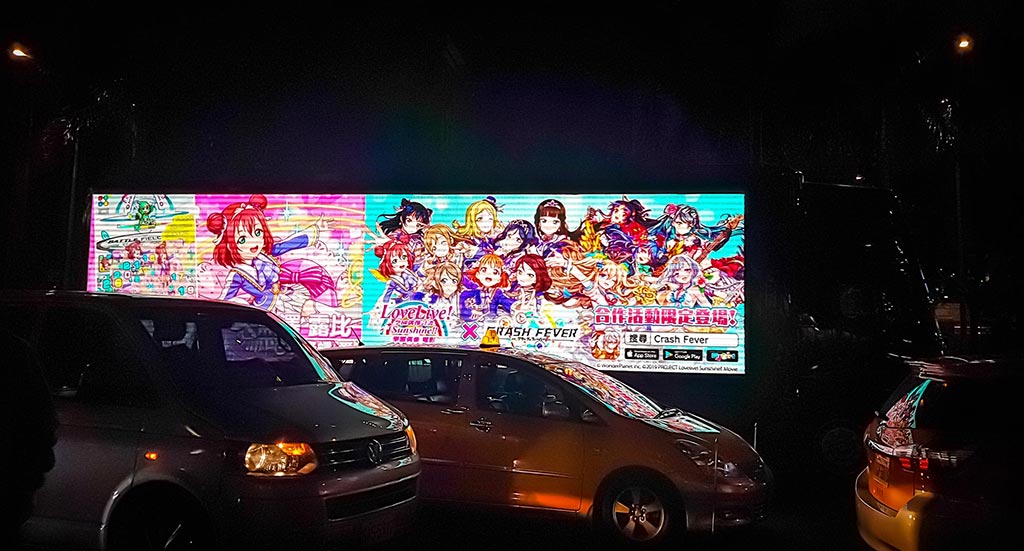
Now the pedometer of one of our cell phones counted already more than 13000 steps and our feet reflected this quantity felt again, so that we went back to the hotel after an eventful day. An even sunnier day was to come and a visit to the Zoo Taipeis.
Day 8 – The Taipei Zoo and a gondola ride to the teahouse
When we left the hotel on our 8th day of our trip, we had the feeling of walking into a damp wall. The sky was cloudy and yet the thermometer was in its high 20’s, if not higher. Accordingly, it didn’t take long for a thin film of sweat to build up as a constant companion. However, Michelle’s advice, we were well equipped with water and thus optimally prepared for this day and its small and big adventures.
Today we were supposed to go to the zoo of Taipei, which turned out to be a very easy trip, since the nearest metro line, which we already knew well enough by now, went straight through to us. The only thing that gave us access to this line with the greatest reliability was the cards that gave us access to it. The tickets had expired since last night and we actually only wanted to buy a 1-day ticket, but the employee at the information desk was kind enough to unlock them again for that day – and that for free. However, this did not work out as we had hoped. Whether we had misunderstood each other or not: Thanks to the not so generous technology, it all came down to the fact that we had to reach into our wallet again and pay the (small) amount for a new ticket.
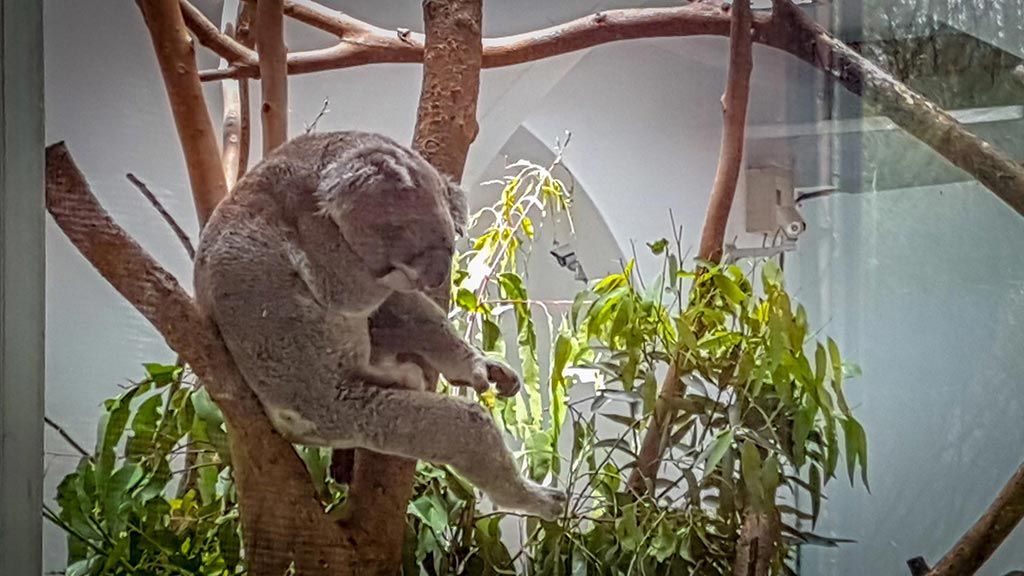
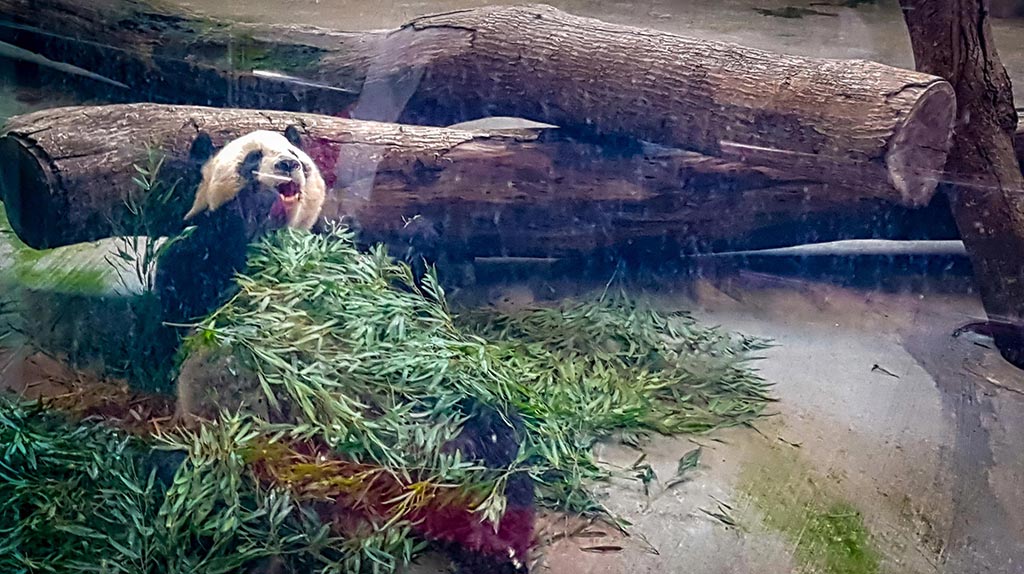
When we arrived at the zoo, we were delighted to see that there were probably only a few people at the zoo that day, so we got in very quickly for only the equivalent of 2€. The zoo is beautifully designed: If the climatic conditions already offered a tropical flair, the zoo took advantage of it in a wild flora up to the border. Orchids, palm trees, tendrils and other plants represented really everything that a nature lover could wish for in such a latitude. The comparison with the landscape from the famous movie “Jurassic Park” seems to me very fitting at this point! The animals were housed in beautiful enclosures and there was basically everything you would expect from a zoo – including of course the big panda bears! But first we were attracted by the koala enclosure, where their cuddly creatures could be observed taking their daily 19-hour nap. But now we couldn’t hold on any longer and we stormed to the panda house where we got to see two conspecifics. We were lucky, because one panda was being fed and we just saw him lying on the floor with his back on the ground and bravely reaching into the stack of leaves he had been tossing on his belly to feast in exemplary composure. Of course, many other enclosures were also tempting, such as the elephants, brown bears, penguins, camels, chimpanzees, gorillas, emus, etc., until we entered the uppermost area – because the zoo is located on a “mountain” slope – from where, for a few cents, the visitors were transported back to the entrance by a “street” train. A really very relaxing experience, despite the demanding weather conditions.


After a rest we went to see another sight, which is very close to the zoo. With the nearby cable car the tourists reach different places in the mountains over three stages, including a temple and finally the tea house, which was especially recommended to us by Michelle’s sister Jenny. However, the ride in the cable car turned out to be a bigger adventure than originally expected.
We had already made acquaintance with this type of cable car at the Great Wall of China and even then it was a small undertaking to maneuver Waltraud in her wheelchair into the moving gondola. This time she was on her own with her electric wheelchair, because it cannot be pushed by the electrically driven wheels – and if an obstacle, like in this case a step that is a little too big, should be in the way, the wheelchair gets stuck. With a moving cable car, this is not exactly the adventure one had hoped for… But with combined forces and the active support of the staff, this problem could be solved. I now dare to say – and I think Waltraud would agree with me – that she really is a real all-rounder, which is what an electric wheelchair has to offer.

But the trip itself to the top turned out to be a dreamlike experience and made us forget all our previous annoyances. Above the treetops the cable car stretched for 4km from mountain to mountain and you were offered a breathtaking landscape. The untamed tropical nature under your feet and the big city in the distance, whose skyscrapers merged with the sky, above all the always visible 101, would have made the cable car ride a destination in itself even without an excursion.
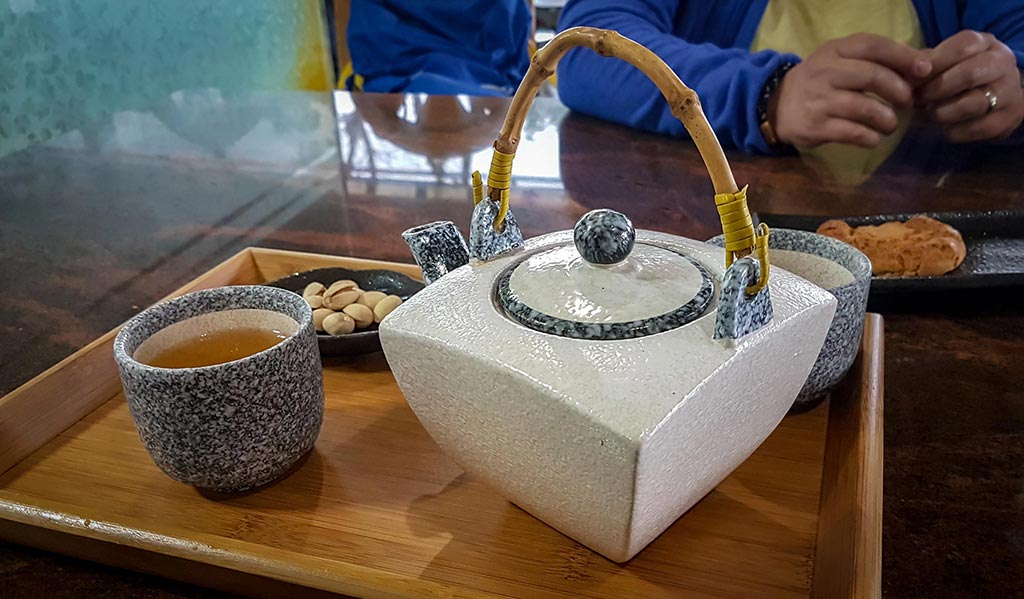
After about half an hour we arrived at the terminal station and quickly realized: if we wanted to go out for a meal in the city today, we didn’t have time to go to the traditional tea house anymore, because it is still a long way to walk and now it was already after 5 pm. This was of course a pity, but from the impressions and strains of the day already marked we were also satisfied with one of the several other “normal” teahouses along the way and got there a really excellent tea offered with some pastry and the already described great view inclusive.
So when the last cup was drunk, we went back to the cable car and enjoyed the tour again in the opposite direction, while the sun disappeared just behind the horizon and within half an hour of driving the evening glow gave way to the night. To be able to admire the city in its thousand lights was a special moment and invited us to take dozens of pictures for the photo albums.
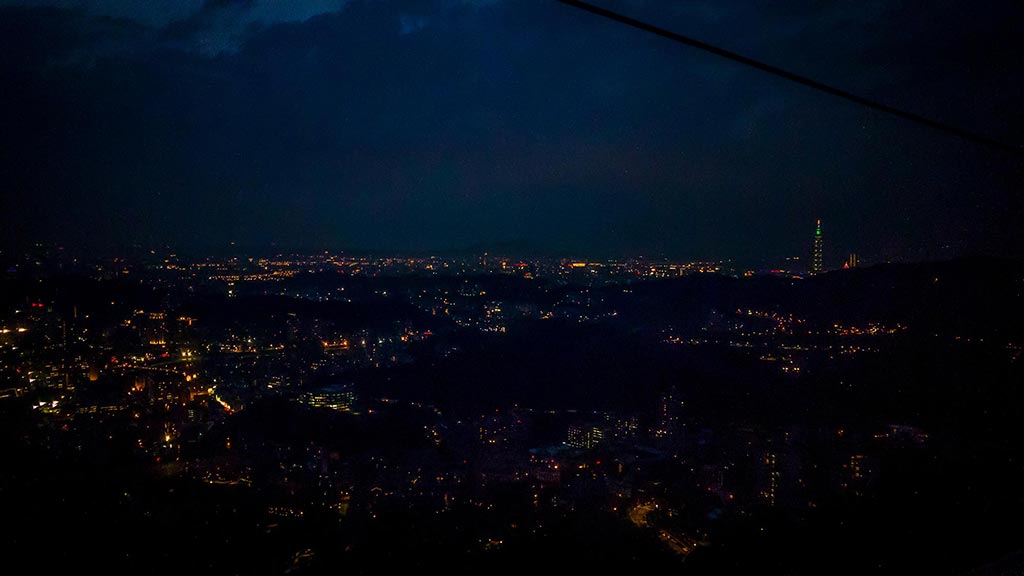
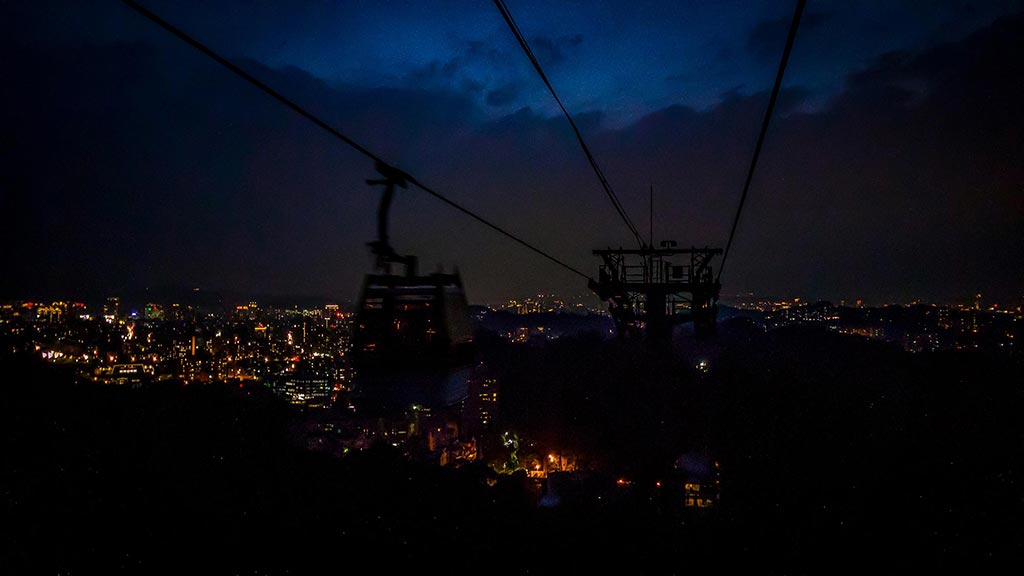
Thus, the metro took us back to the city center. So nothing stood in the way of dinner and we decided without further ado to go to a restaurant inside a hotel that we already knew from previous explorations. Here we toasted our last day in Taipei with Taiwanese beer, because tomorrow we were supposed to go to the southern city of Tainan.
Day 9 – On the train to Tainan and the performance in Kaohsiung
It is our last day in Taipei and we started the journey to the last station of our musical Far East trip. The trip to the relatively small city of Tainan marked the last leg of our journey and we carefully checked that we had packed all the things that were now safely stored in our overflowing suitcases. Except for a few sneakers, which were hidden under a bed, this seems to have been successful.
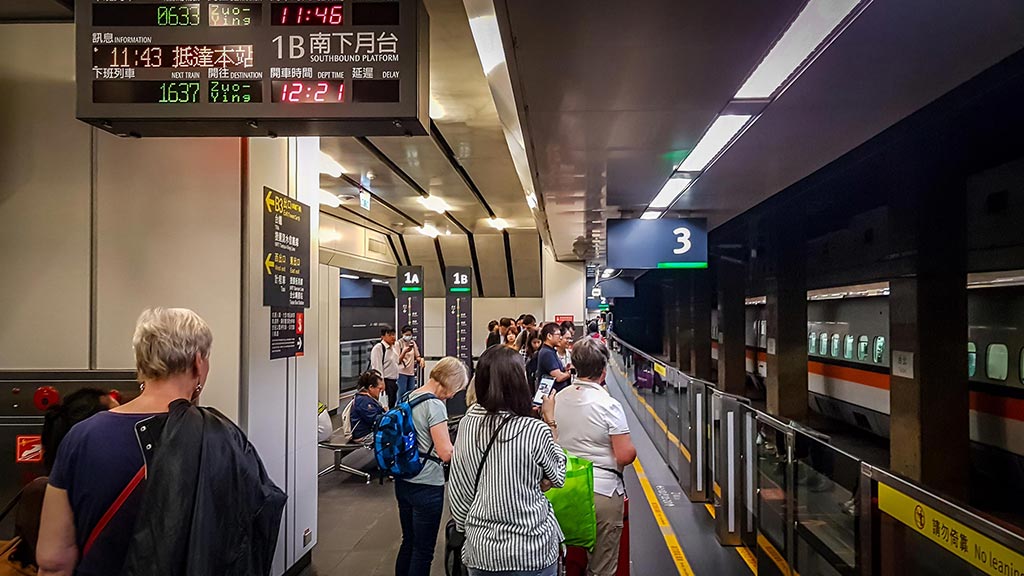
We were picked up in time by our two cabs, which quickly took us to Taipei Central Station, where we were already met by Michelle, who had already figured out in advance where in the station we had to go. The main station is not only used by the metros and normal trains, but also by high-speed trains, which, however, run underground. With our old friend, the elevator, we went to B2 (In Taiwan and China, the floor count is a bit different: the first floor is 1 and everything underground is numbered with a B, which stands for “below”). There we also found our platform and the exact spot where our car would stop without any major difficulties.
Now the train was on time and as Germans we were very envious. The train can best be compared to an ICE and there was more than enough space for people, wheelchair and luggage. As the train went on, the landscapes, peppered with rice fields, houses and a mix of both, passed by in no time at all, interrupted by one or the other tunnel.
After only 1 1/2 hours we were 305 km further south and the sultry heat, which we were already used to from Taipei, greeted us again with its wet embrace. From Tainan Central Station, which to our surprise is located quite far outside the city center, we now drove in two cabs to our hotel, which came into our view as an impressive box. It revealed itself to be a very stylish new building with an impressive lobby that opens up to the roof, with the rooms being spread out over 12 floors in tours around it. We had to hurry to move into our rooms, because only half an hour later we took a big cab to our gig in the neighboring town of Kaohsiung.
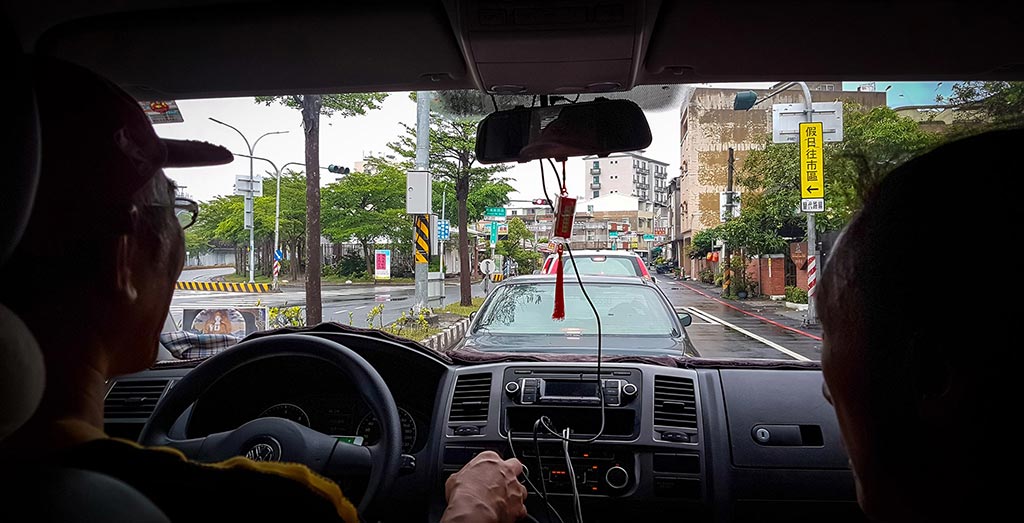
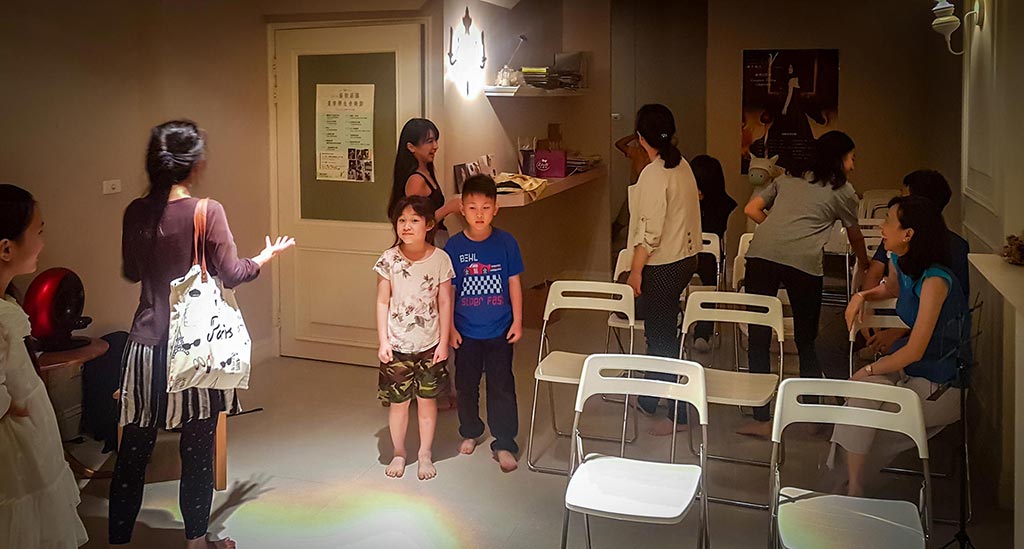
After this refreshment, we went on to the music studio, whose interior architecture was modelled on a room in the classicist style. We were greeted by several young students of Veronica and everyone was eager to meet the visitors from the far west. Unfortunately, our students had not had the opportunity to get used to the piano or even to practice, so they went to the piano with mixed feelings. But we found out one thing:
Apparently the mixture of high humidity, full stomach, high temperature and strong thirst (because our hostess had unfortunately missed to buy something to drink) helps to counteract the stress and to our all surprise Waltraud, Tatjana and Ursula played really well! Our listeners also seemed to be enthusiastic, although we doubt whether they really understood what it means for older people to play on an instrument they just learned (apart from the other circumstances). Nevertheless, many cell phones were in our hands filming our concert, which is a good sign, as we now know. After our performance, seven more students of Veronica’s played, starting with two 7-year-olds with relatively easy pieces and ending with two adults who played (a bit too) difficult pieces by Chopin.
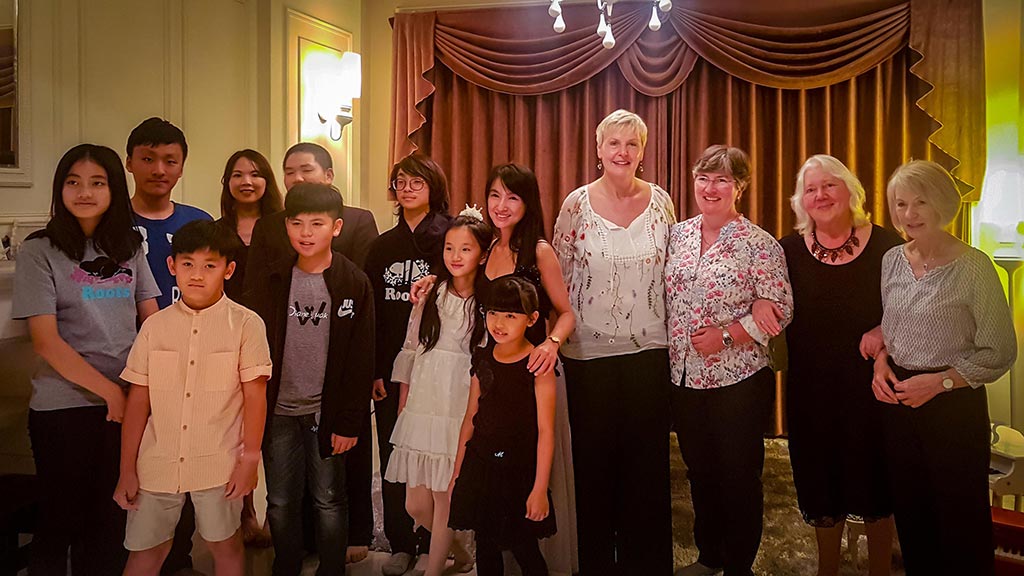
All in all it was a very interesting presentation and despite all circumstances a complete success for us! But now we quickly wanted to go back to our comfortable hotel room, because the next day at half past eight our tour with a guide through Tainan and its surroundings should already start. But first we had a cocktail at the hotel bar as a nightcap for a good sleep!
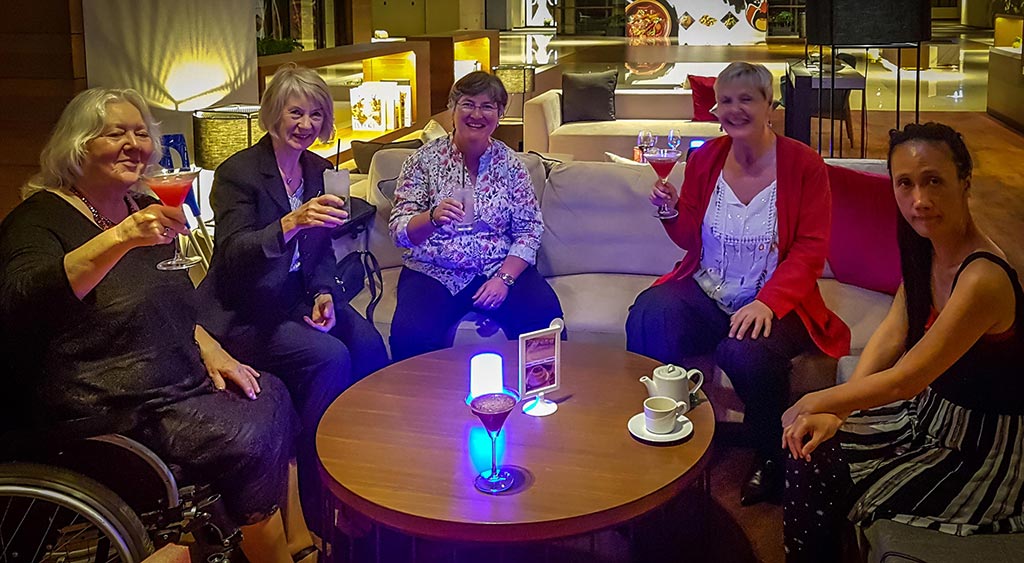
Day 10 – The excursion to Sun Moon Lake
The first night in the subtropical Tainan… Well, you didn’t notice too much in the room, because the air conditioning provides the comfortable temperature of a Central European and the cloudy sky would easily hide the 30 degrees and the 100 percent humidity, if we weren’t used to similar conditions in Taipei. Even now, at 11:30 p.m. of the same day, you run into a wet wall of concentrated heat when you open the balcony door to get some “fresh air”. But the funny thing is: we all acclimatized quite well. Of course such air is not easy to tolerate, but normally the author would not set foot outside the door if he didn’t have to. But here it seems to be a bearable evil. It’s hard for me to say what the reason may be. Is it the food that makes you cope better with it? One thing is for sure: in spite of the humidity and the excess of water there are only a few mosquitoes flying around and that is really more than pleasant (addendum: nevertheless I came home very banged up, but it could have been much worse…)!
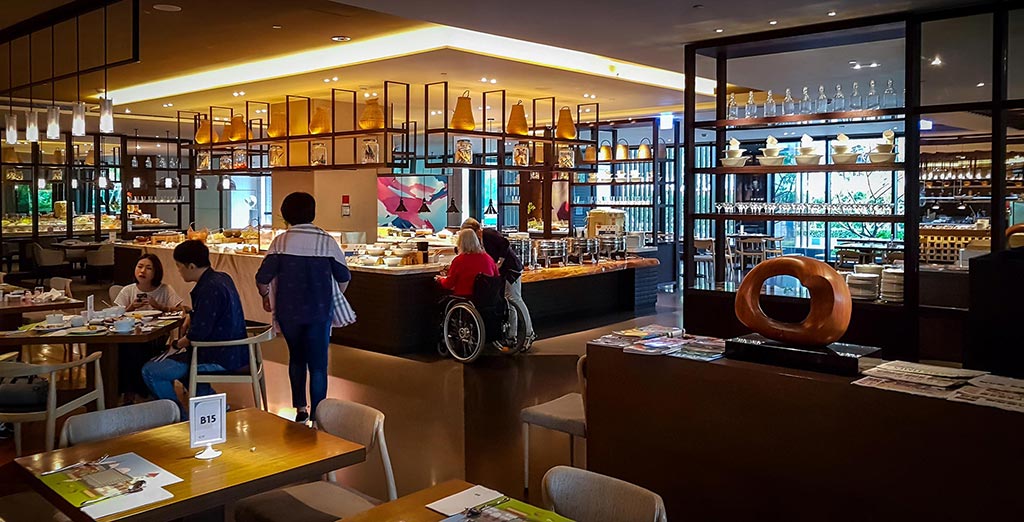
The first highlight of the day was definitely the breakfast. While we were already used to some delicacies from the hotel, our expectations were again exceeded. At different food islands culinary specialties from different parts of the world could be selected and also the already in Beijing dear-acquired soup kitchen prepared everyone its or their Asian deliciousness. The difficulty here was rather not to eat too much, since on our trip there was also a lunch on the plan, for which we had finally paid in advance. So at half past eight our tour guide William picked us up, who had driven up in a big van and who can even load Waltraud’s wheelchair (meanwhile the “old one” again) without having to fold it up first.
So the day started well! William is a Taiwanese man with Chinese roots who turned out to be extremely friendly and helpful. His stories about Taiwan, its people and culture were not just a must, but came from the heart – at least as much as his interest in our culture. We soon realized: here we are in good hands! The author slept through most of the 3-hour drive, but in the waking moments he experienced many impressions of the rural side of Taiwan and that is at least as interesting as the never-sleeping city of Taipei.
There are rice fields as well as fish and oyster farms lined up and every now and then one sees one or the other stray dog, which however always seems to make a cultivated impression. From my own experience I know that by far not all wild dogs lead such a seemingly good life. Take Mexico as an example, where the poor animals are at most “lovingly nudged” with a kick. Here, however, the animals always find a good soul, which provides them with food and some love. It can ultimately be traced back to the Buddhist religion, according to which good things happen to those who also bring good things into the world. karma.

Sun Moon Lake is located approximately in the middle of the country, i.e. 161 kilometers north-east of Tainan. We first made a detour to a viewpoint, which houses a futuristic new building by a Japanese architect and would also make a good set for a science fiction movie. From here we got to see the lake for the first time. What makes the lake so special in my eyes are the mountains surrounding it. They are up to 1600 meters high at most, while the lake itself is at 700 meters altitude.
As already known from the other mountains around Taipei, these are also densely forested and from everywhere you can hear the sounds of the animals hiding between the branches. All in all Taiwan is a very natural island, apart from the metropolises of course. Everywhere you can find nature reserves on the map and it is no exaggeration to speak of a small paradise – provided you can cope with the climate. From the viewpoint we continued our trip towards the lake and came to a mixture of village and tourist metropolis with a lot of hotels, which were surrounded by the meanwhile well known small street restaurants.
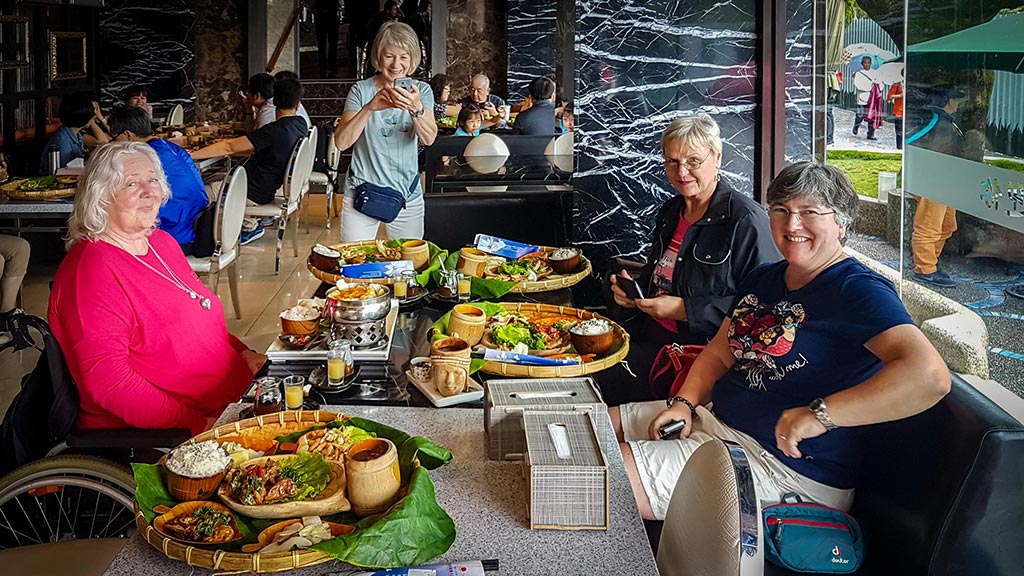
At a restaurant located in a hotel we had lunch and were honored with traditional cuisine of the indigenous Thao tribe of this island, consisting mainly of chicken and seafood. We were served bamboo, mushrooms and milky, very tasty rice wine. What I noticed for quite some time about the Chinese and Thai cuisine is the low carbohydrate food. Of course you eat rice with your meal, but here it is really a side dish and if you want to enjoy all the other delicacies, there is hardly any room left for the rice. It is best enjoyed in small portions in combination with the different dishes and you are surprised that even as a good eater you often leave half of the rice bowl standing because you are saturated with the many vegetables and other dishes. By the way, this also has a positive effect on the scales!

After the meal, a boat trip across the lake followed with a stopover at a temple, where we were allowed to take along a variety of interesting books about Buddhism in English and Chinese as well as music CDs free of charge. We thanked with a donation for the temple. But in the end, of course, the view was the main focus and we were not disappointed. Once we arrived at our destination, we took a gondola ride up one of the nearby mountains, where we could take our time to look at the landscape and rest a little. Back on solid ground, we started our return journey, which we all felt shortened thanks to a power nap. The last item on our agenda was just to sit together and have a glass of wine together. Tomorrow was supposed to be the first day when we actually didn’t have anything planned, so we would have time to explore the hotel and the immediate surroundings.
Day 11 – A “free” day
The penultimate day of our trip has begun and today we have a premiere for us: we all have the day off! No planned trips, no early rising. But it soon became clear that we are restless souls and so on this day our group split up to take individual tours with and without bikes, which could be rented in a convenient way at the hotel. Gabriele and I decided to first explore the hotel’s offers in more detail, only to find out, slightly disappointed, that the so-called “Health Club” is merely a rather emaciated version of a gym and, apart from a few running machines and light dumbbells, didn’t have much else to offer. We didn’t feel like swimming today and so we decided to venture out into the tropical heat after all. As on the other days, the sky was quite cloudy again and we had the impression that it could start raining any moment. But the weather was gracious to us and we endured the extreme sultriness with as much composure as a Central European can muster. But our excursion was richly rewarded:
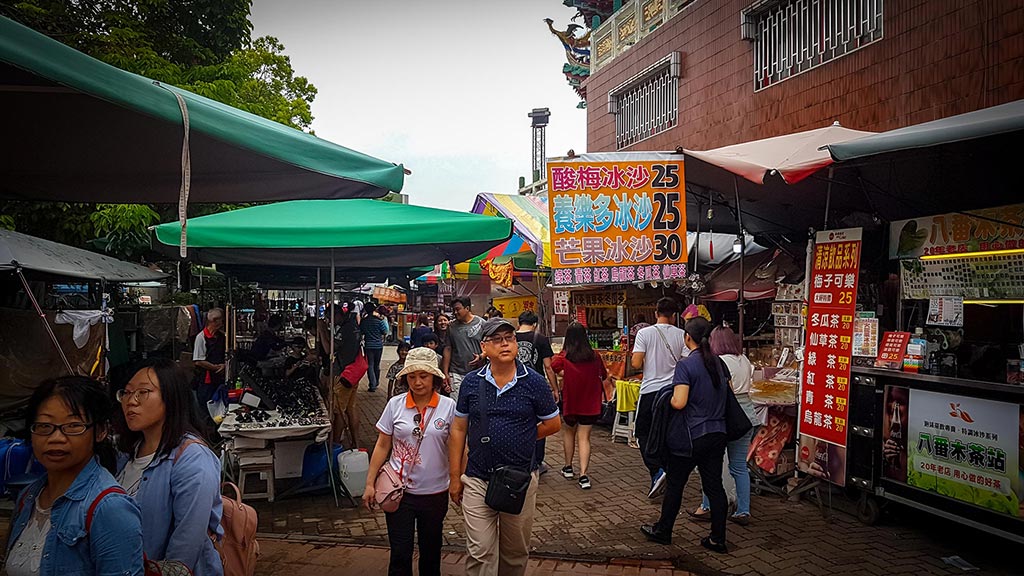
We wanted to explore a bit the Anping District Tainans where our hotel was located and one of the sights included an old fort that had been built almost 400 years ago by a Dutch trading empire. The Dutch were the first foreigners to leave a permanent “footprint” in Taiwan. Not only did they bring the coffee bean here, but also the sugar cane with which they wanted to trade from here. By the way, Taiwan (which is also known here as “Formosa”) got its name from the Dutch: first they called Tainan, which was the former capital. “Tayowan” or also “Tayovan”, which can be traced back to the native inhabitants of this area. In the course of time the whole island was named after this city and “Tayowan” finally became Taiwan in Chinese.
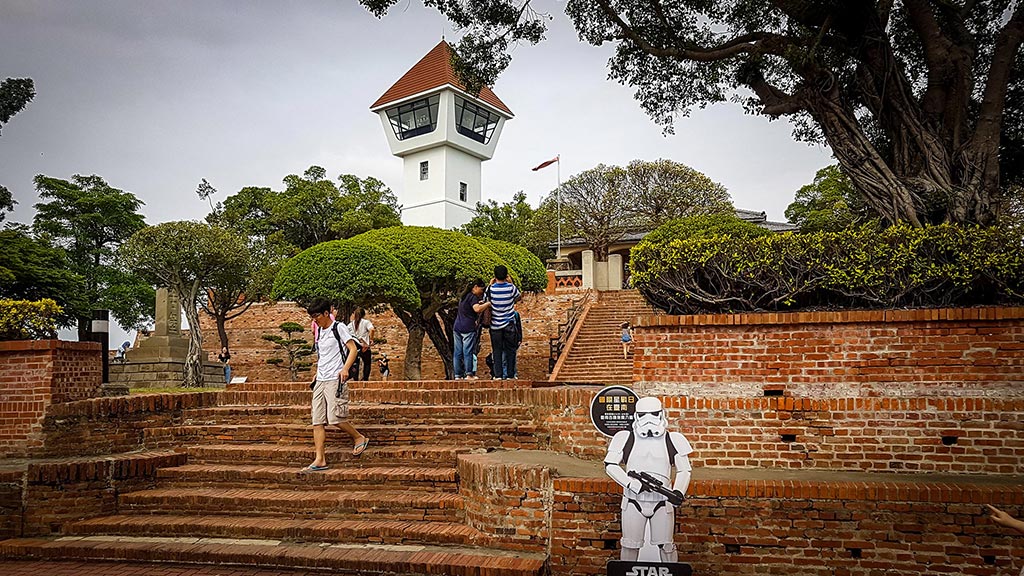
In the fort we visited, we were quickly joined by a very nice guide who was only too happy to tell us the history of this place – and for free. We also learned that the Dutch regency lasted for only 38 years, until the last Dutch commander was defeated by a Chinese commander and he had to face a court in the Netherlands with his head bowed because he had lost the precious fort. Actually, it was not just one fort, but two, and these forts were built of stones that were initially imported from China.
In the fort we visited, we were quickly joined by a very nice guide who was only too happy to tell us the history of this place – and for free. We also learned that the Dutch regency lasted for only 38 years, until the last Dutch commander was defeated by a Chinese commander and he had to face a court in the Netherlands with his head bowed because he had lost the precious fort. Actually, it was not just one fort, but two, and these forts were built of stones that were initially imported from China.

We had a real experience when we were exploring the local temple. Just as the author was about to photograph the inside of the temple, a multitude of loud bangs could be heard from outside, which turned out to be the start of a ceremony and were caused by an incredible number of small firecrackers. A crowd of people had gathered around them, many of them in pink clothing, while again some people marched through the streets masked as demons, and while other men, who were already quite old, flagellated themselves with a burning object and naked upper body.
All in all, it was a spectacular spectacle that did not diminish in volume even when the firecrackers fell silent, as their noise was now replaced by the numerous drums and cymbals that provided the beat for the choreography of the demonic-sounding beings. Meanwhile, a small litter of four men was also carried into the temple, which was depicted as if the litter had its own will and could only be carried into the temple with difficulty.
It was a truly magical moment! I learned later that it was the anniversary of the Daoist goddess Mátsu. In the 10th century she is said to have been a human being first, but she developed supernatural powers early on and also died early and was raised to the pantheon of gods. Her deeds included defeating two demons, which became her bodyguard from then on. Matsu is still worshipped today as a protector of sailors. Finally, we found a really good noodle soup restaurant where we had our meal.
Now it’s 5 o’clock in the afternoon and I’m sitting comfortably in my room again and enjoying the well-tempered air of the air conditioning. The last point of the day will be a pleasant bath and an early night’s rest, because tomorrow we have another exhausting last day ahead of us.
Day 12 – New sides of Tainan
Now almost two weeks have passed since our musical group started their tour to the Far East. Today we had another excursion and after breakfast our guide William picked us up again in front of the hotel to show us the city of Tainan. Today the sun finally managed to fight its way through the haze, but this made the climate less bearable. What decreased in humidity (a little bit) was now compensated by the heat and the temperature shot up to 32° C.
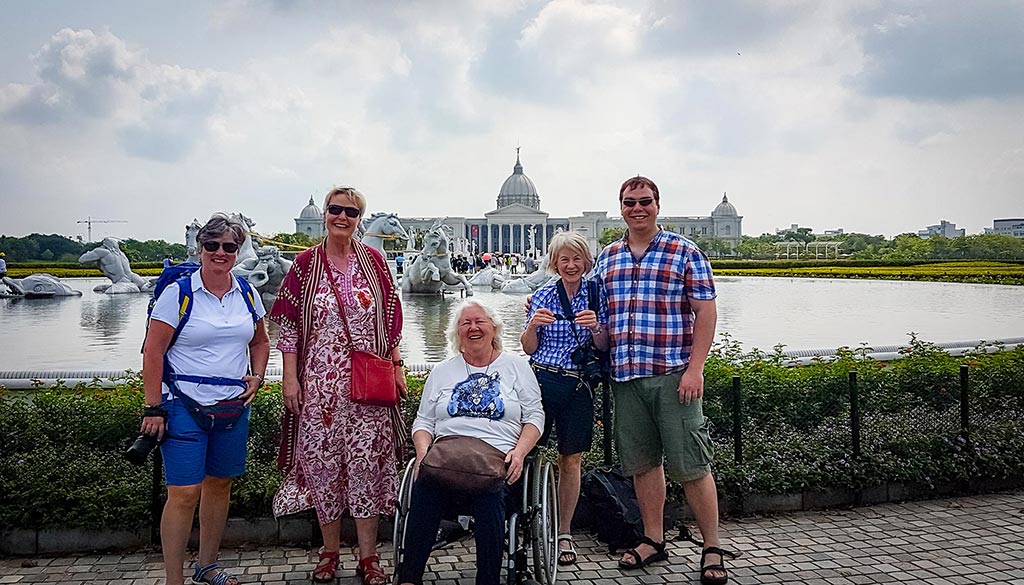
This time we went to the Chimei Museum, which a very wealthy resident once had built for the city. Built in the neoclassical style, it looks a bit like the white house in Washington with the central dome and the two side wings. Surrounded by many green spaces, it opens up to the visitor first via a fountain, behind which a long bridge leads over a moat, on the sides of which statues of the Greek deities are placed. In addition to the aforementioned dome and wings, the building also includes a covered courtyard, which was decorated with Greek columns in the Ionic destination. The interior of the building was also extremely tasteful and after William had handed over the tickets to us, we entered the exhibition area of the museum. There was a lot to see: the lower first floor had a long corridor, the sides of which were decorated with more statues. To the sides we could explore the different exhibitions.
At first, several rooms with weapons and armor of the different peoples of the world were to be explored. Starting with the German knight’s armor, Asian war equipment and even the weapons and armor of Indian and African tribes, everything seemed to be depicted that might come to the mind of the enthusiast of medieval war equipment. A less martial performance was made in the next exhibition by the preserved animals and when you left this exhibition and found yourself back in the entrance corridor, the hall at the end of this corridor already awaited you with a multitude of lively sculptures by the famous sculptor Auguste Rodin.
The upper floor also housed two exhibitions with a very vivid collection of the most diverse instruments (allegedly the largest exhibition of its kind in the world) and on the other hand with several rooms of European paintings from the 15th to the 20th century. A very large gift store completed the overall very positive impression of this museum.
At this point I would like to emphasize the inclusion of modern media, which illustrate the history or use of various instruments or tools but without attracting negative attention. The only flaw, however, was the prohibition to take pictures of the exhibits, because the author would have liked to take home some memories in a pictorial version. At least some snapshots of the entrance could be taken, so that one can get an impression of the architecture of the building.
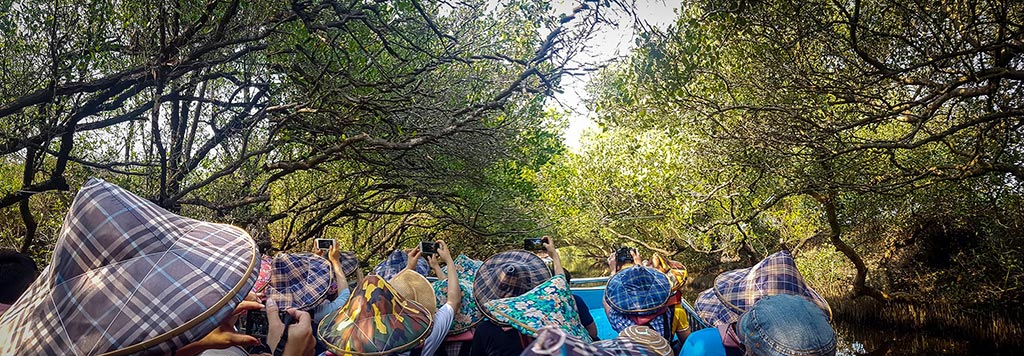
Now it was time to get back into the humid heat. By car we drove to the city center where we had a snack and then we went straight on to a boat tour through the mangrove forest. Just the queuing alone with the surprisingly large crowd of locals who had the same idea for this day was a small experience. Equipped with a life jacket and the typical Asian conical basket hat we entered the boat, which rather resembled a big raft, and sat down on small stools.
You didn’t have to understand Chinese to follow the tour guide there when he pointed to the animals that inhabit this very unique ecosystem. Crabs as small as insects up to fist-sized specimens were represented as well as the herons, which were happy about such seafood. Every now and then it was also necessary to avoid the deeper branches of the mangroves before they carried water to an all too curious passenger. After this tour we made a side trip to a local tea store where we enjoyed excellent tea and one or the other took a present for home.
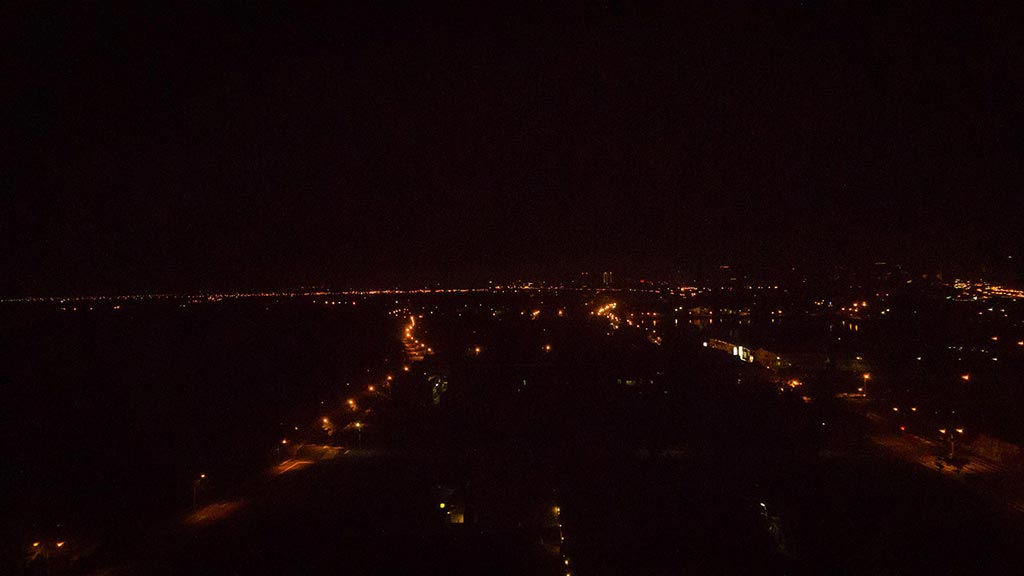
Now we sit again in the hotel on the balcony, drink Taiwanese beer and wine and let the day and now unfortunately also the musical vacation end, because tomorrow we are going back home.
Day 13 – The journey home
The day of departure has come. The suitcases were packed and we enjoyed our last breakfast at the hotel. A mood of farewell spread throughout the group, mixed with the joy of being allowed to sleep in our own beds again and above all to be able to process the whole trip. The sultry heat, which was again very noticeable on this day, we would certainly not miss!
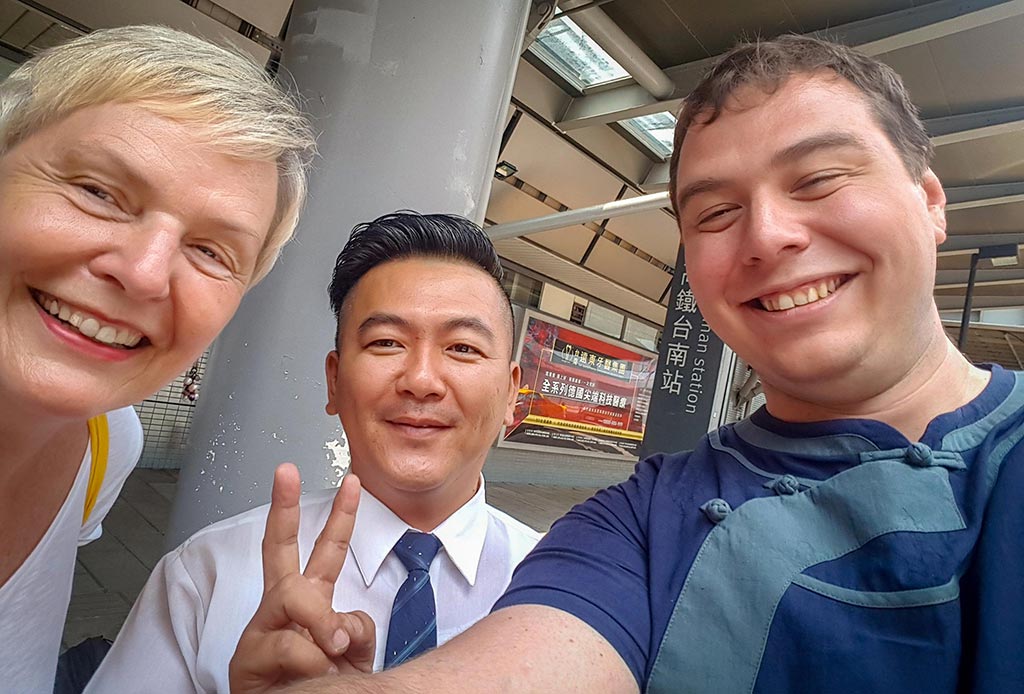
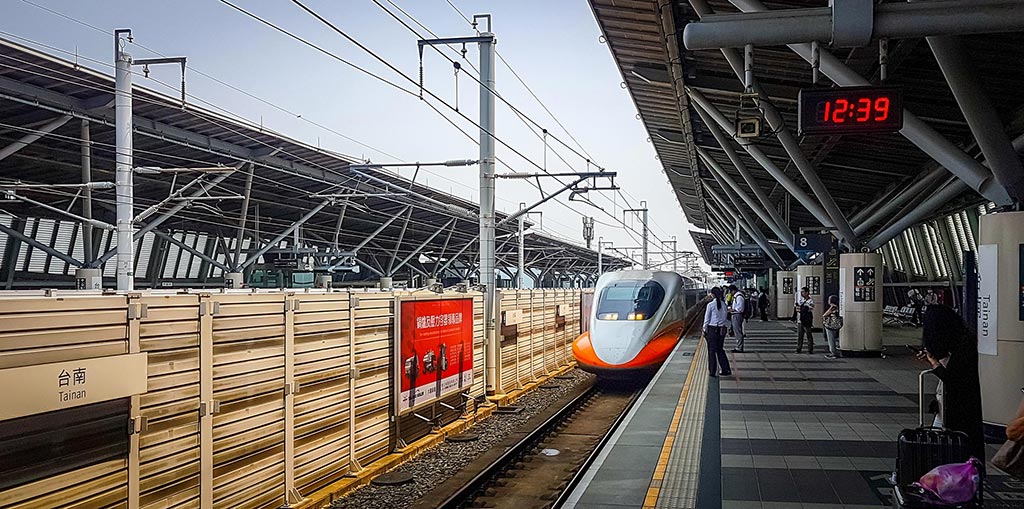
The cab ride to Tainan’s central station, which is quite far away, turned out to be quite entertaining for Gabriele and Johannes, because Jackie, the cab driver, had a great pleasure to talk to his foreign guests. We were already the second Germans he transported today, but usually travellers from India were his most passengers. After a funny photo with him, we said goodbye and entered the building with the rest of the group, who had a quieter cab ride behind them. We quickly found our track, the train arrived on time and we boarded the train.
With more than 250 km/h we went back to Taipei, where we could get off directly at the right terminal after a short change to the local metro. A few (!) elevators later we had checked in and passed through customs. We knew: this would be the most exhausting trip so far, because this time we flew through directly to Germany via Beijing without taking a breather. And so we perceived the 3-hour flight to China’s capital as just a little intermezzo. But this flight had one special feature: thanks to Waltraud the whole group was allowed to board the plane first and did not have to wait in line with the other passengers. An experience the author never thought he would have had!
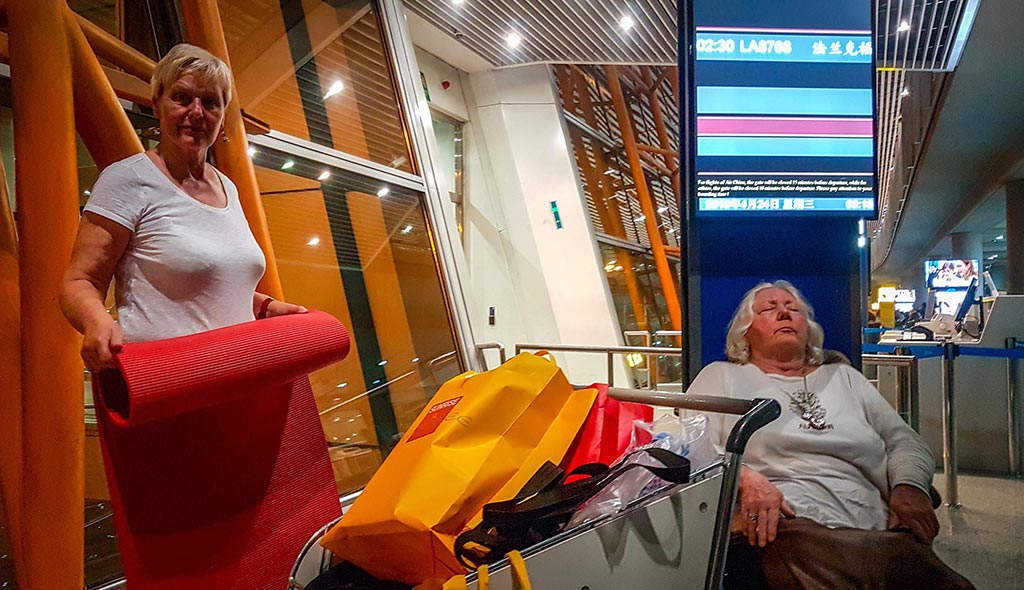
Arriving in Beijing we felt directly how different the atmosphere is compared to Tainan. The people here are also nice, but the military looking drill of the airport staff cannot be overlooked and heard. When we arrived back at our gate for the next flight to Frankfurt, the most tedious part of our journey began: waiting, waiting, waiting. We arrived in Beijing at about 7 o’clock in the evening and our plane was not supposed to take off until 2:30 in the morning. And so all the items that were available to us were turned into sleeping utensils. The mattress was rolled out and we tried to find some rest. Others took walks through the endless corridors of the airport and still others tried in vain to access the local WiFi of the airport – without success. Shortly before departure, Ejow, who had spent the last days with her parents, came to us again. The reunion was, of course, warm and invigorated the slumbering minds. The 9 ½ hour flight followed, which turned out to be quite entertaining for some, as the plane was by far not completely booked out and many could enjoy the luxury of spreading out over whole benches to sleep.
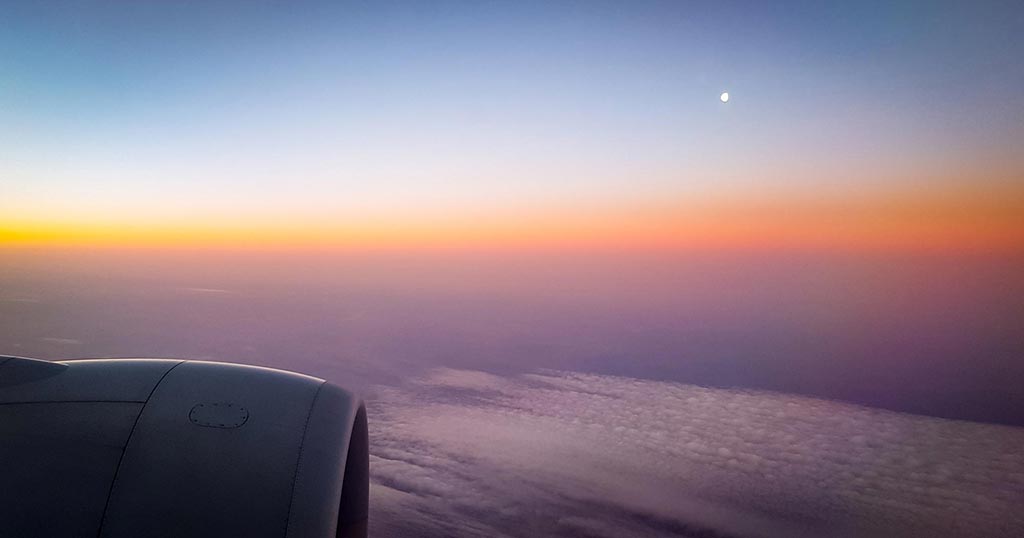
And now it was time again: we arrived at sunrise and enjoyed the view over the tiny towns and villages of Germany in reminiscence of the past two weeks. And compared to the size of Beijing, this view is not so far-fetched…
What is there left to say now? Well, especially the uncontrolled chaos of the German Railway immediately came to the fore, especially in direct comparison with the smooth running of the train in Taiwan… The tickets were booked, the seats were reserved and – the train didn’t run. The timetable had changed and we were thankfully not informed! After a hectic rebooking at the last second we tried to get on the train with our suitcases and the wheelchair, which had given up its service at the end of the trip, and drove slightly out of tune towards home. Well, at least you can rely on the train, that you can’t rely on them! Waltraud’s exit including service personnel was no less annoying, because just as we were about to enter the elevator, it temporarily gave up the ghost – since the cleaning staff in the lower part of the station had just decided to do their job on that very elevator – of course not in consultation with the DB service staff, who were very annoyed about it. In Germany, this description may not attract much attention, but if you just come from a very well organized country, where you can enjoy a much smoother use of public transportation despite the language barrier (by far not all people in China and Taiwan speak English), the difference is striking.
And this in Germany, which in Chinese is “Déguó” and means “Land of Virtue”!
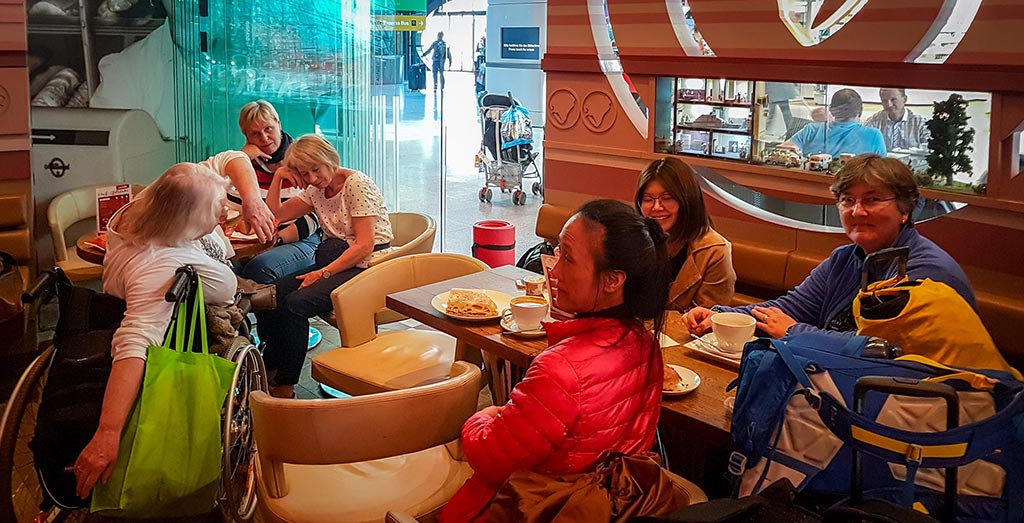
Day 14 – Summary
It’s day 14 and I’m sitting at my desk at home again writing these last lines. So two weeks have passed, but of course it seems to me and surely also the other travel companions because of the many experiences like at least double the time span. The trip was exhausting, it was tiring and above all the impressions followed each other in a dense concentration. It was sometimes nerve-racking, certainly very daring and extremely eventful. But above all it was unforgettable and beautiful!
It is always exciting to travel to another country and get to know the people there, to experience their culture and to be able to take off the corset of the usual once in a while to get into unfamiliar and exciting situations. Such a journey not only broadens the traveler’s experience in general – such an experience also keeps our own cultural peculiarities in mind and shows us that sometimes things that are taken for granted are not so obvious. This applies both positively and negatively. In short: you get to know yourself and your country better. Of course, you don’t have to make a trip to China for this – the people in our neighboring countries are also different and behave according to their respective socialization and you can’t help but draw comparisons between this country and your own.
China is of course a very exciting country. It has mastered the processes of industrialization and digital change, in which we all find ourselves now, in an astonishingly short time and, from a German perspective, is still threatening to gallop away from it. The few days we spent in China were at least enough to bring this to the fore. In Beijing, even the simplest newspaper stand can now be paid for with a cell phone. The Chinese government even had to intervene and force the sellers to accept cash again, because the tourists could not buy anything. Entering the forbidden city requires a very formal registration. Especially for foreigners, with name, passport number, date of birth and much more. Thanks to Ejow, who had accompanied us in Beijing, we managed this in 10 minutes at the entrance, because she was able to call all this up in her cell phone via QR code, which can be found everywhere at the entrance buildings, and without further ado she had carried out our registration in a hurry. In China they don’t use WhatsApp – they use WeChat (or Weixin), the Chinese equivalent, with which you can not only chat and make phone calls, but also do all the other activities described – and much more. Another example: while driving through the streets of Beijing, you are automatically photographed at every traffic light while driving. That’s probably not something that is difficult to swallow for anyone who attaches great importance to data protection. On the other hand, such monitoring also serves security purposes, and I have to admit that we always felt safe in Beijing. But in the field of high technology, I was assured that Beijing lags worlds behind other cities like Shanghai or Shenzhen.
The relatively few western tourists were also striking. Mostly Chinese tourists from other provinces had been seen. Accordingly, we ourselves were a sight to see, especially Gabriele as a tall, blonde woman and Waltraud in her turtleneck (although an older lady in a wheelchair on the Great Wall of China is certainly a curiosity). But that was in no case something unpleasant. All people, including those in Taiwan, had in common that they approached us very friendly and curious. One tries to get into conversation with hands and feet. When they also learn that we come from the “Land of Virtue” (Germany), the joy is always great! The many soldiers and civil servants you see can be quite intimidating just because of their formal military body language and yet, every now and then a smile comes over the lips of one or the other. All that is enough is: mutual respect. A respectful interaction with each other opens many ways and doors, both in China and Taiwan: a virtue that is sometimes missed in Germany, although it is actually so obvious.
Let us now turn to Taiwan. As already described from the day of our arrival, the country breathes a different air (and this does not only mean the sultriness). You notice it immediately when you see the people and walk through the streets. This country is very western and oriented towards Japan and South Korea. Google, Facebook and WhatsApp rule here, but digitalization didn’t seem to be as radically advanced as in China (we didn’t notice an app that controls everything). But that doesn’t mean that Taiwan isn’t digitally miles ahead of us. If you walk through Taipei, you will always find a WiFi network. Granted: most of them require an account and that means fees. But pretty much all public buildings also offer this service for free, which is incredibly valuable for tourists. The cleanliness on the streets, in the metro and in other buildings is outstanding. You will find a staff member of the respective institution at every corner who can help you in English (and without grumbling!). The metro not only arrives every few minutes, but it stops automatically at precisely defined sections. There are lines for the queues and everyone keeps to them. In the metro only drinking water is allowed. And everyone keeps to that as well. No foul odors, no dirt. The poles for holding on to are regularly disinfected and they never felt “sticky”. Oh, and the metro is driverless. It’s a bit unusual to stand at the front window, where a driver should actually be. And as I mentioned several times before, everything is well signposted, so you can’t really get lost in the city, let alone in the metro.
These are all things that I would personally wish for Germany. Above all the honest helpfulness of the people – whether from passers-by or employees.
Now let’s get to the actual topic of our trip: playing the piano for older adults. In China, we were received by an audience that approached our topic with great interest. We were told by Steve afterwards that especially the former Chinese Minister of Commerce Guangsheng Shi was very enthusiastic about the lecture and our concert. Also Prof. Ming Yang, who is known to all Chinese pianists for his high esteem, was all too happy to be available for a cosy chat.
For us this experience was sometimes surreal and overwhelming. When Gabriele prepared the lecture, she knew that piano lessons in China are very different from ours in Germany, especially with regard to her own method. Especially the tendency to technical perfection without keeping an eye on the musicality is often said to the Chinese, and often it proves true, as we had seen elsewhere. But Steve surprised us with his view that this new didactic approach, at least with regard to older people, is definitely something to make friends with in China. The future will show whether this will prove to be true. It can be said with certainty, however, that our listeners visibly enjoyed the concert with the sonorous, but not too heavy pieces, and that is a good sign!
